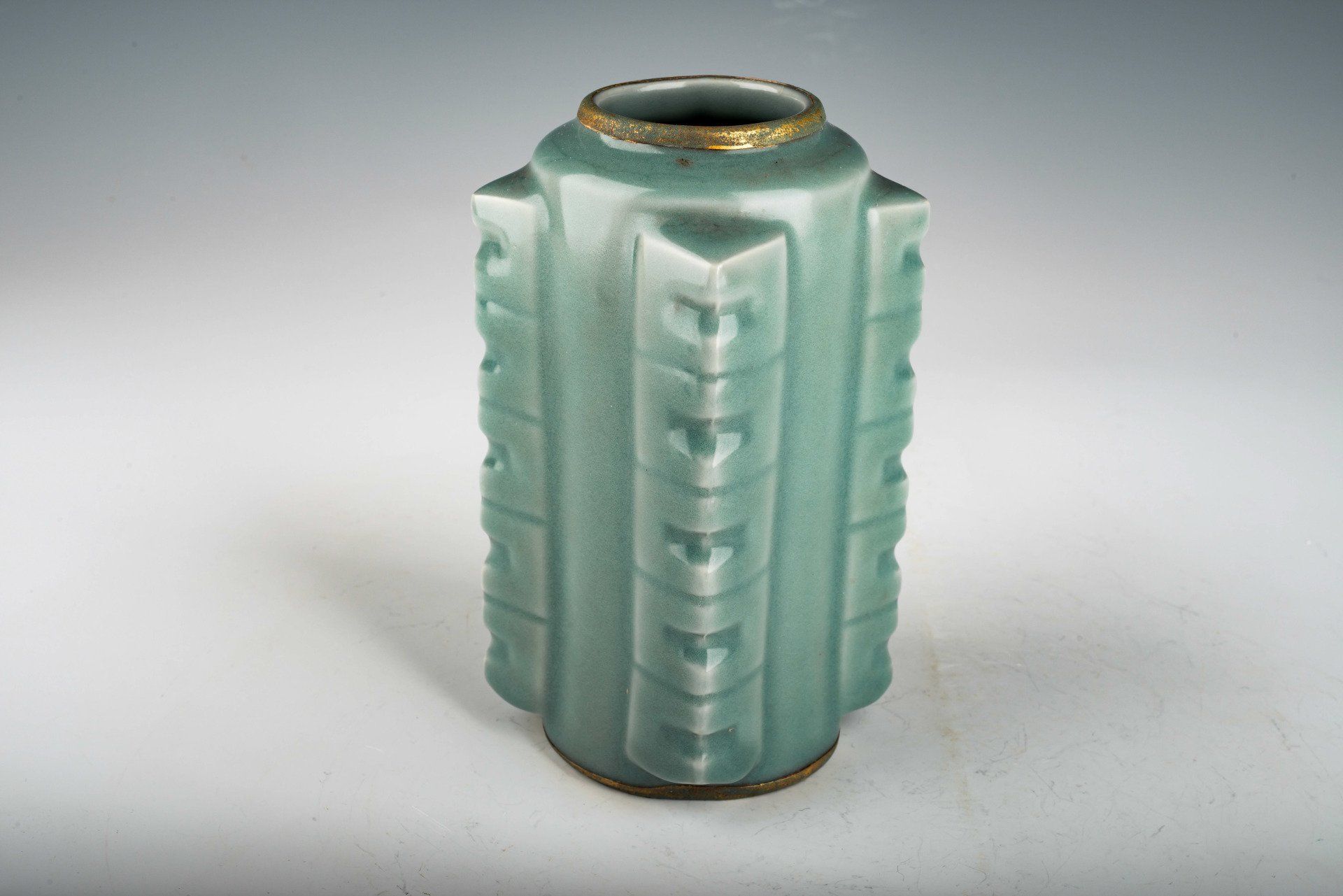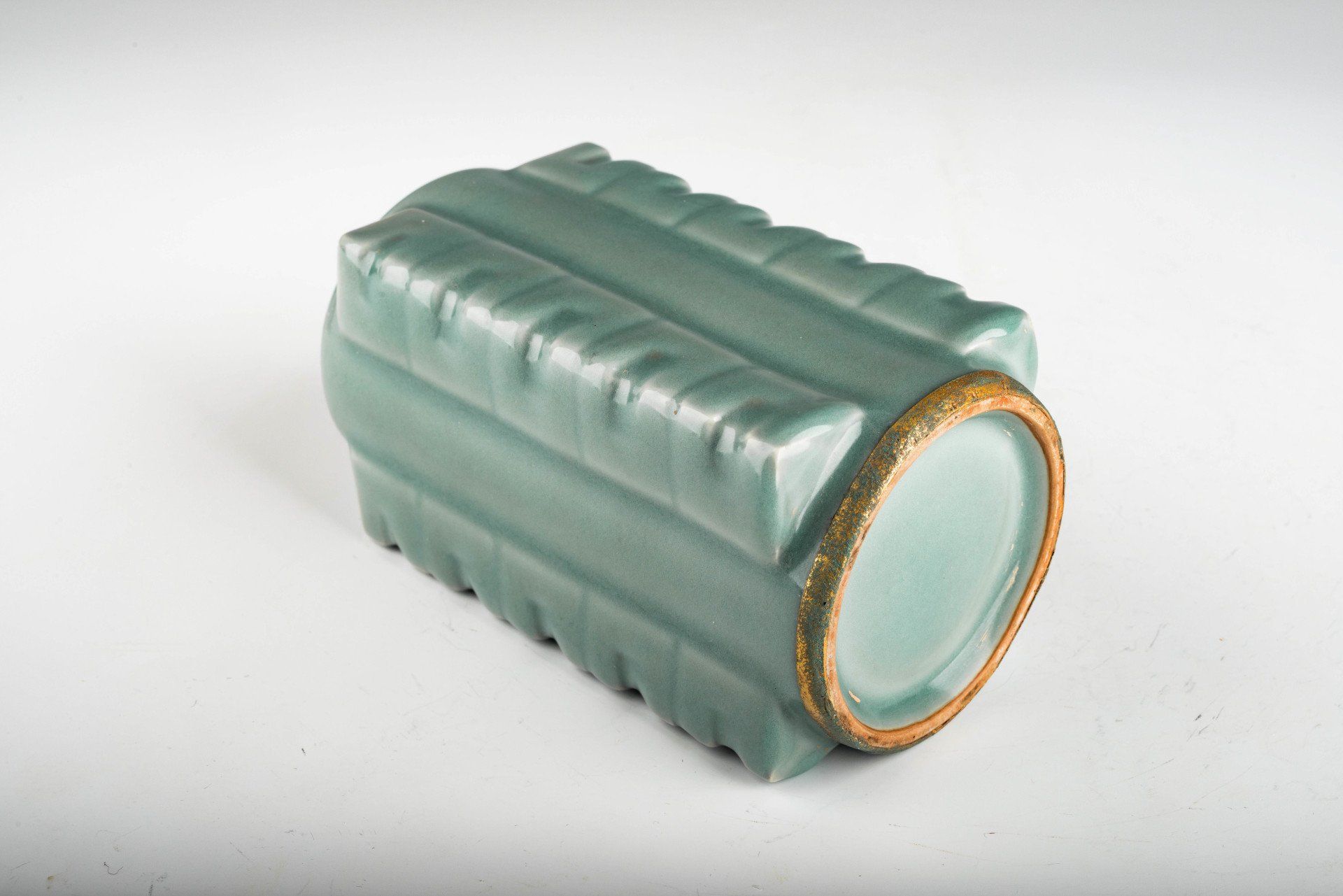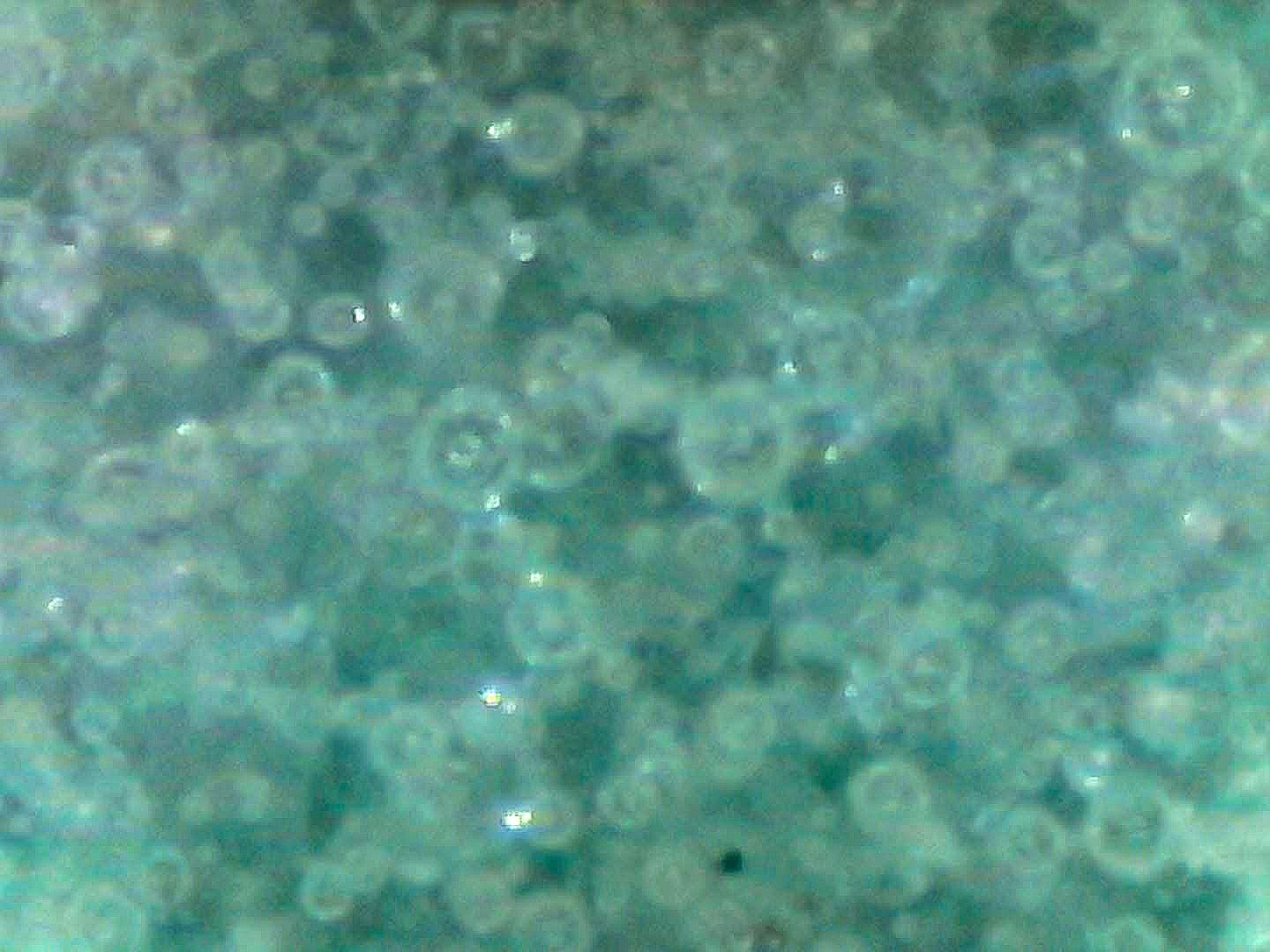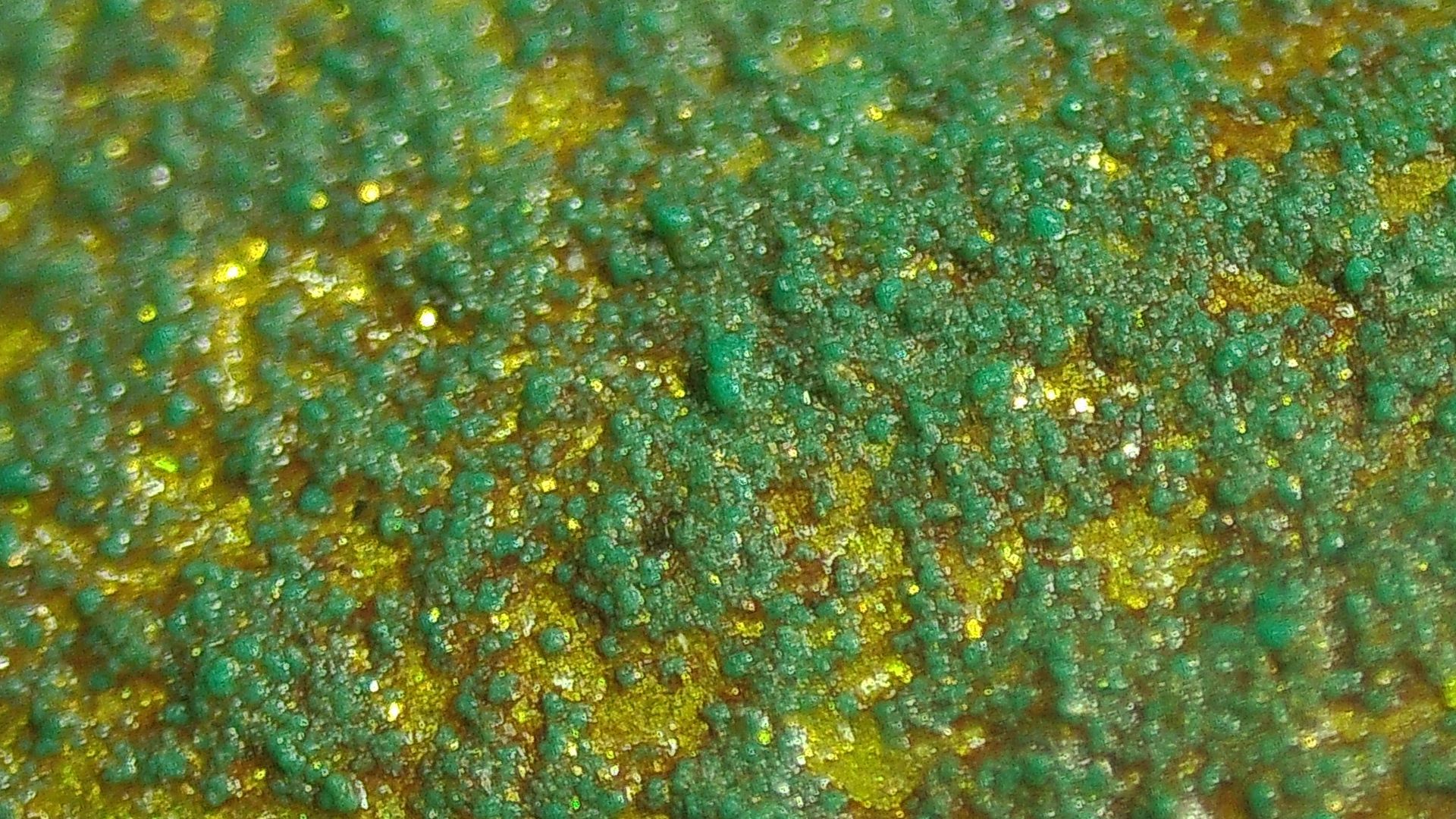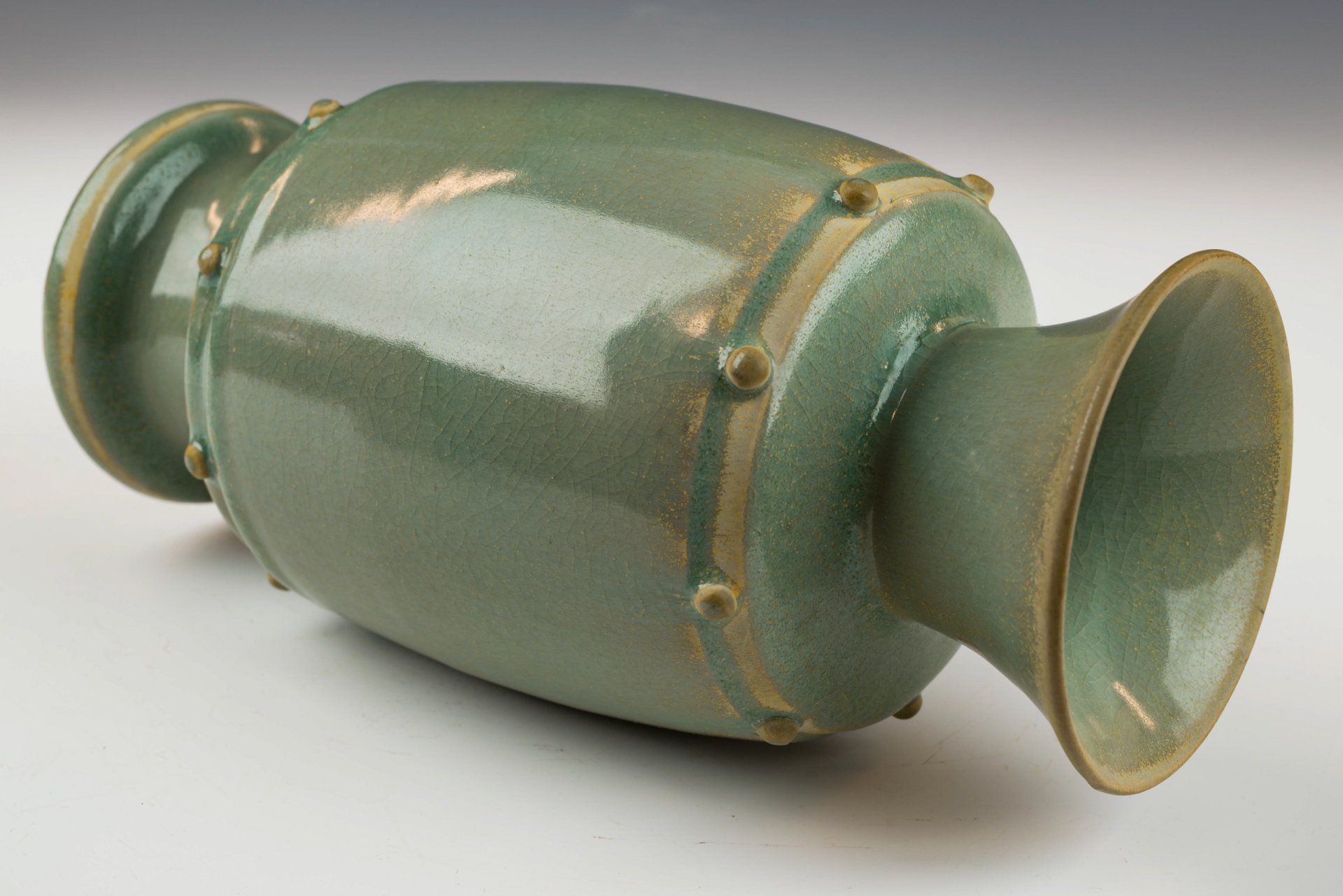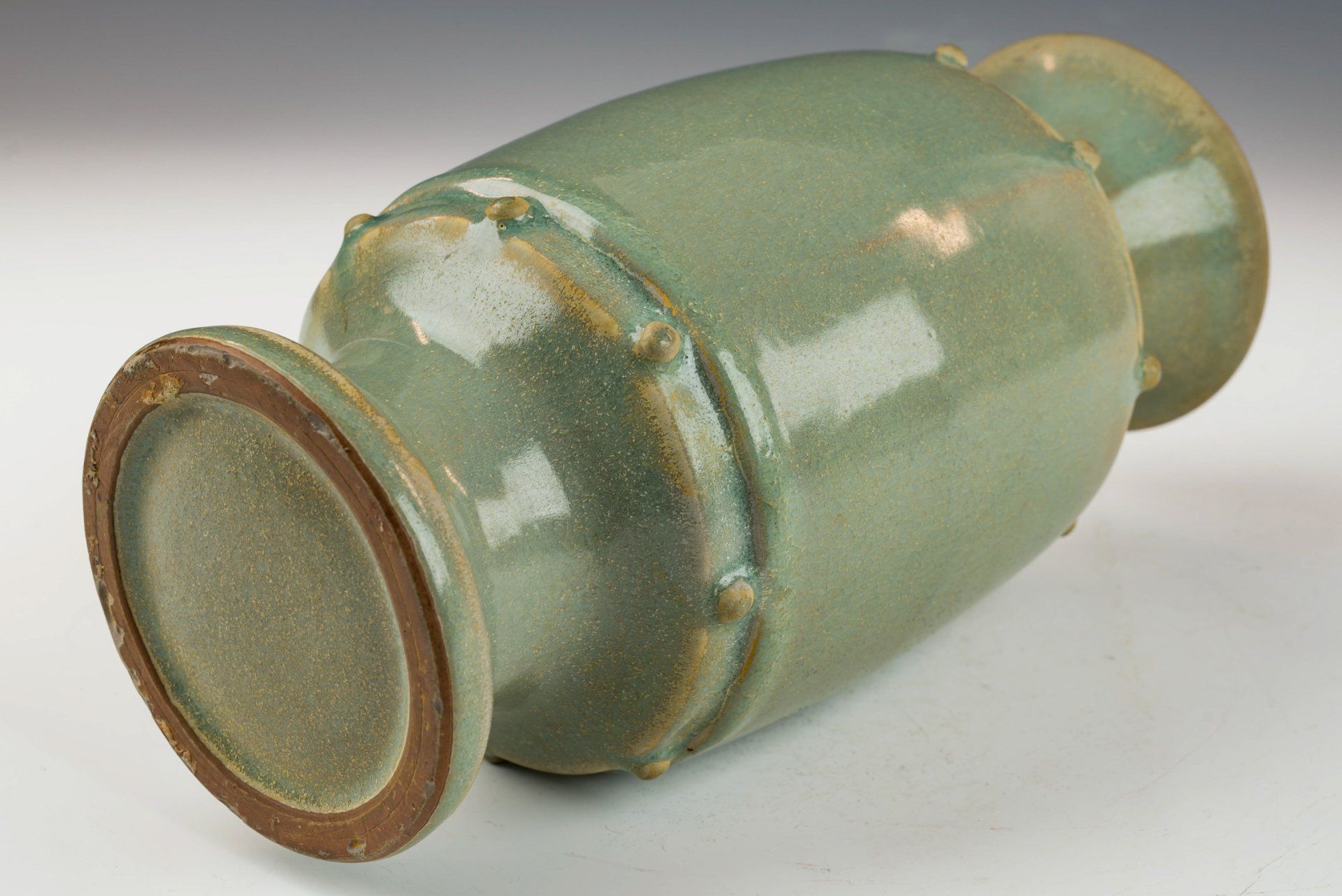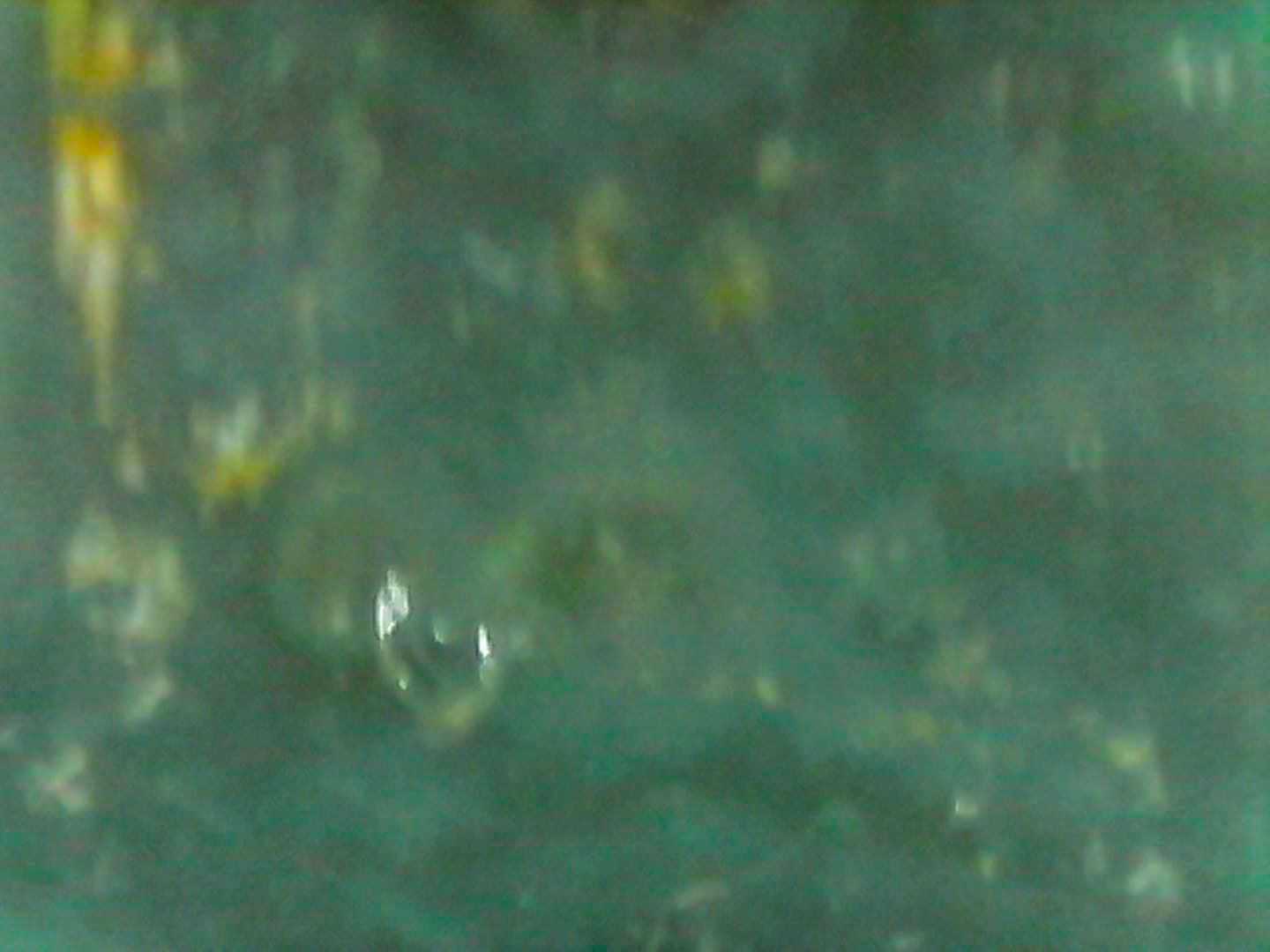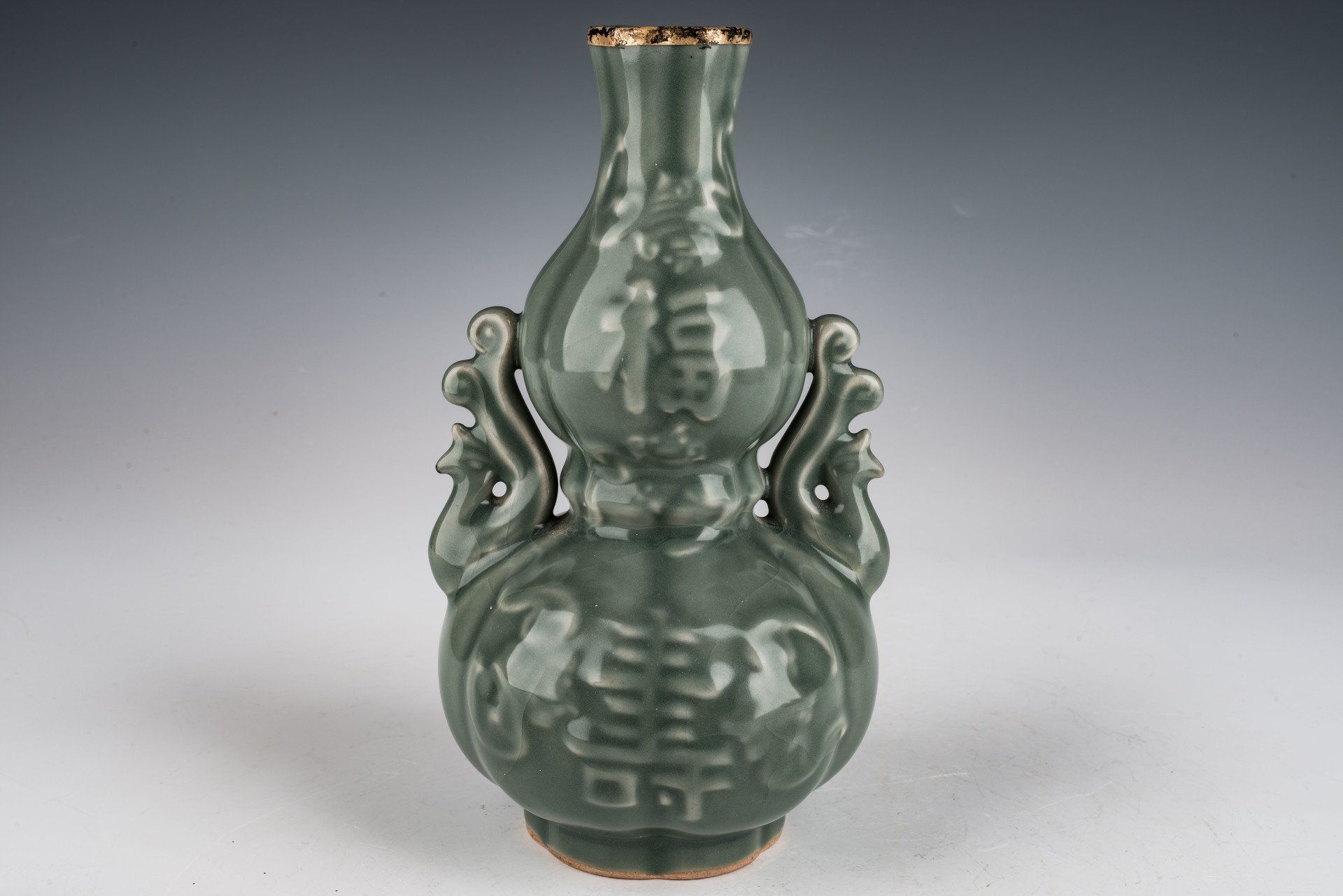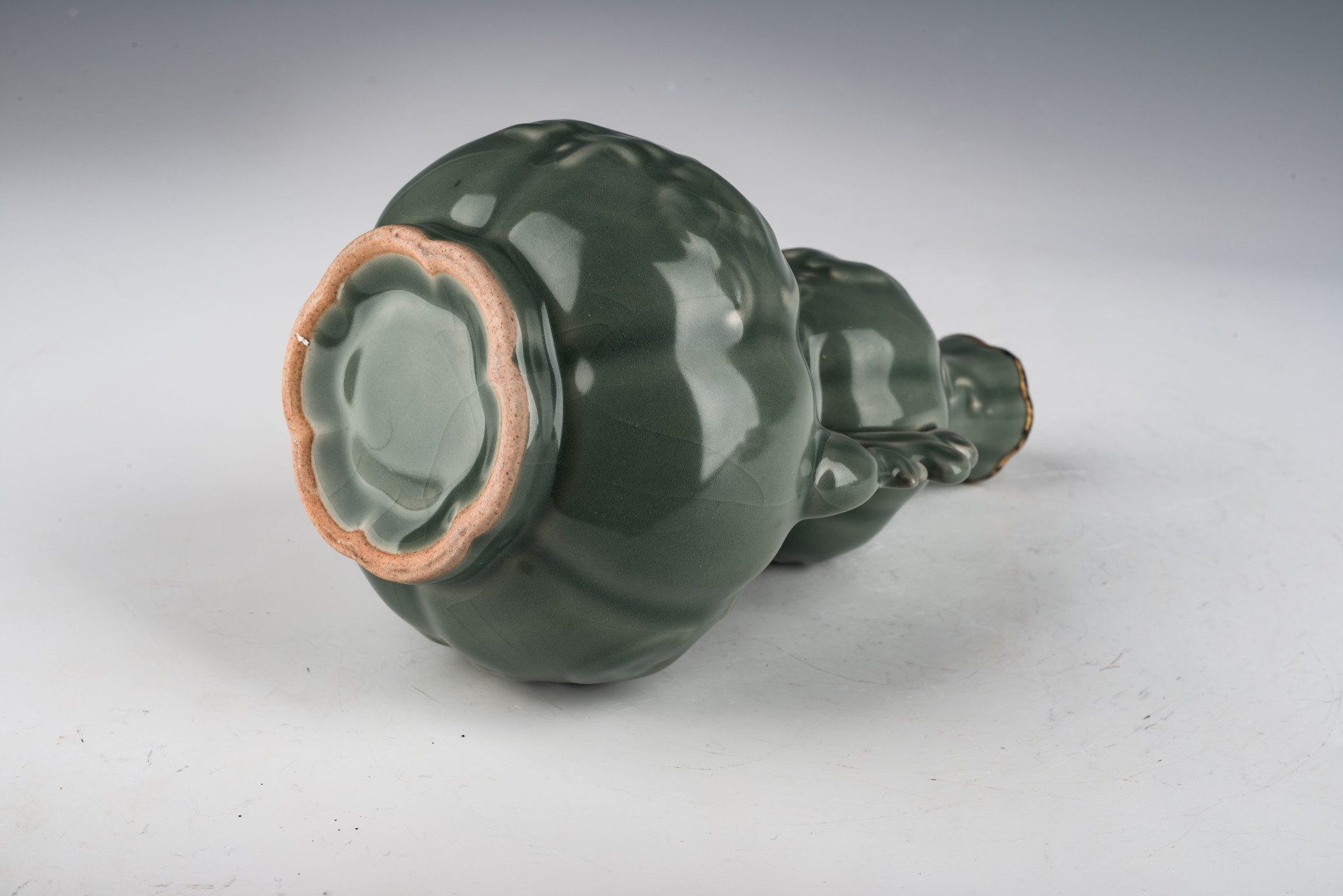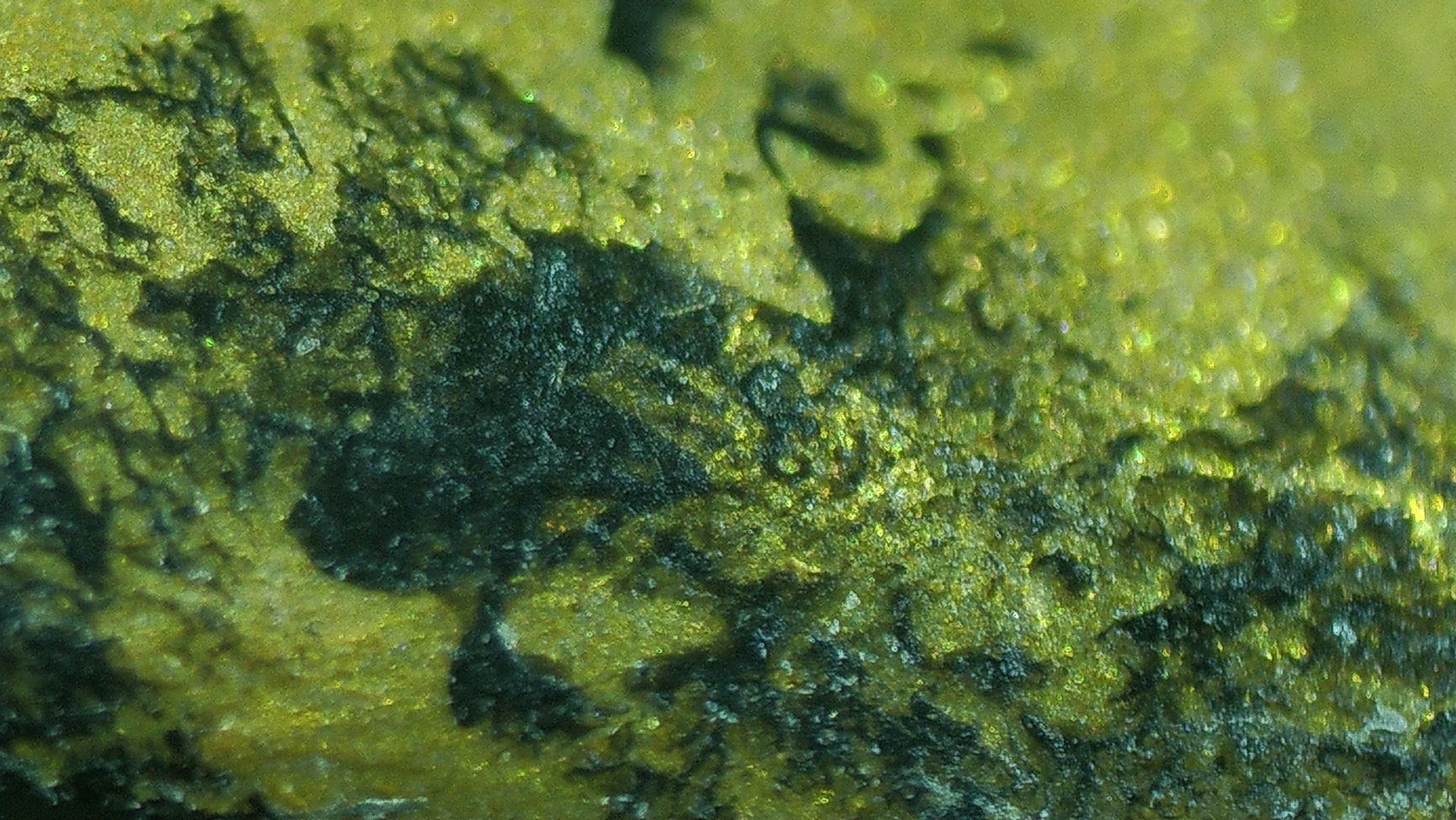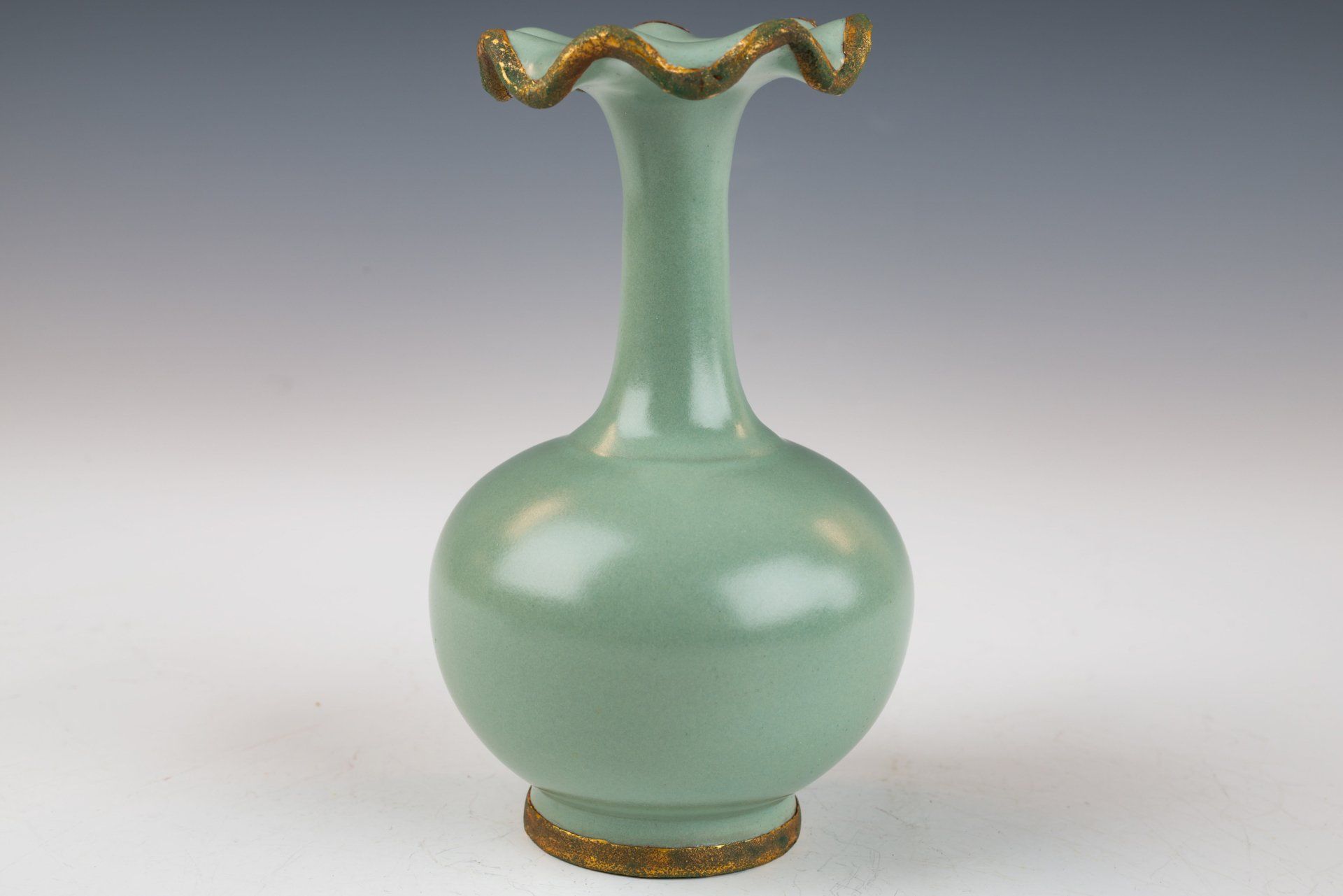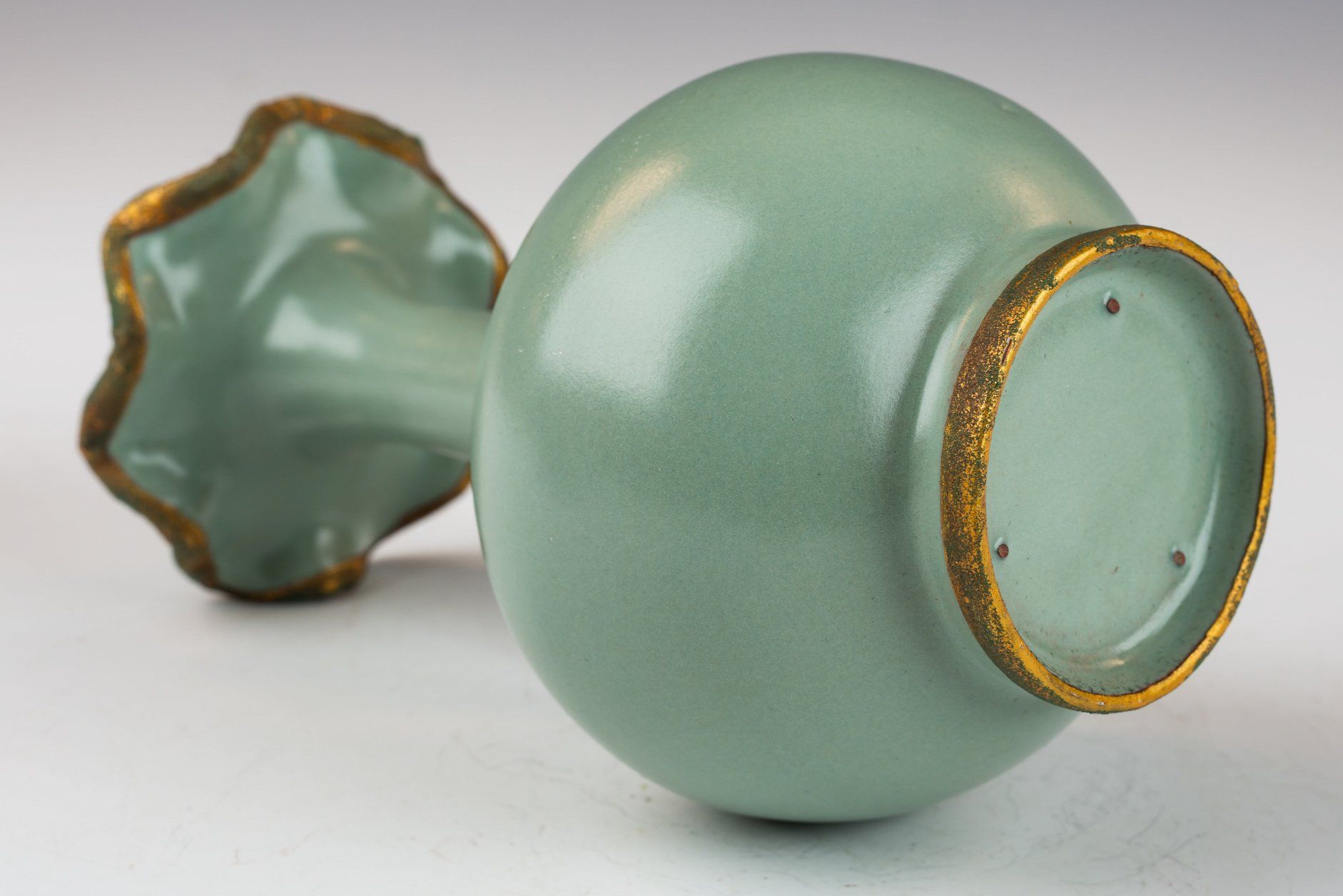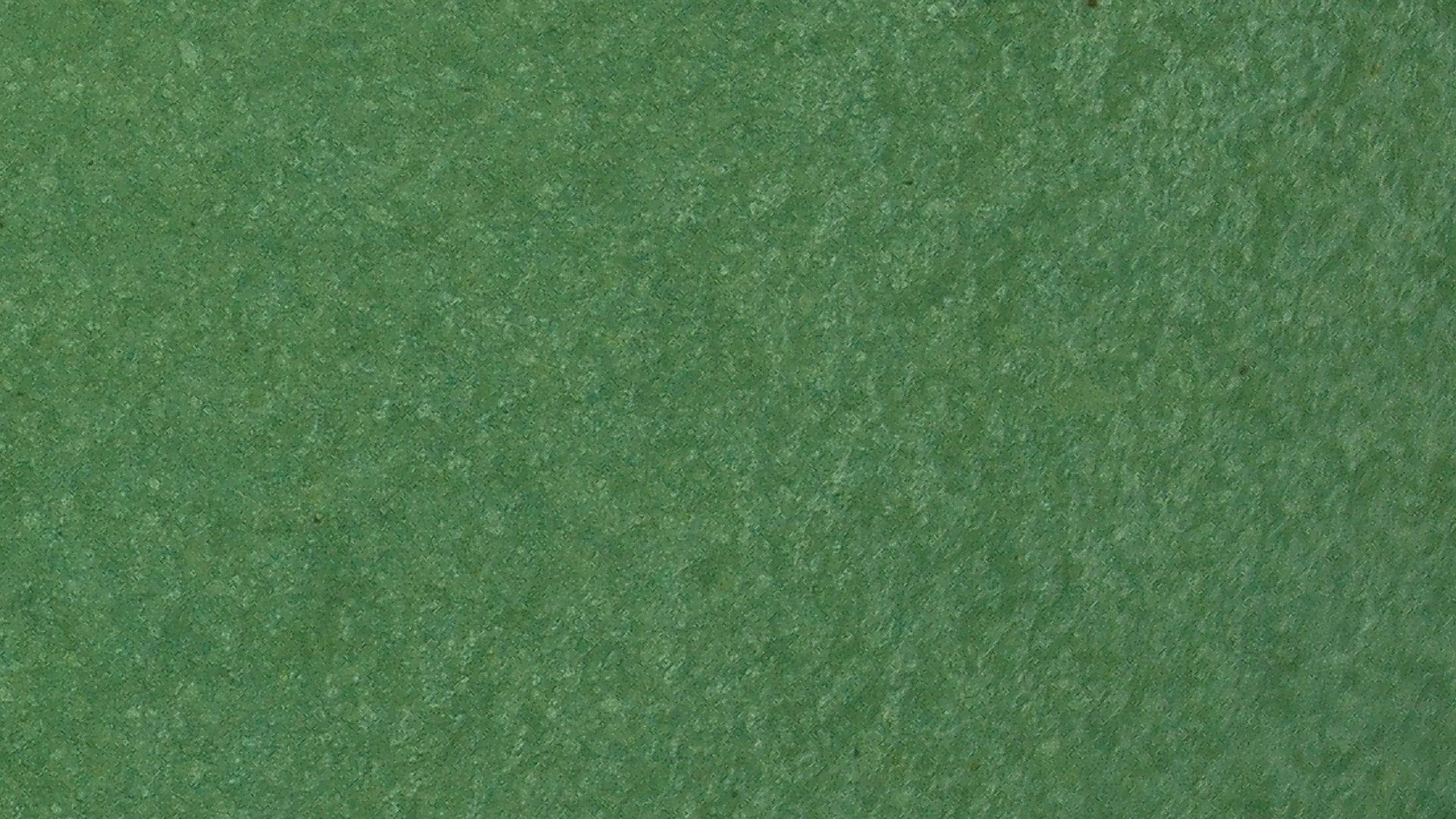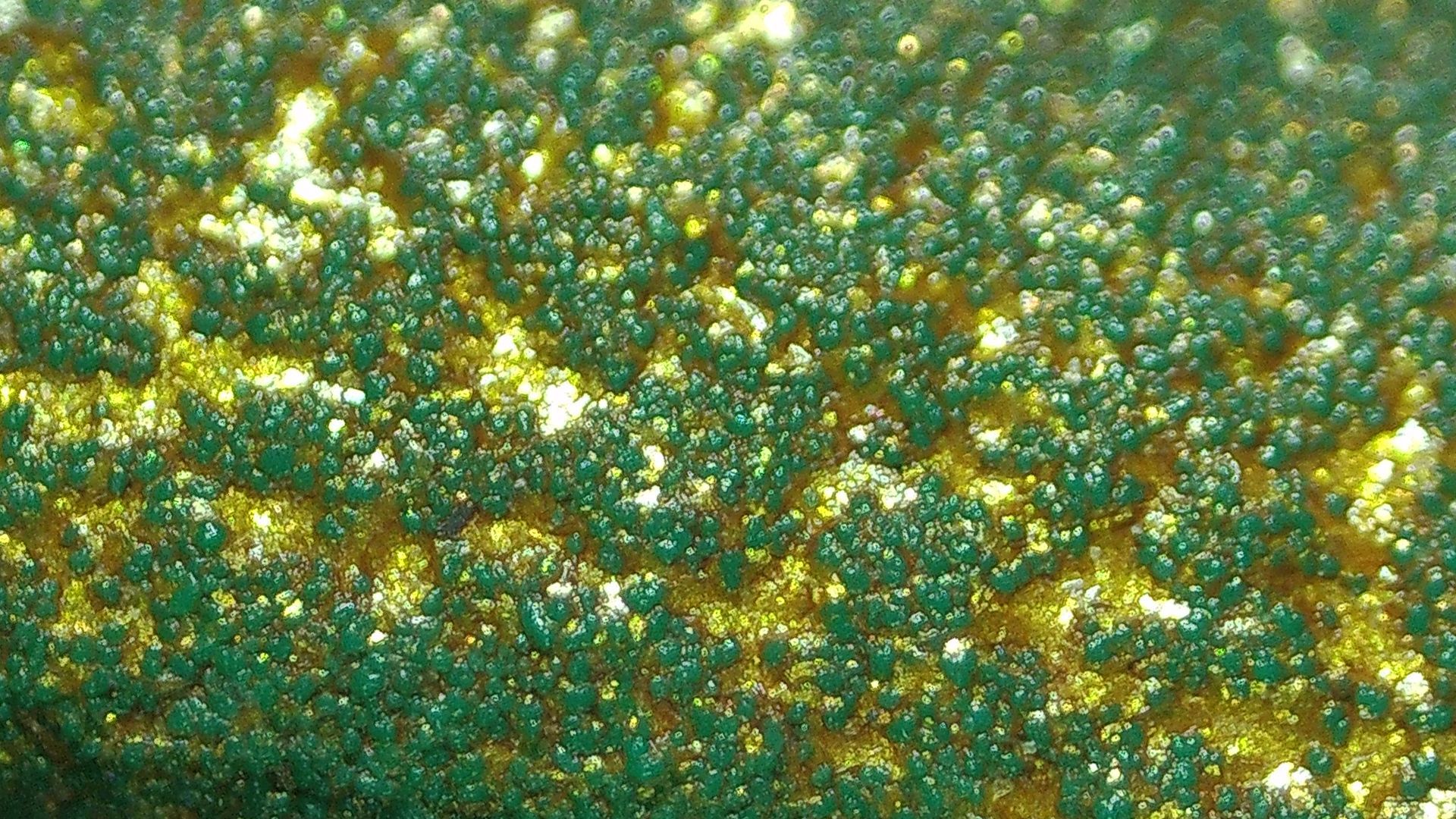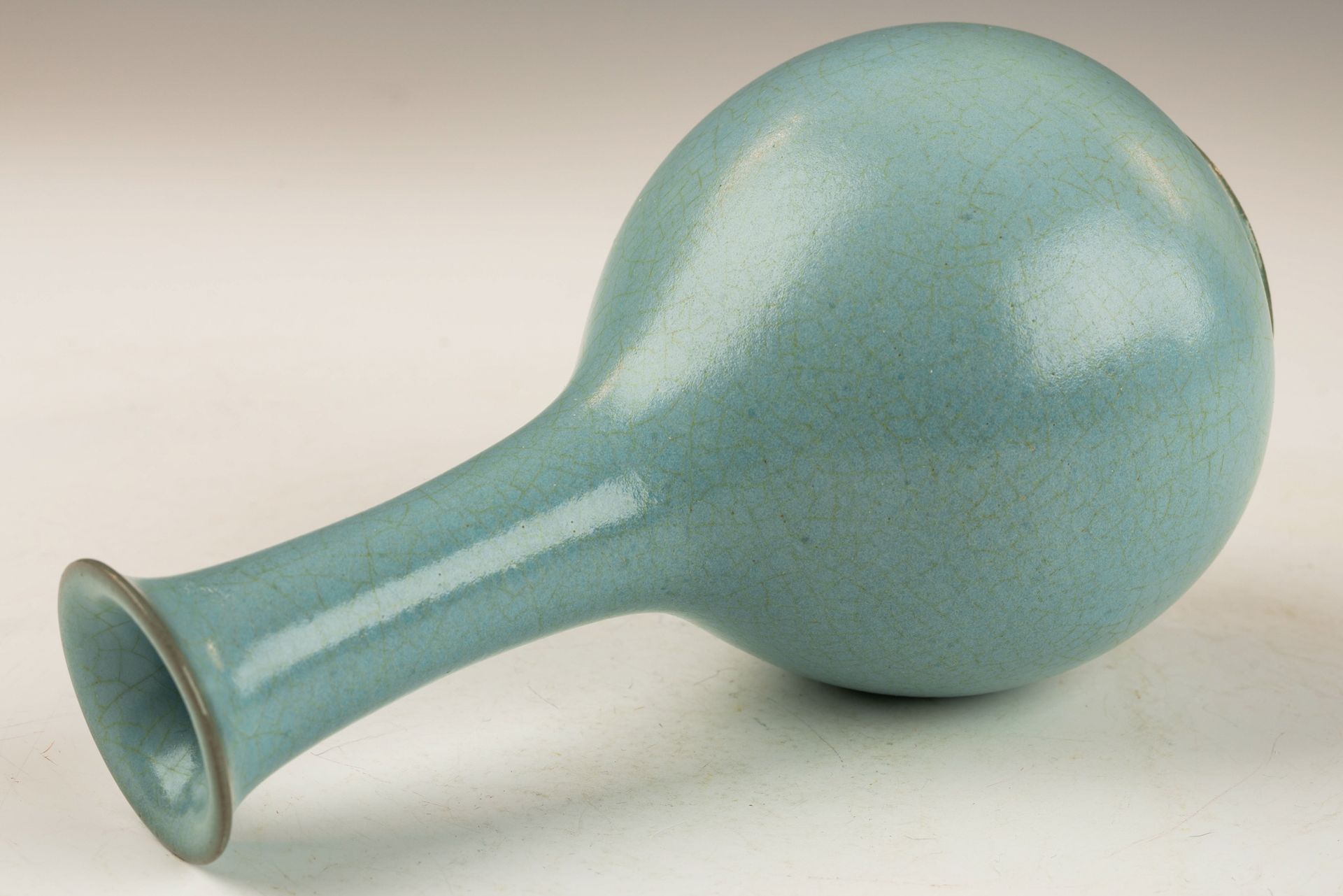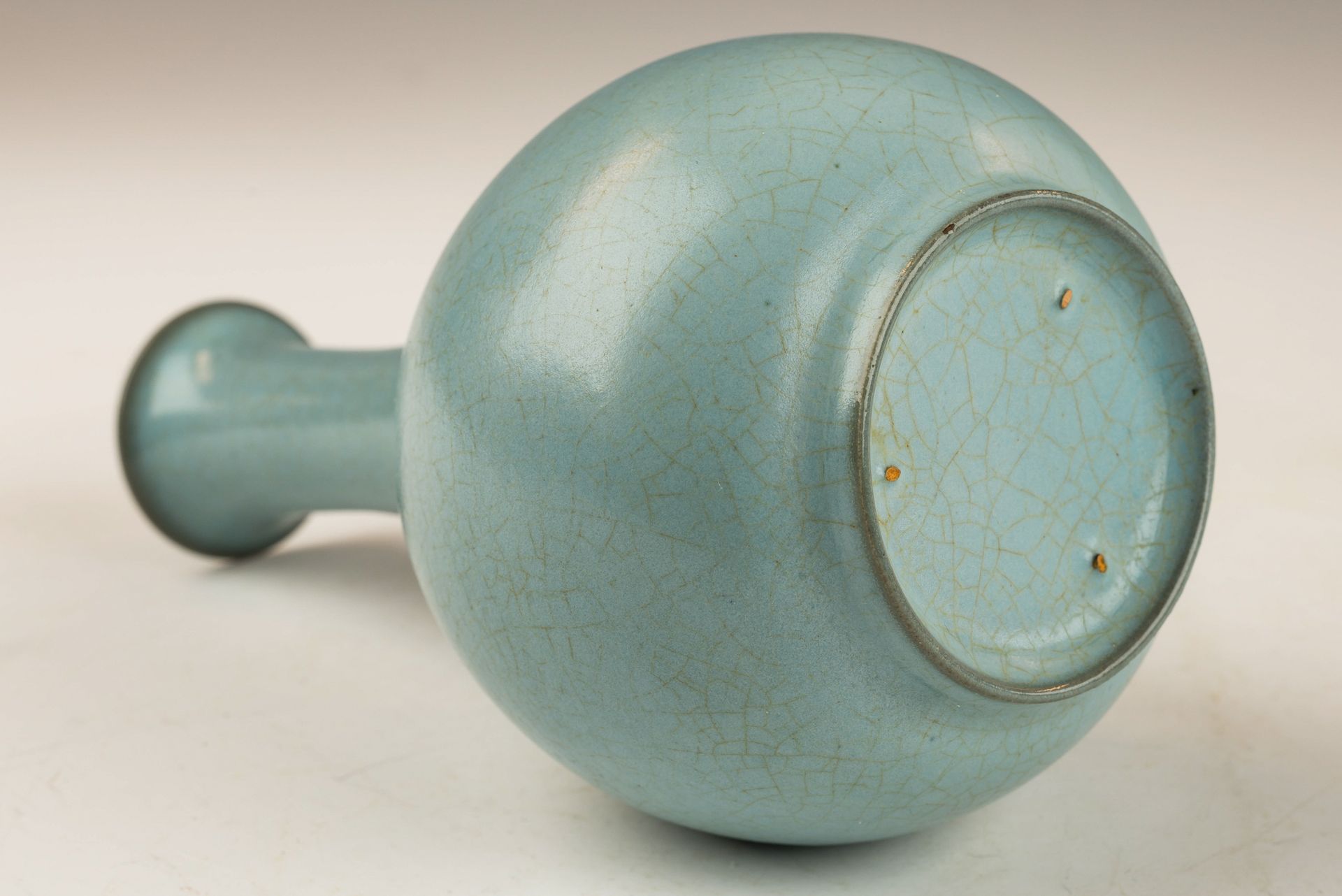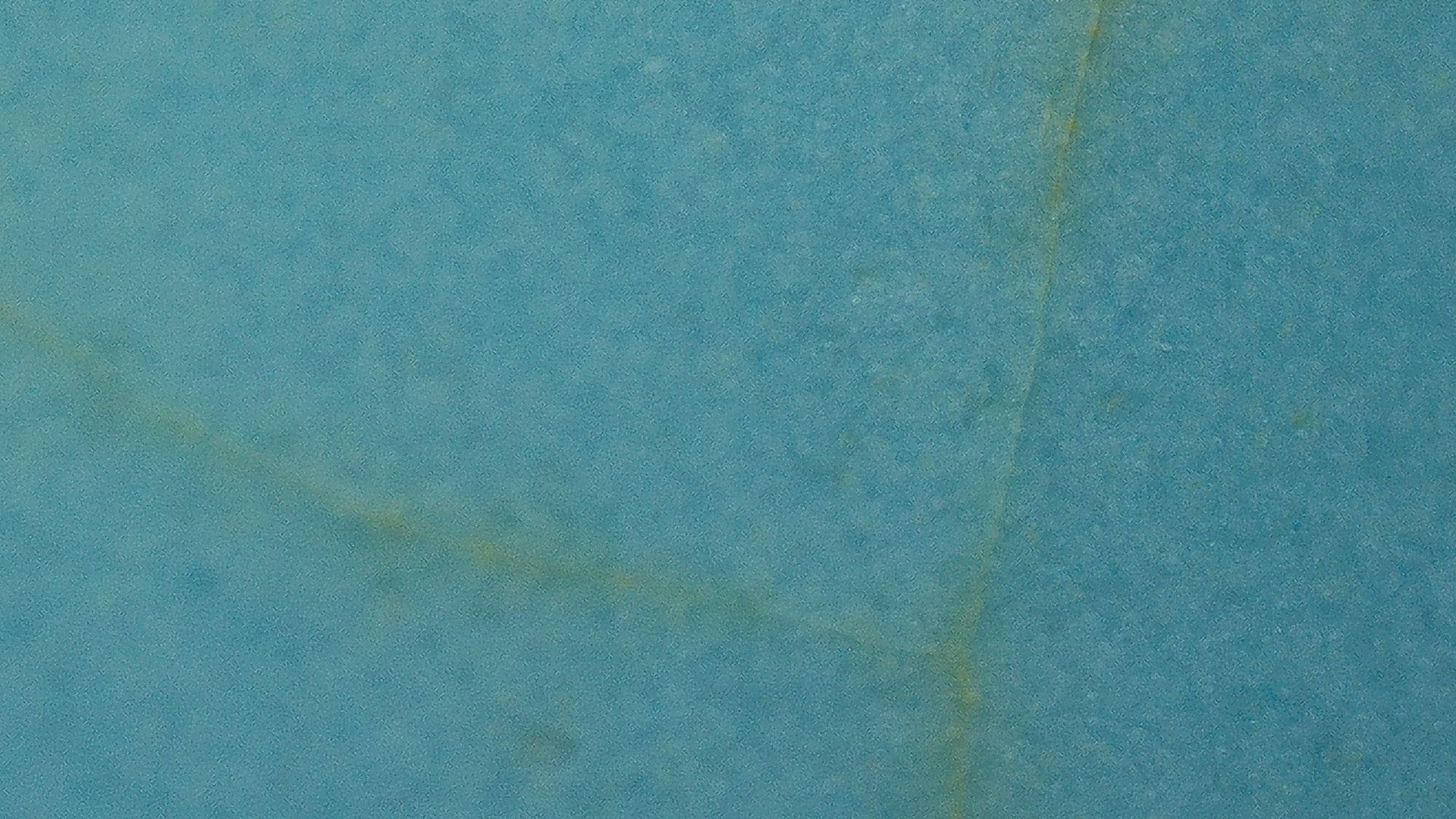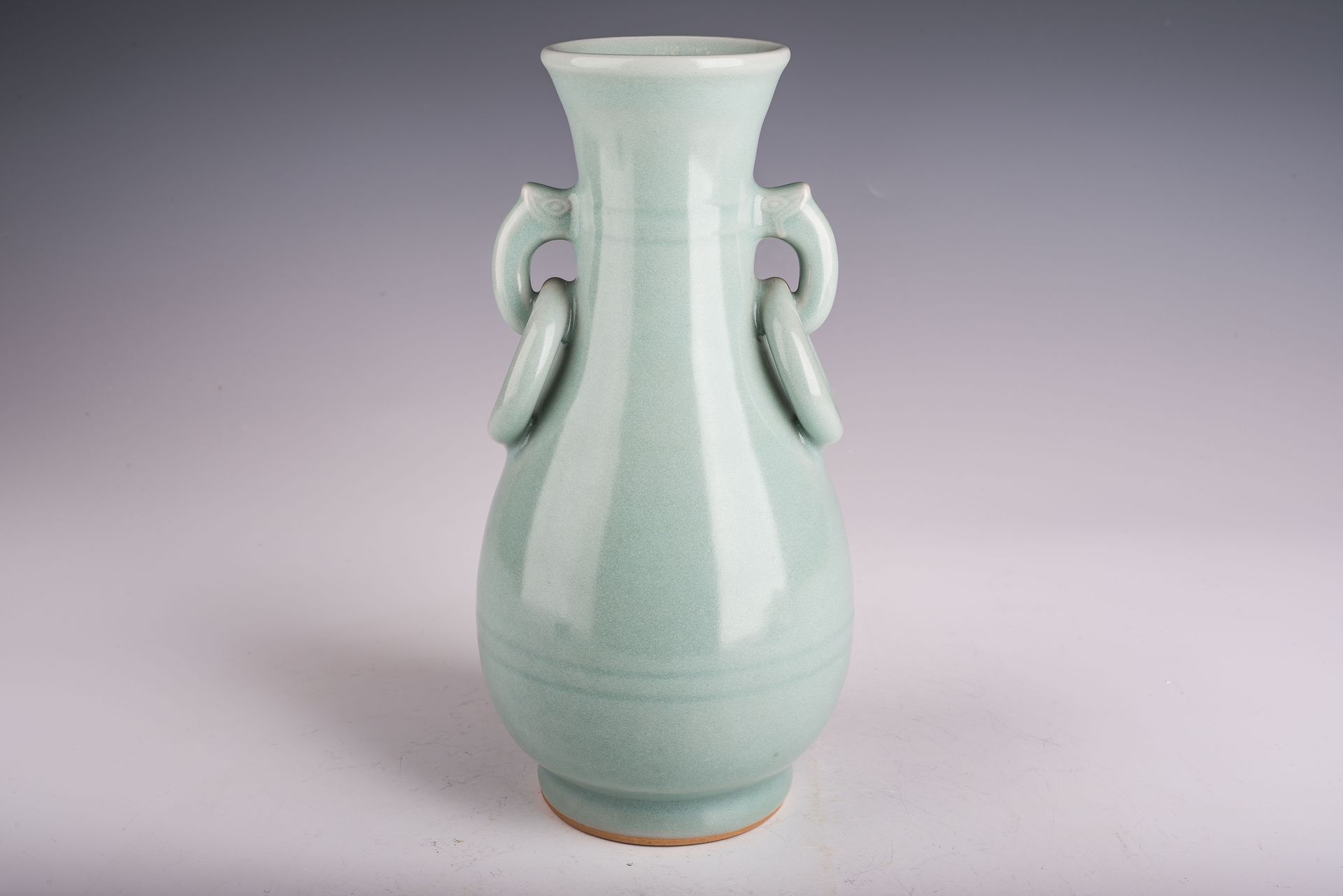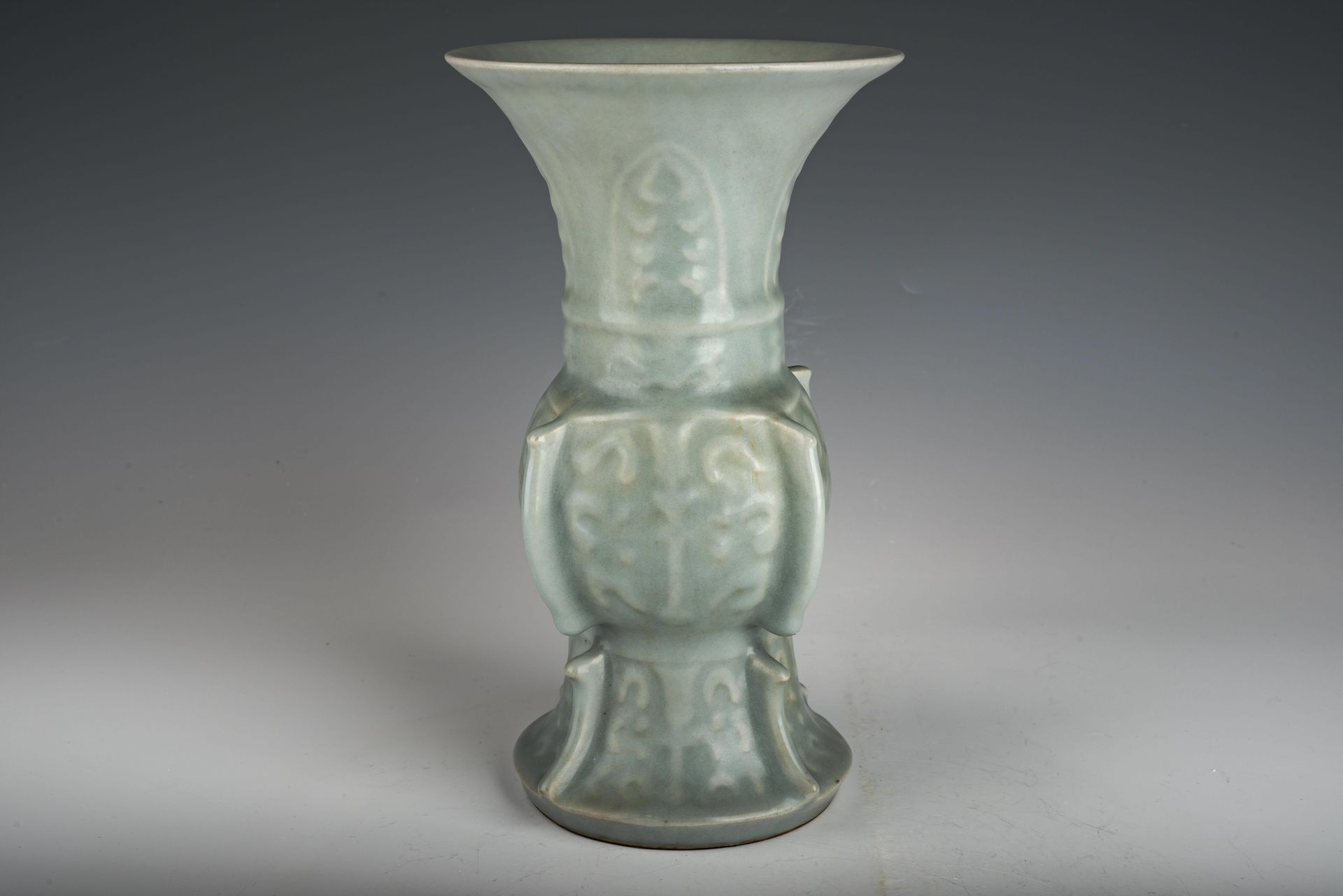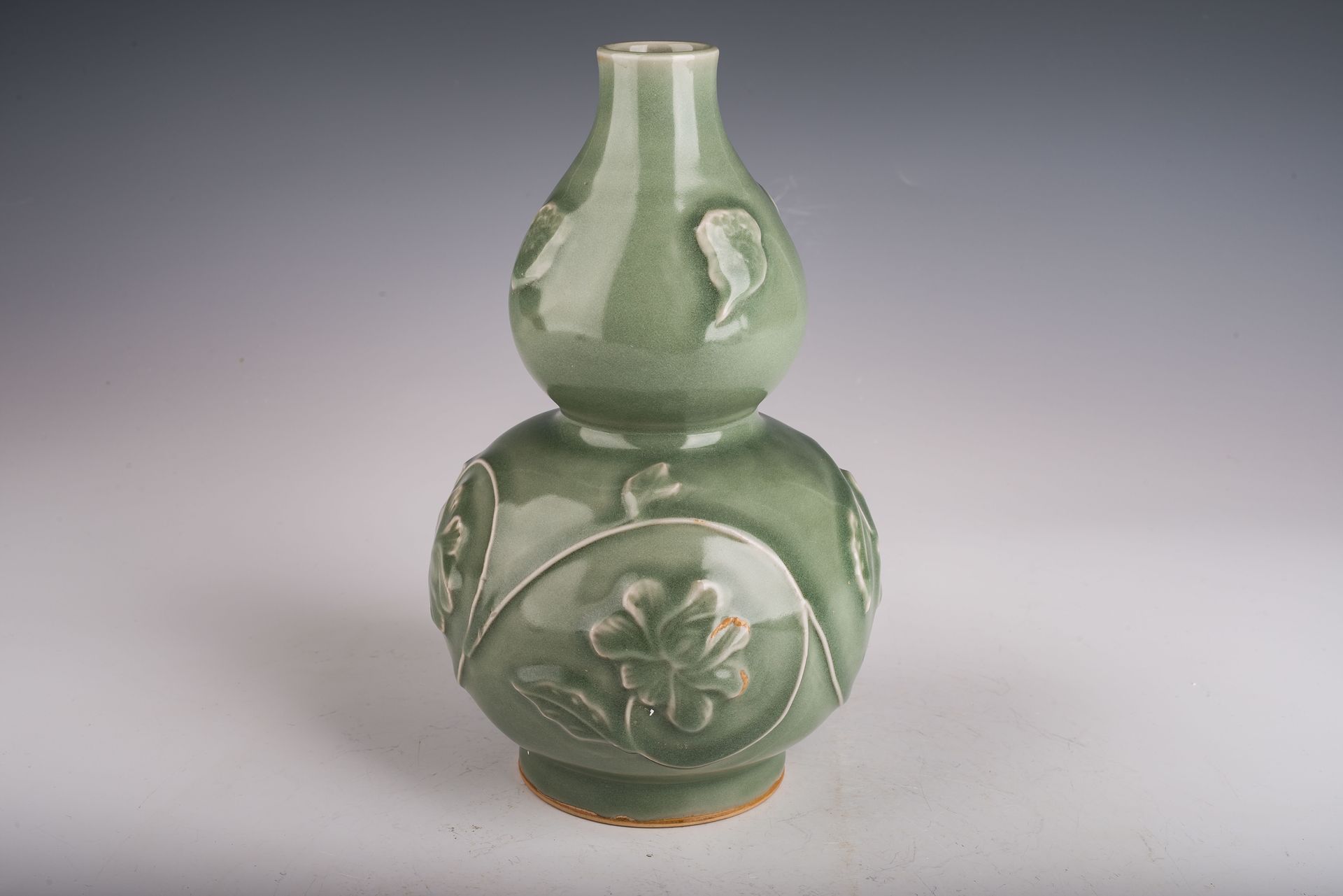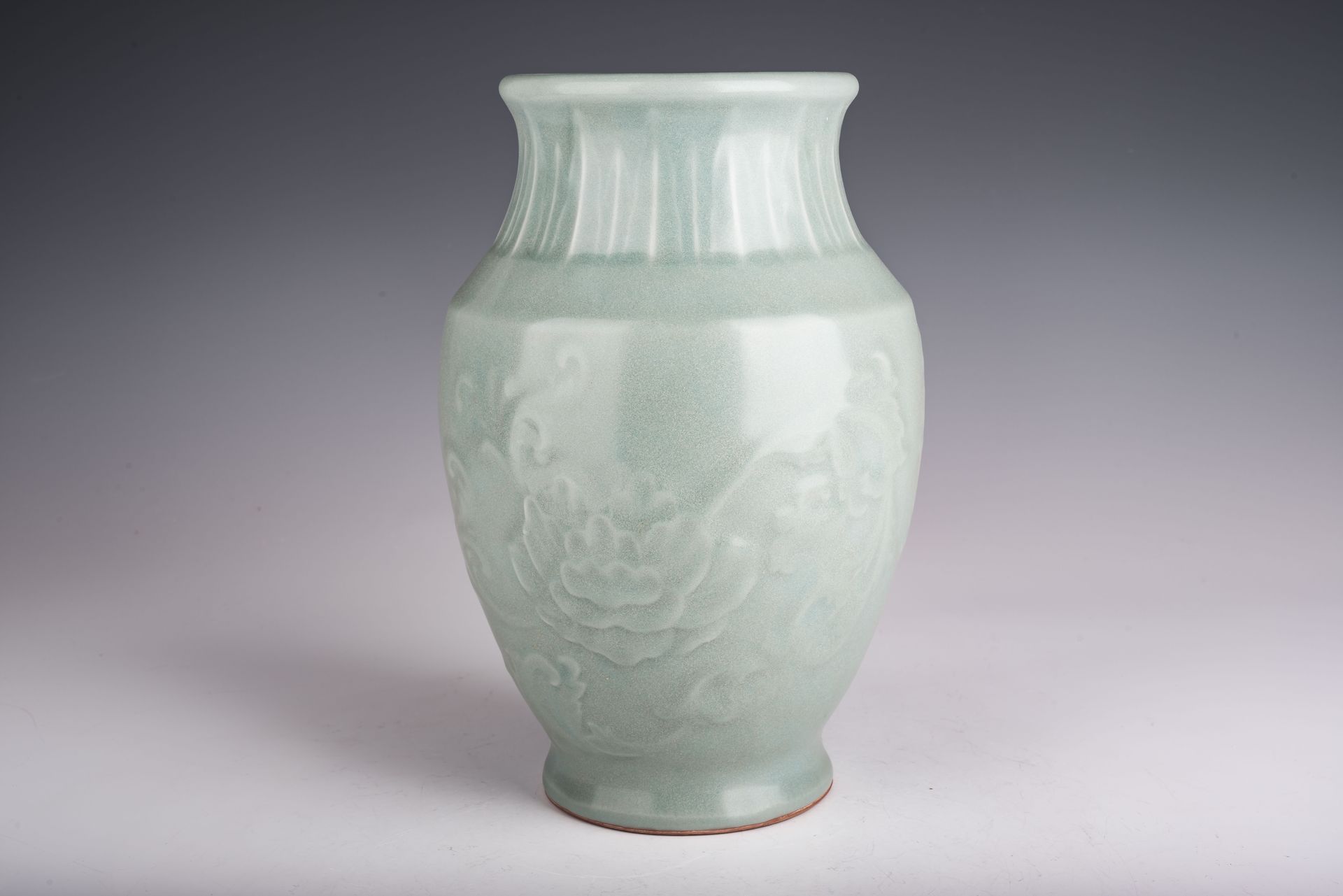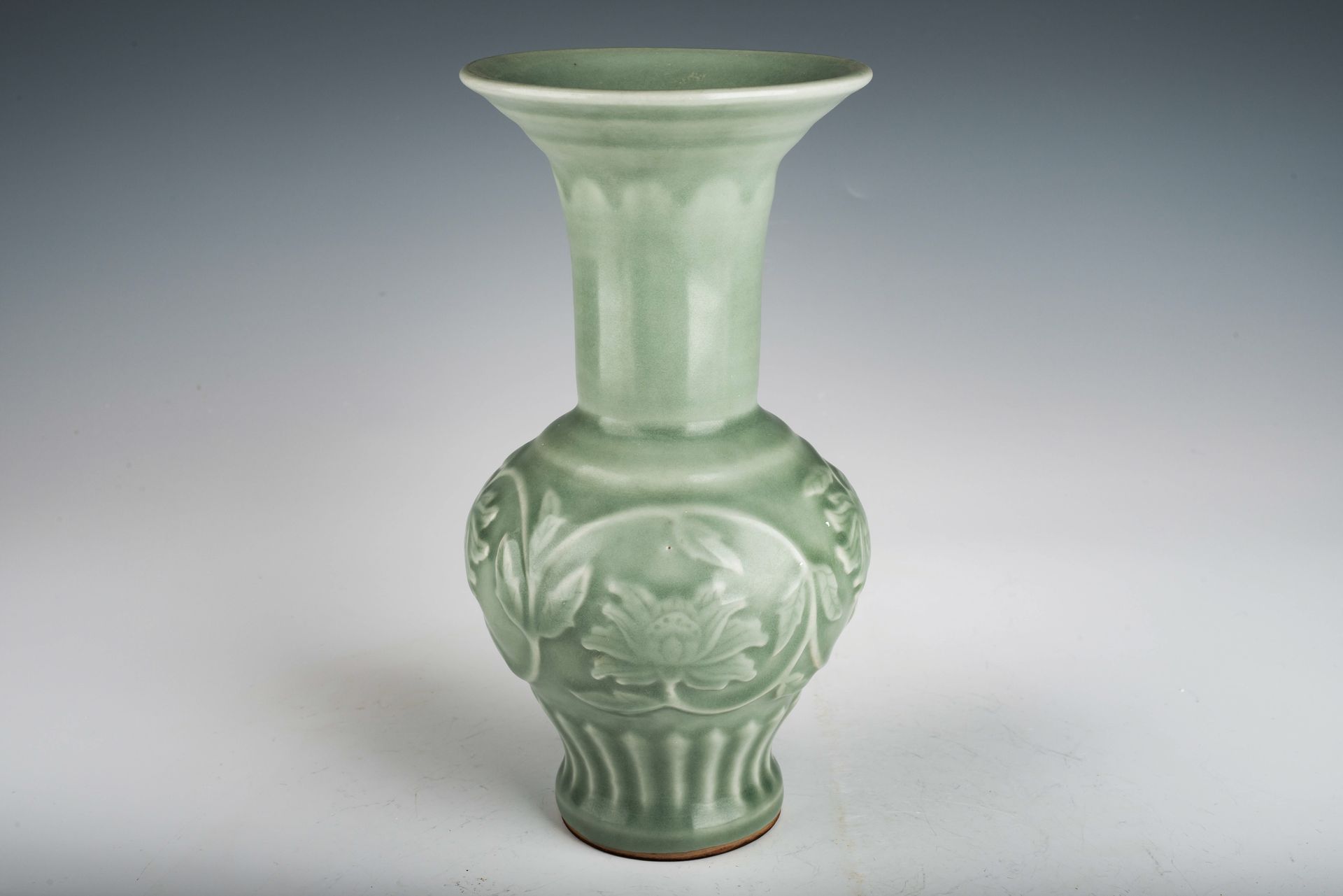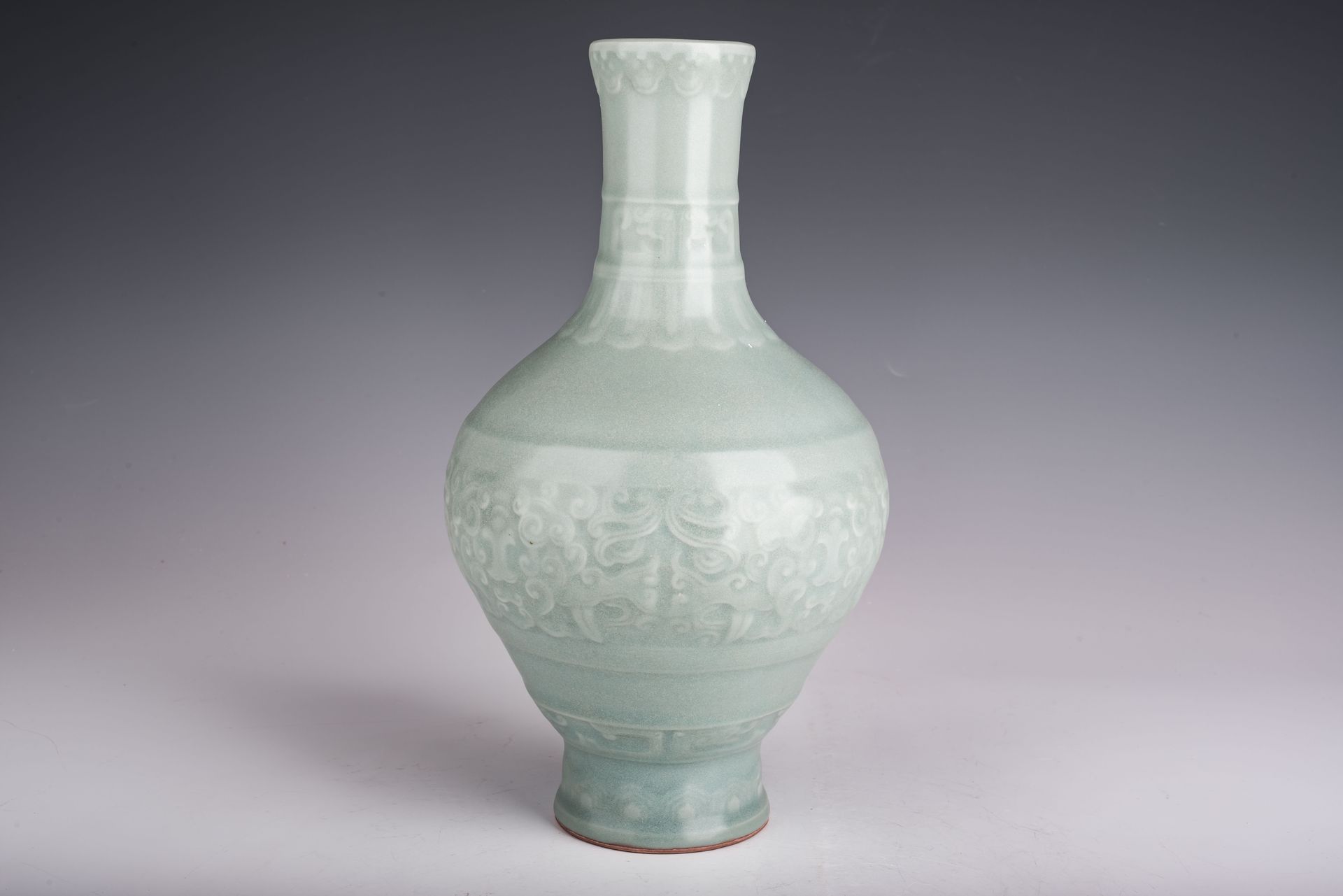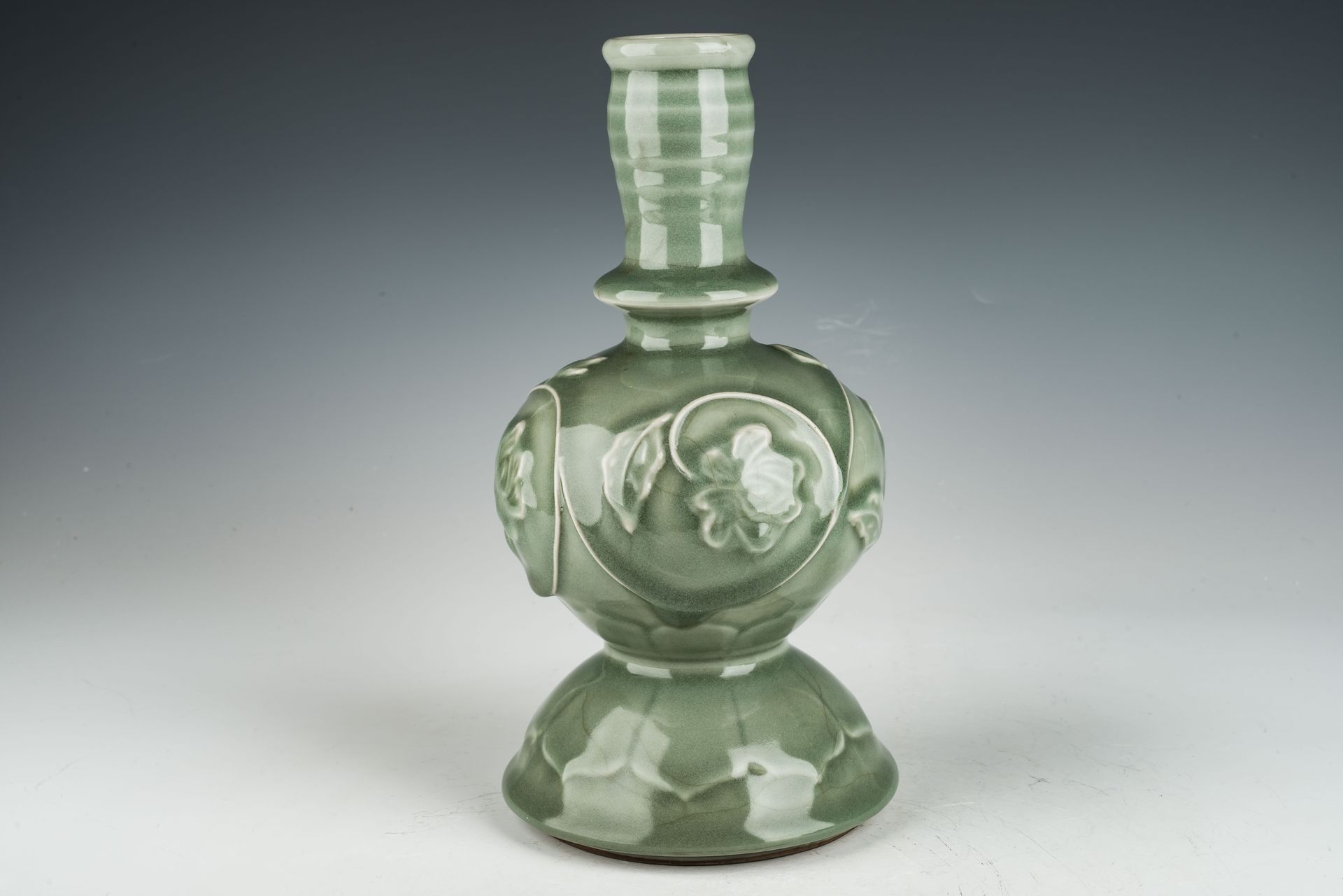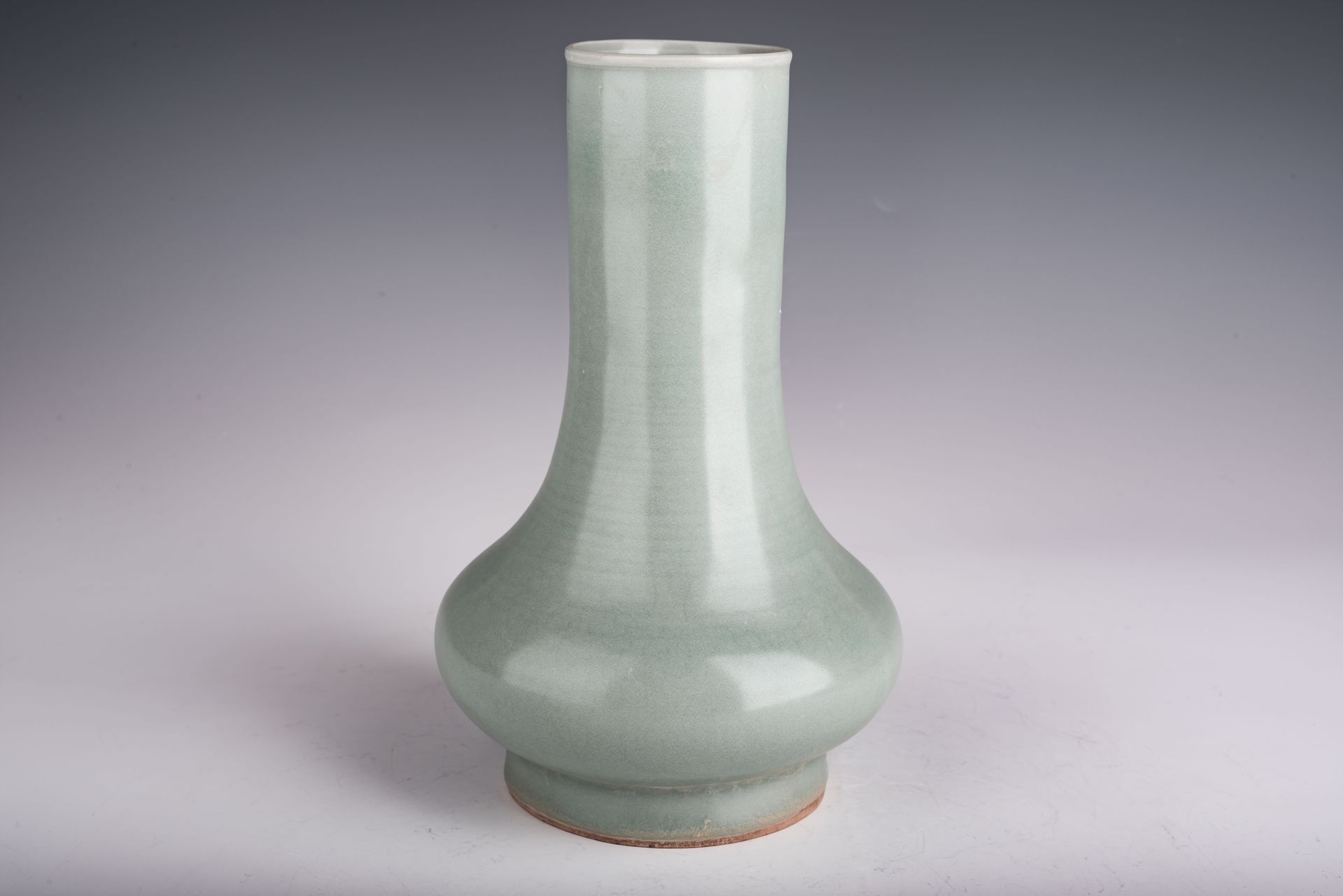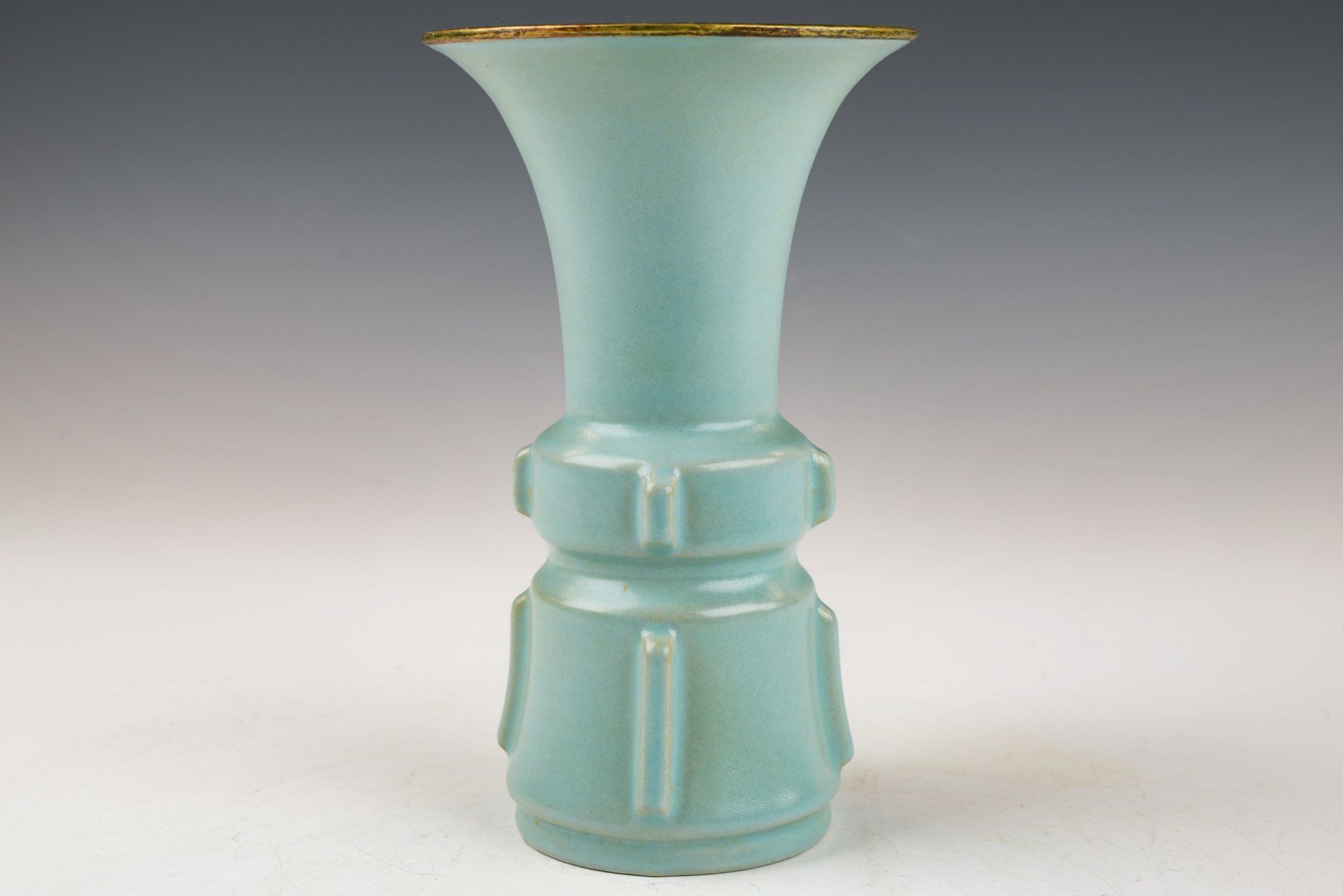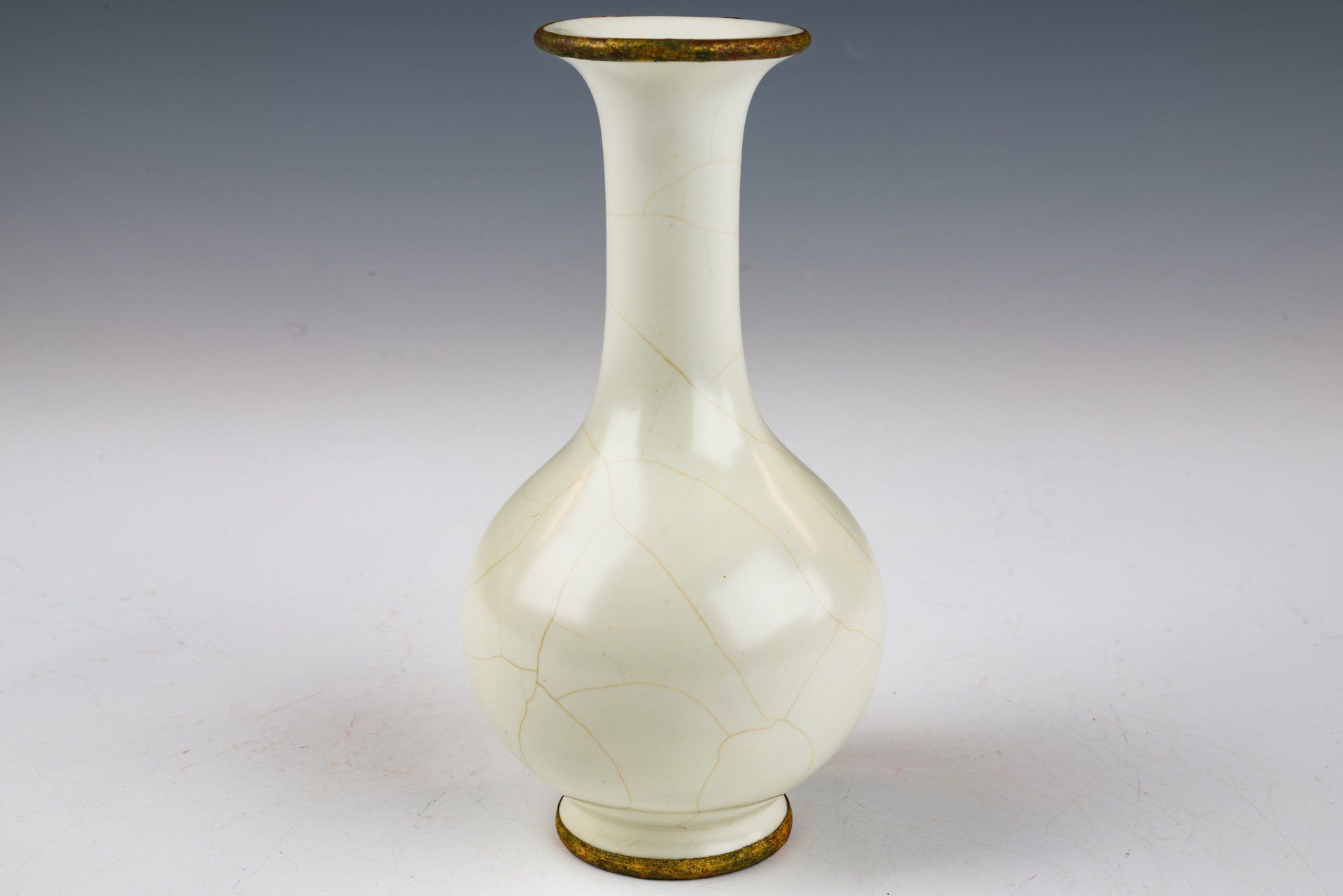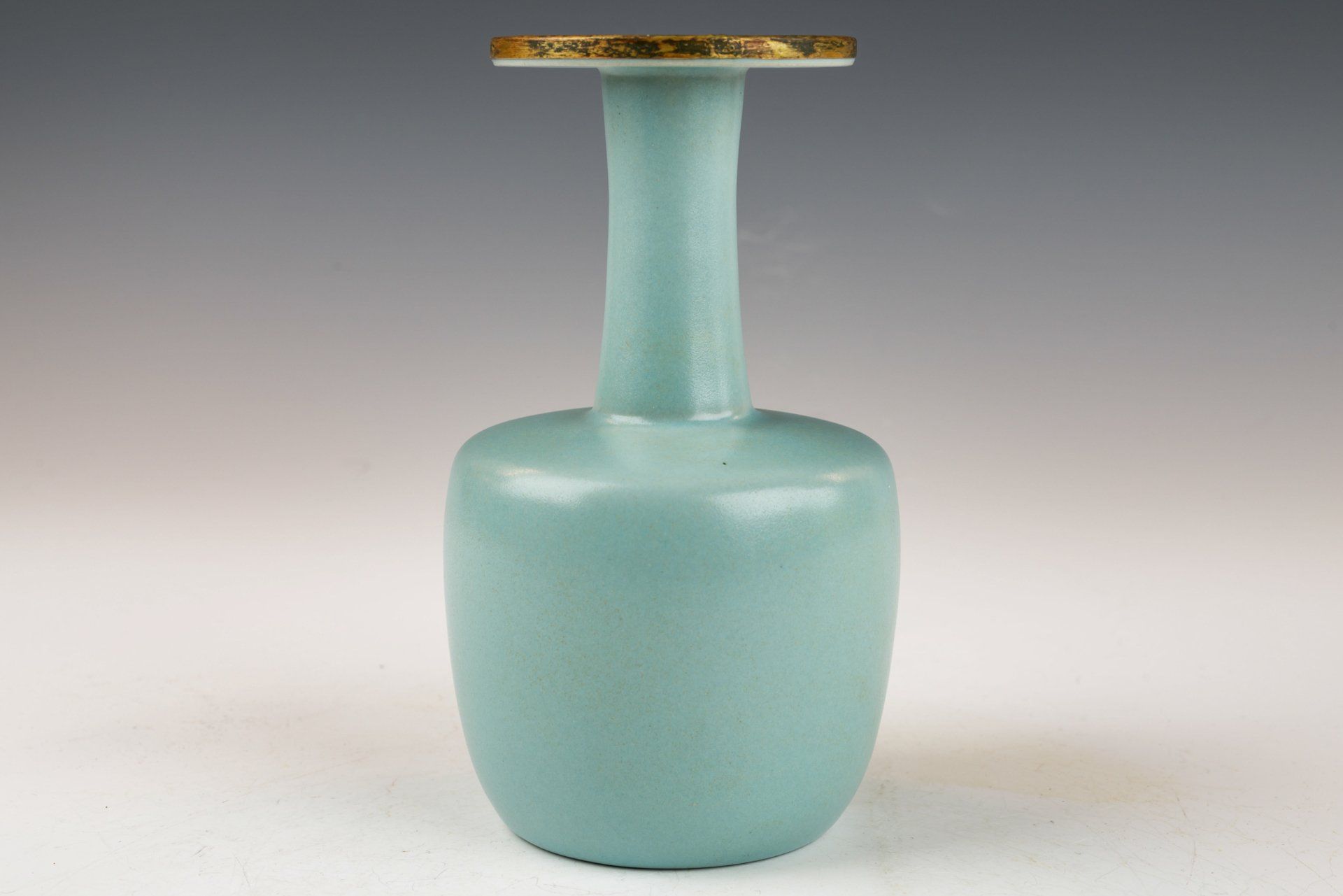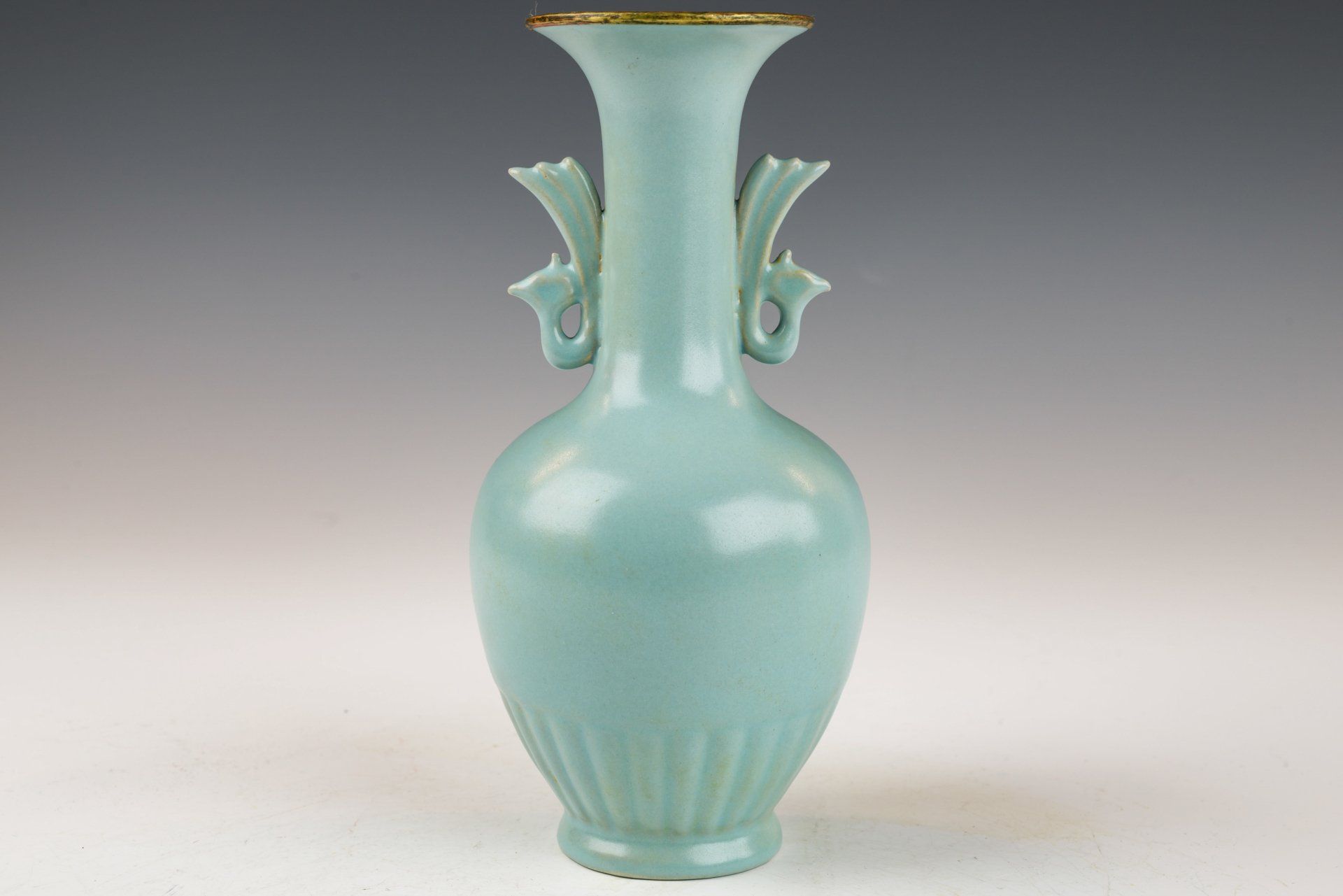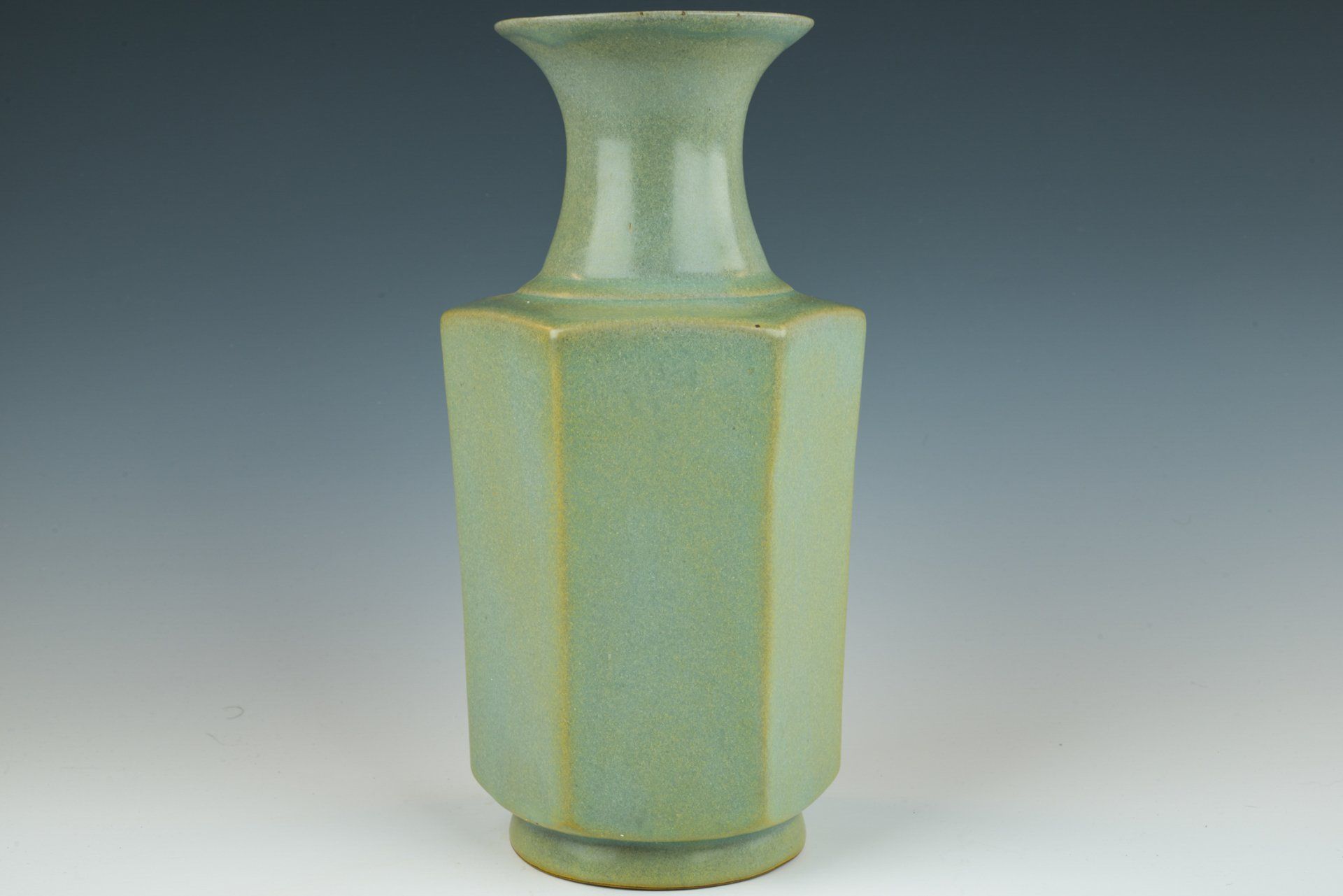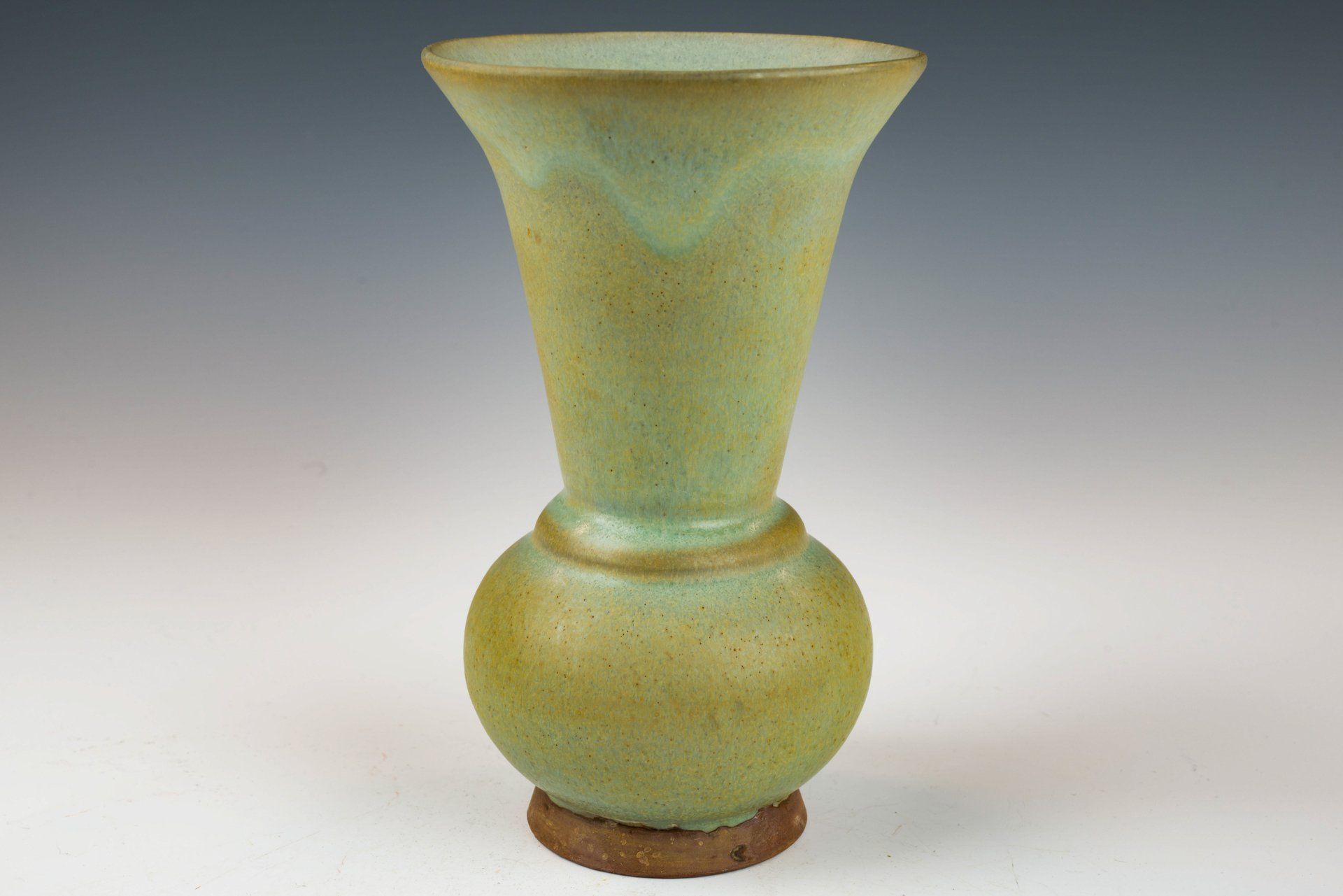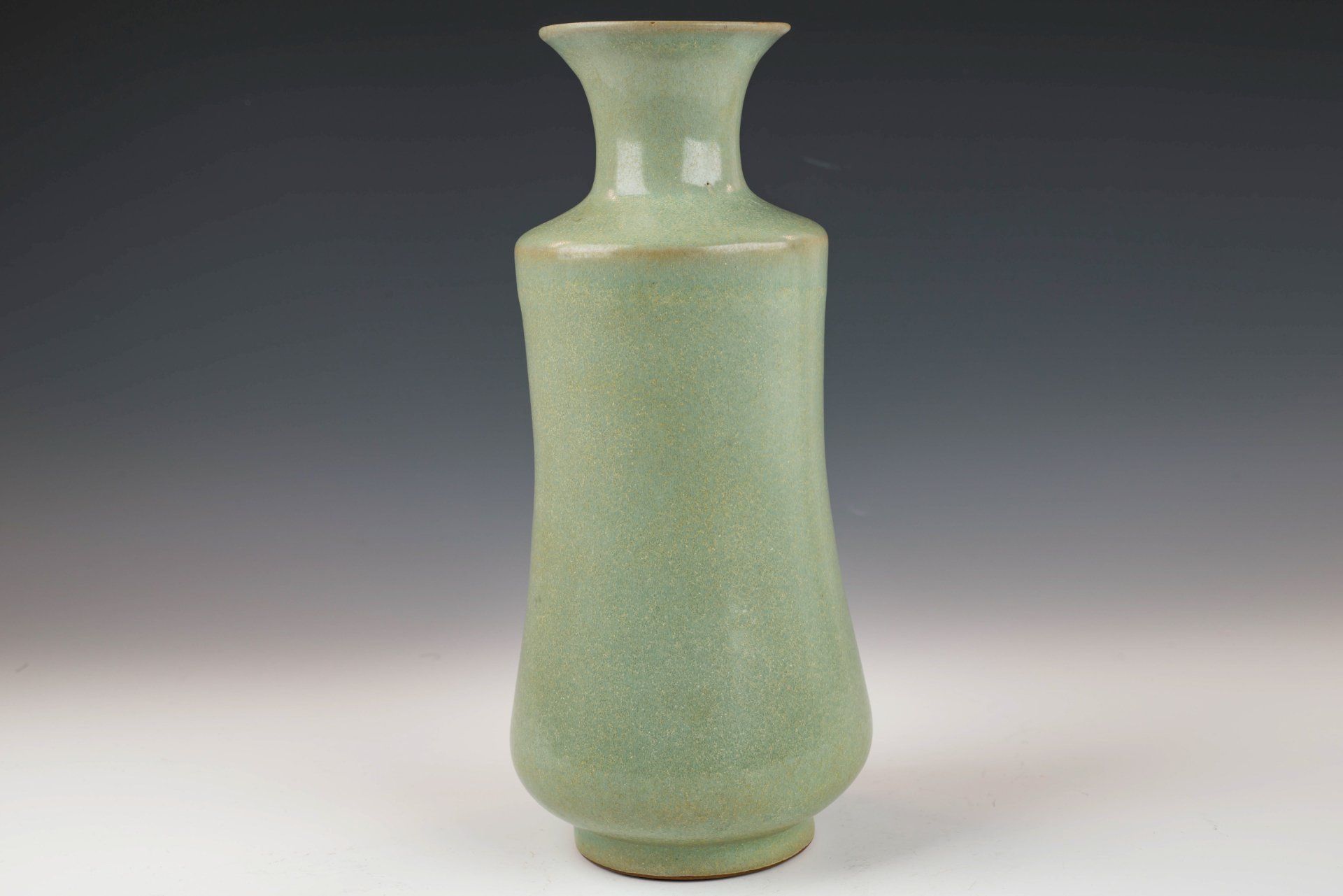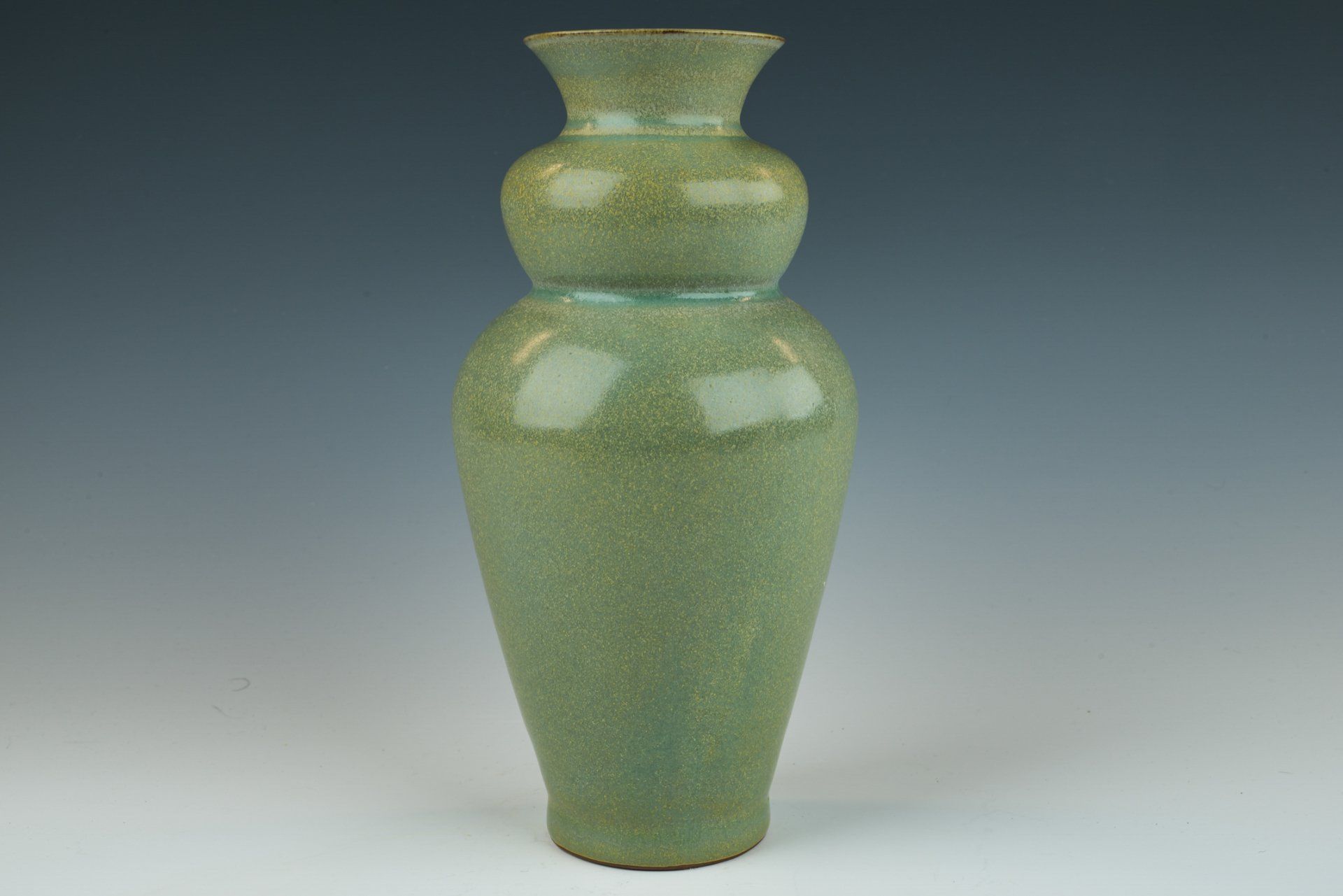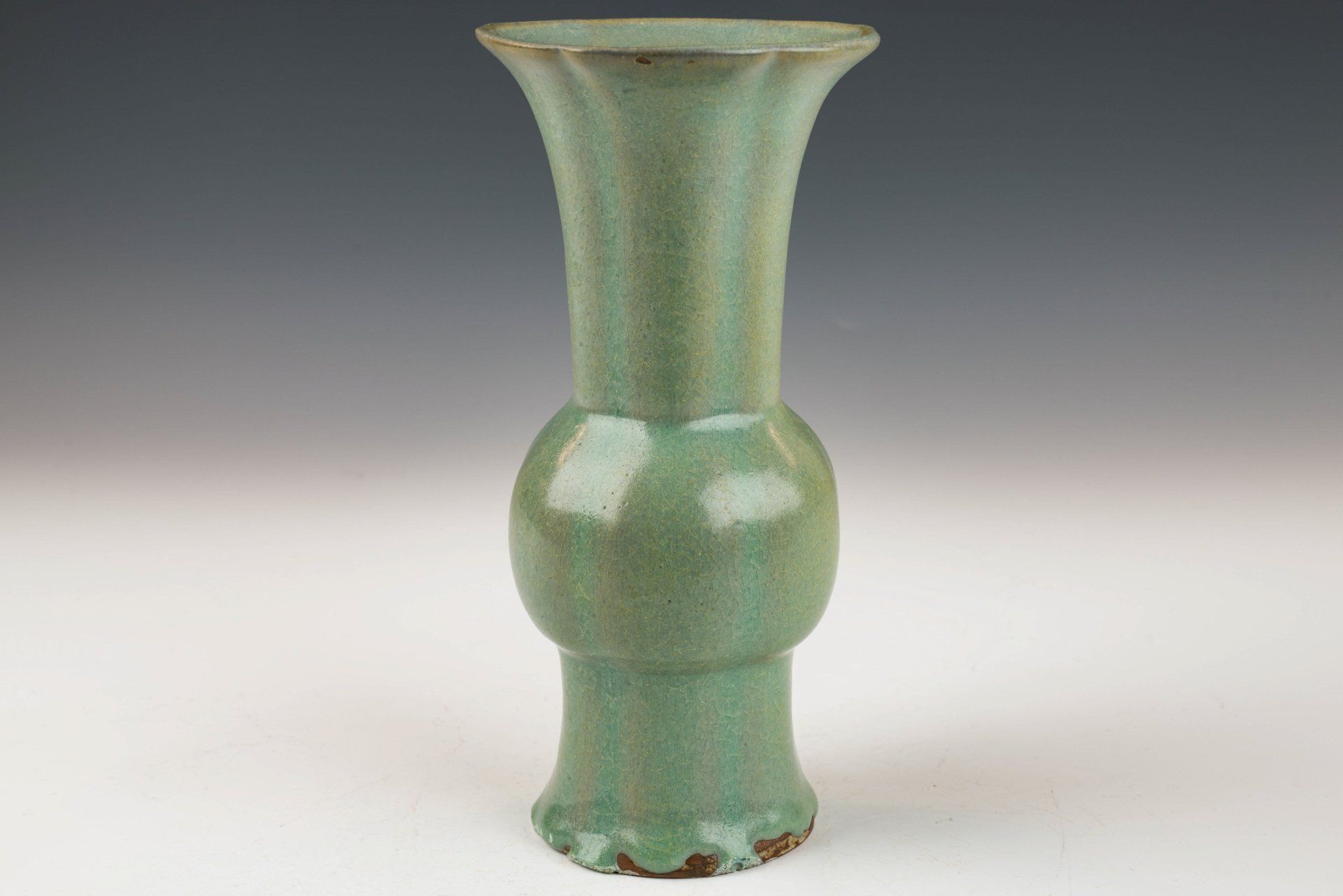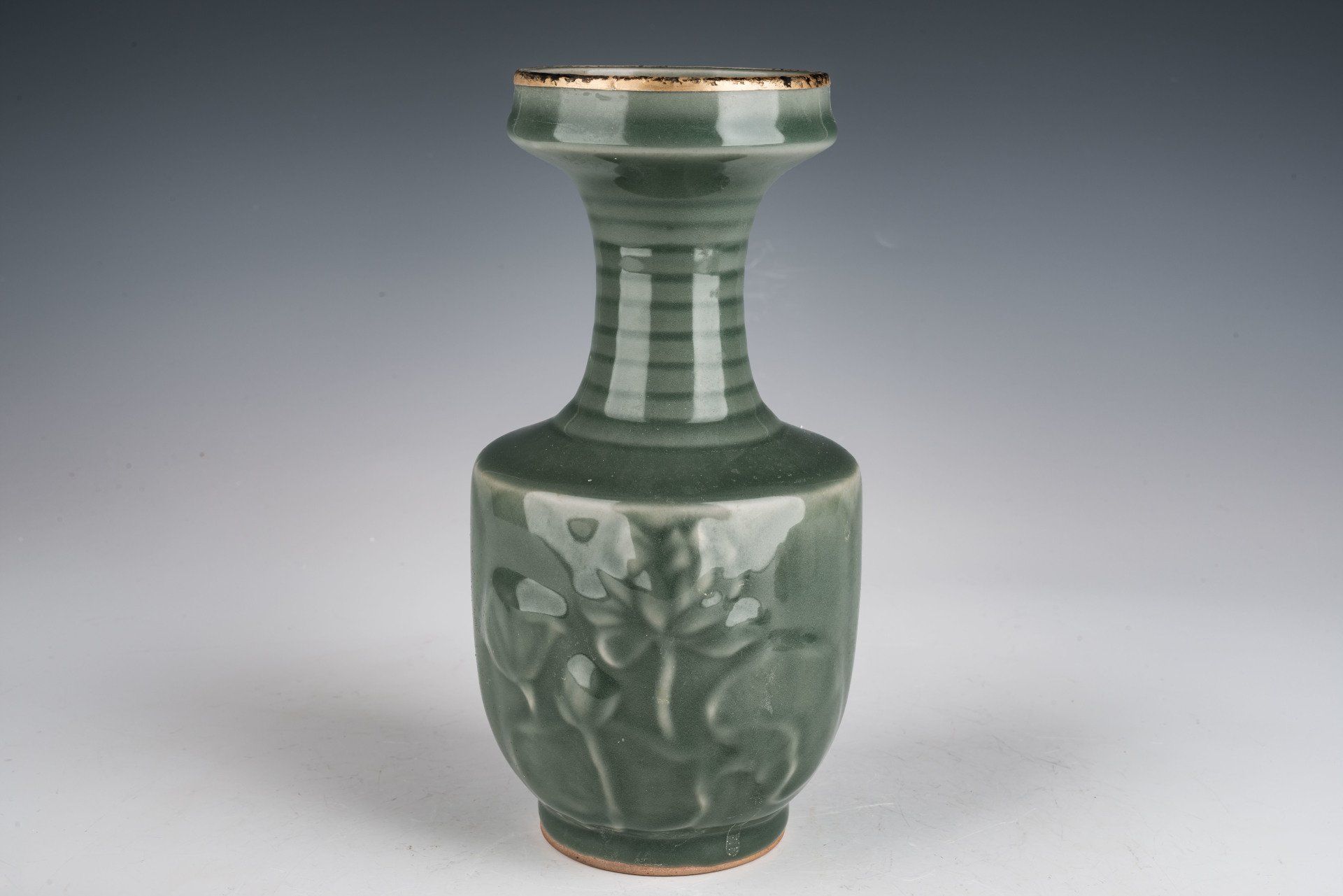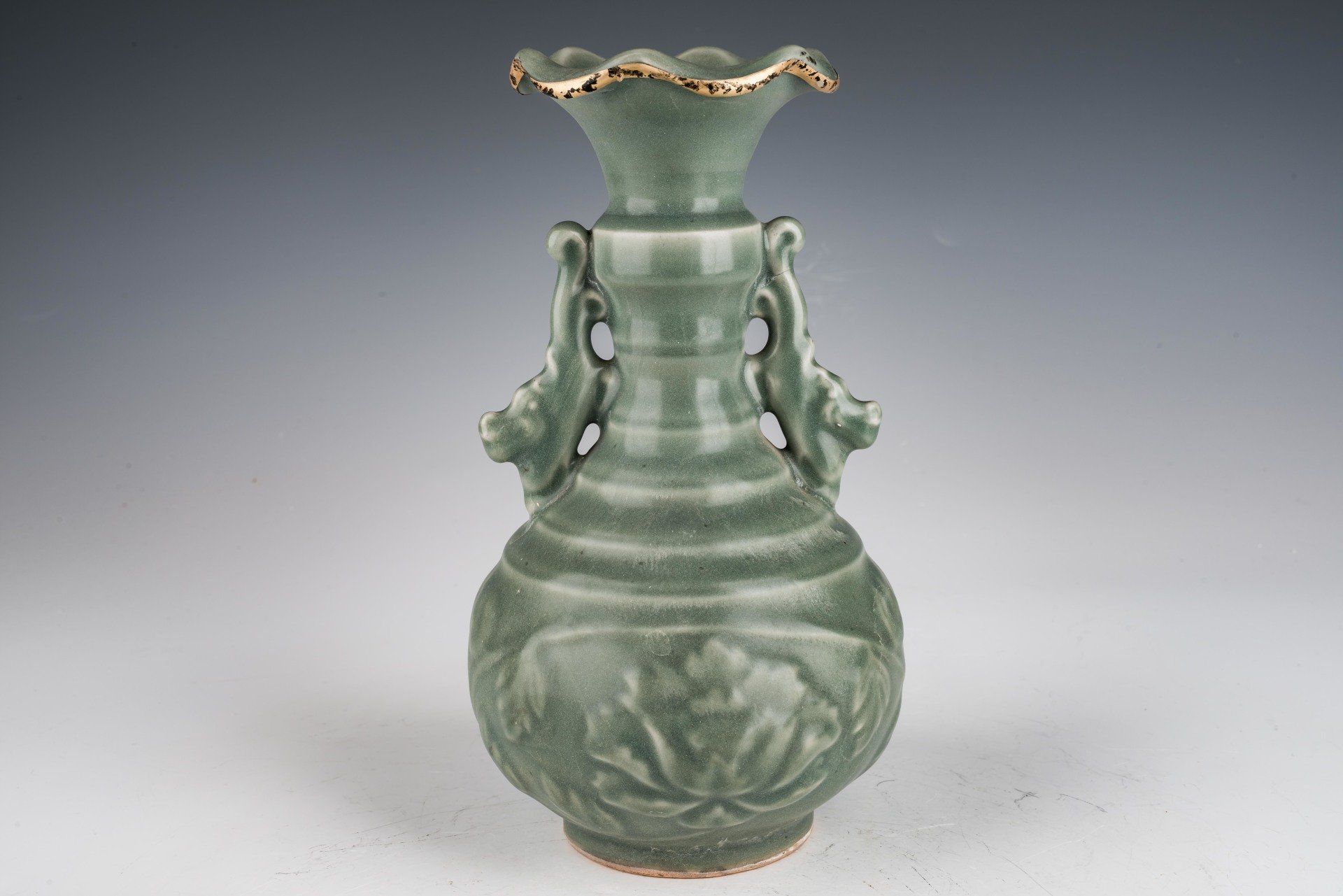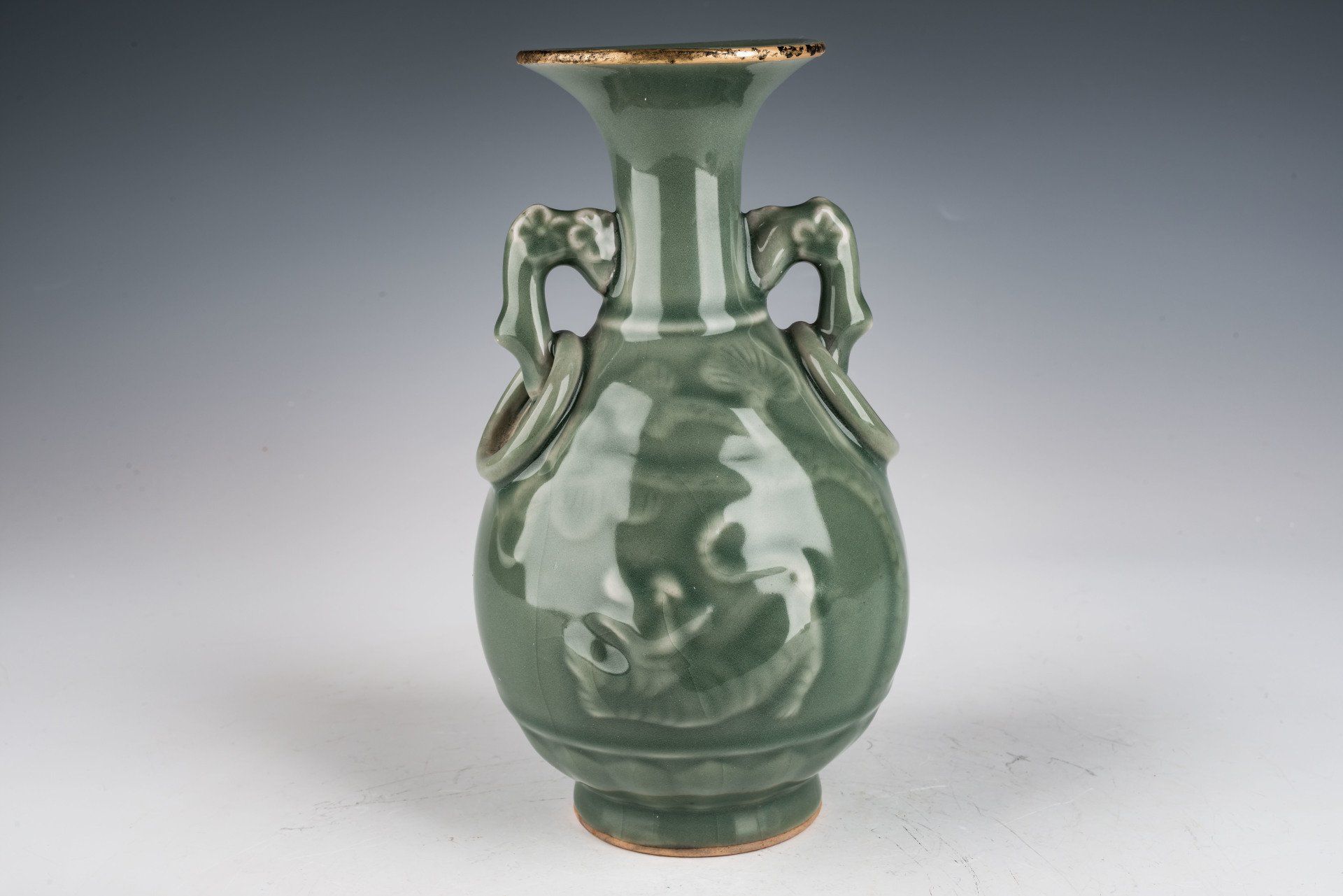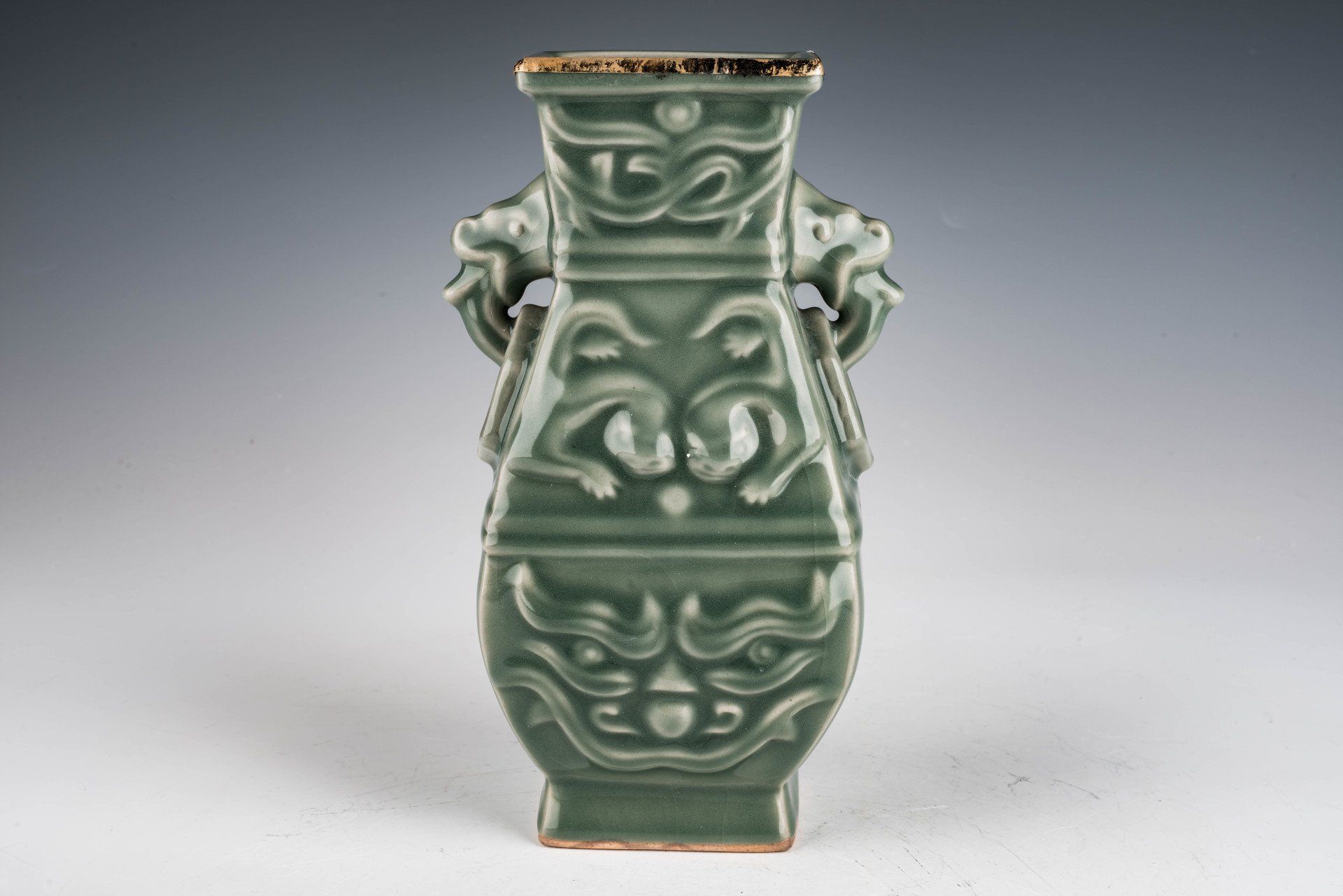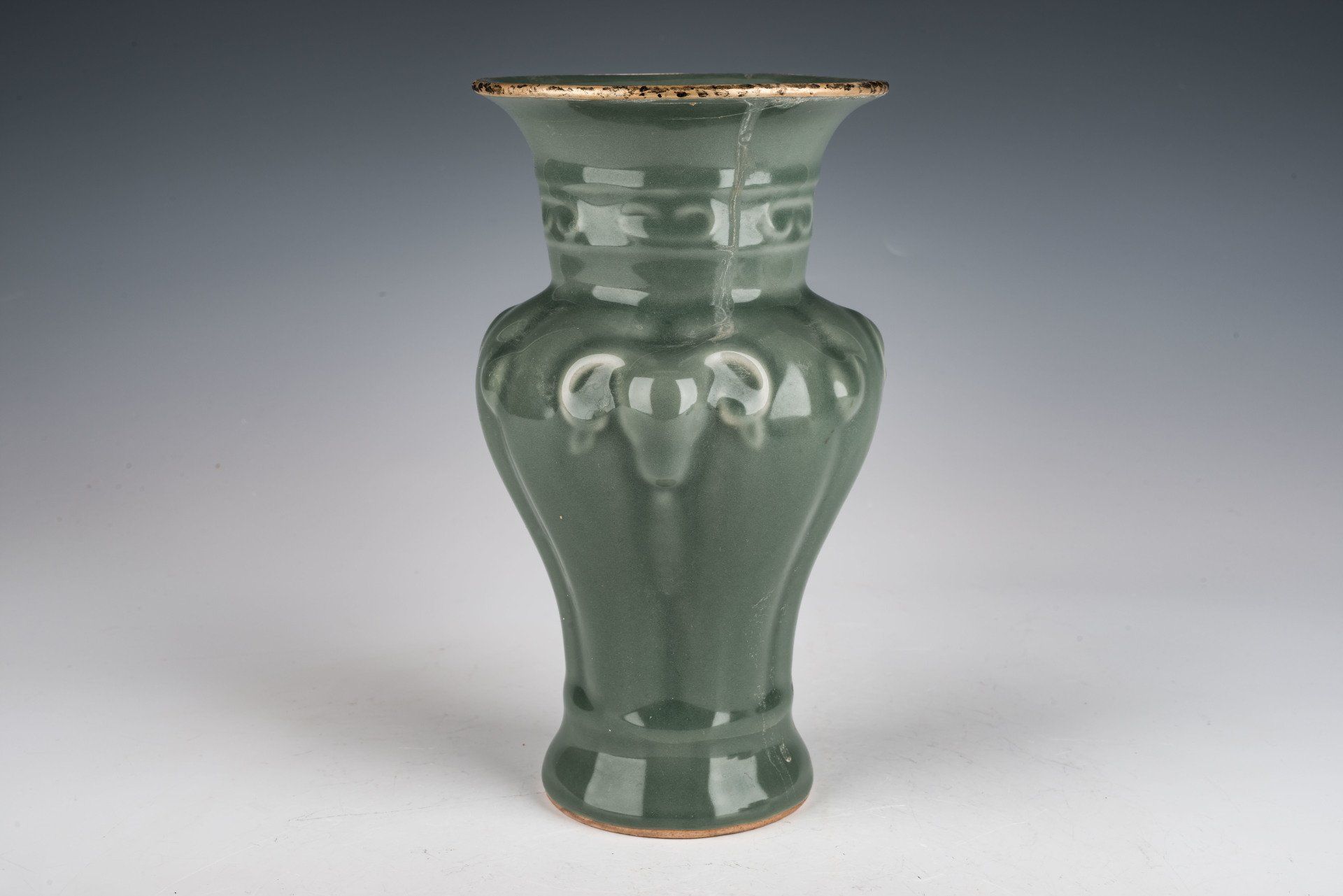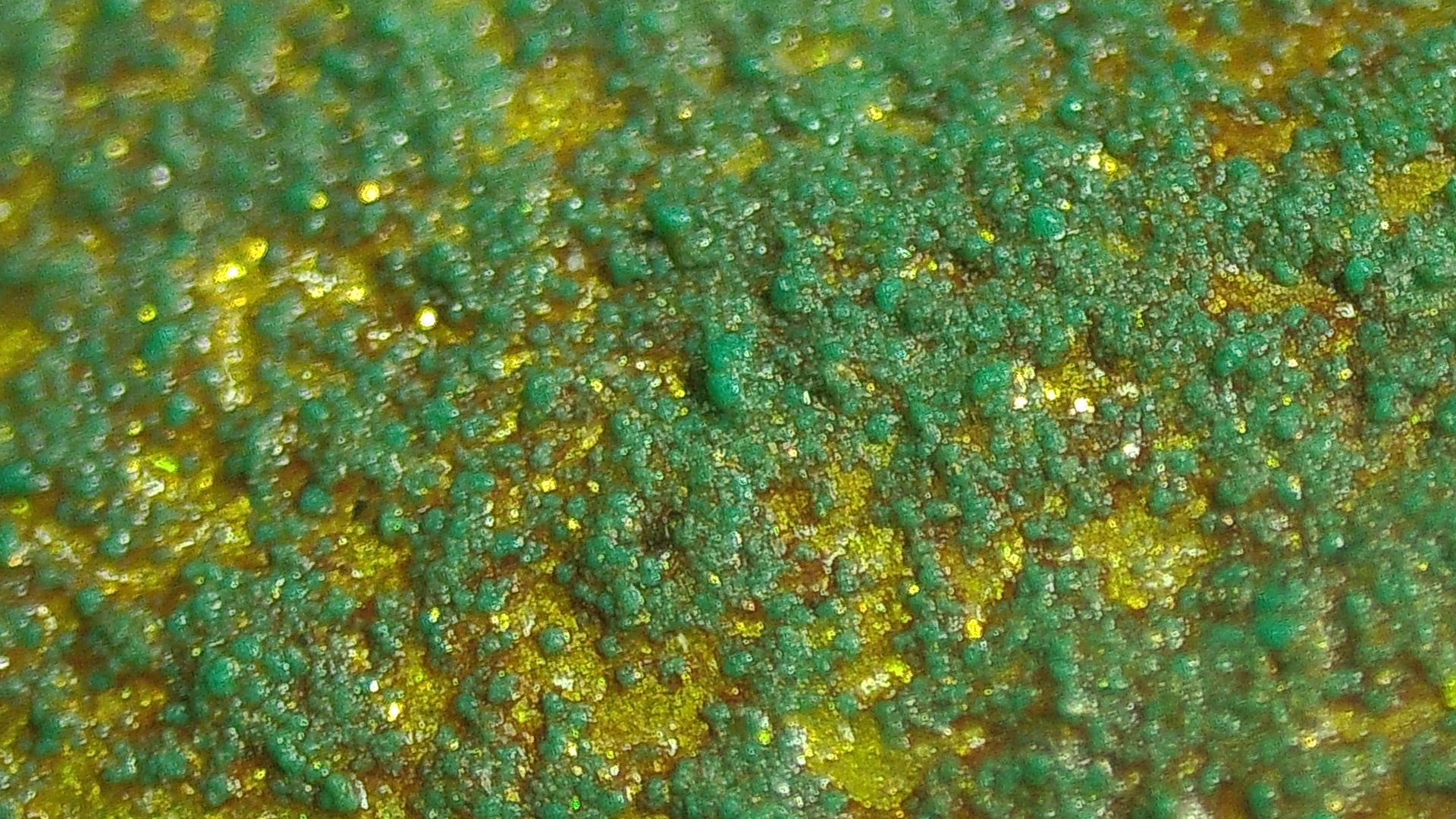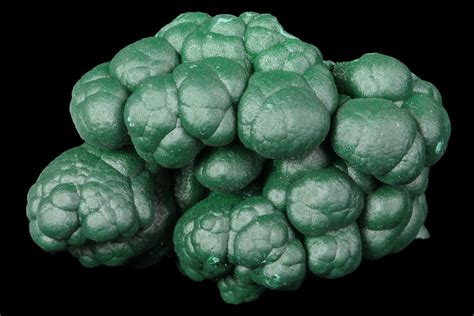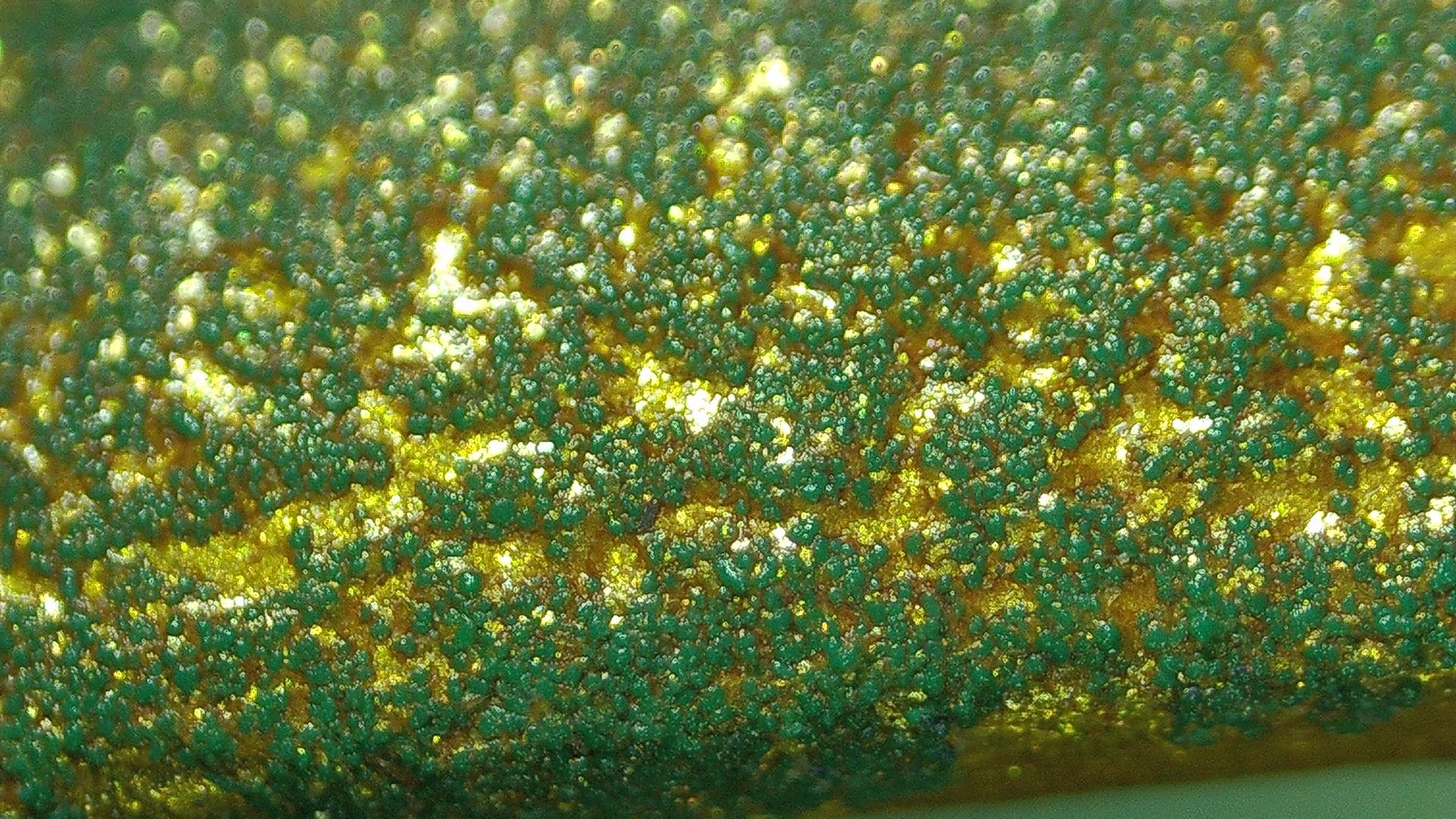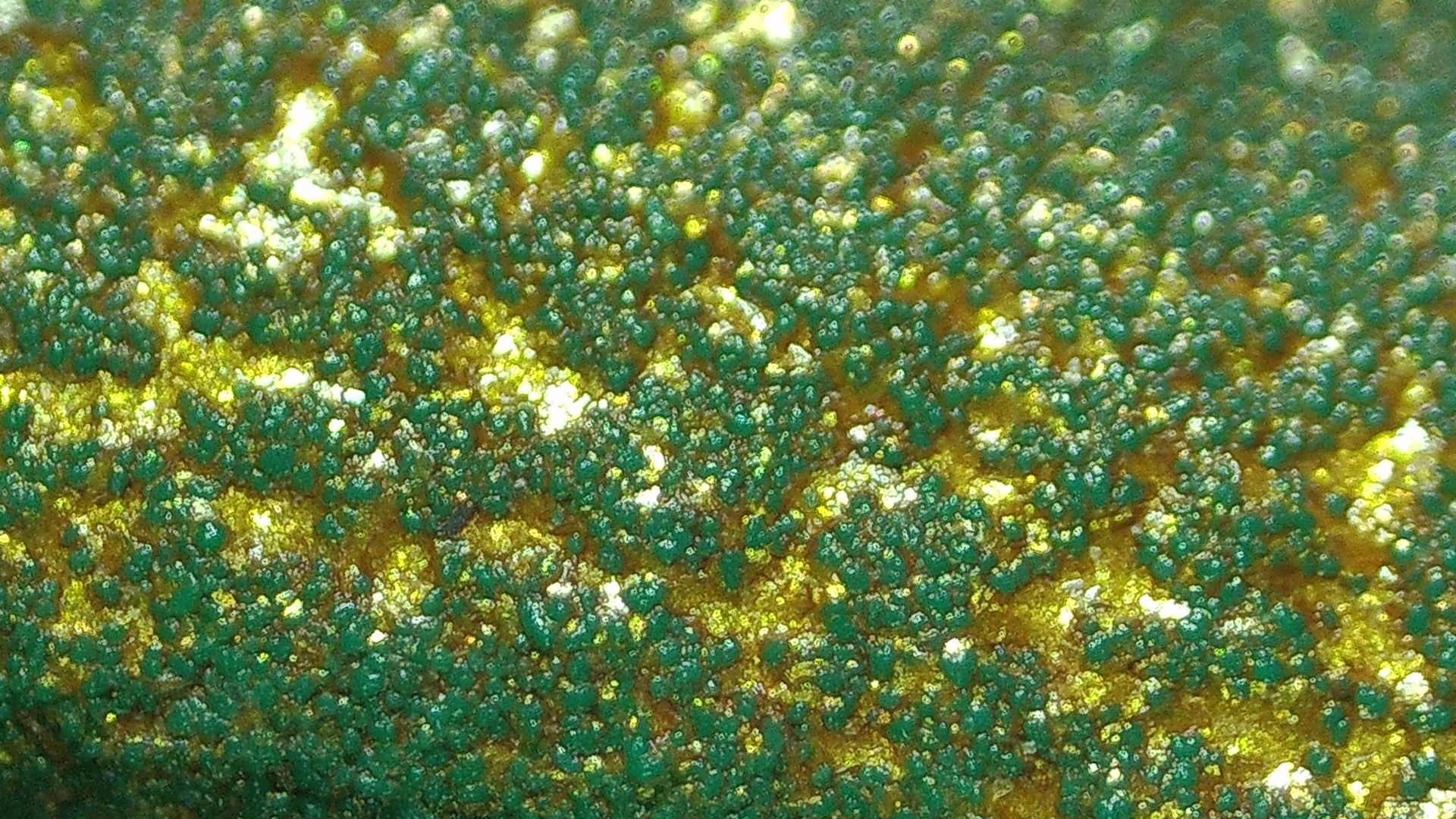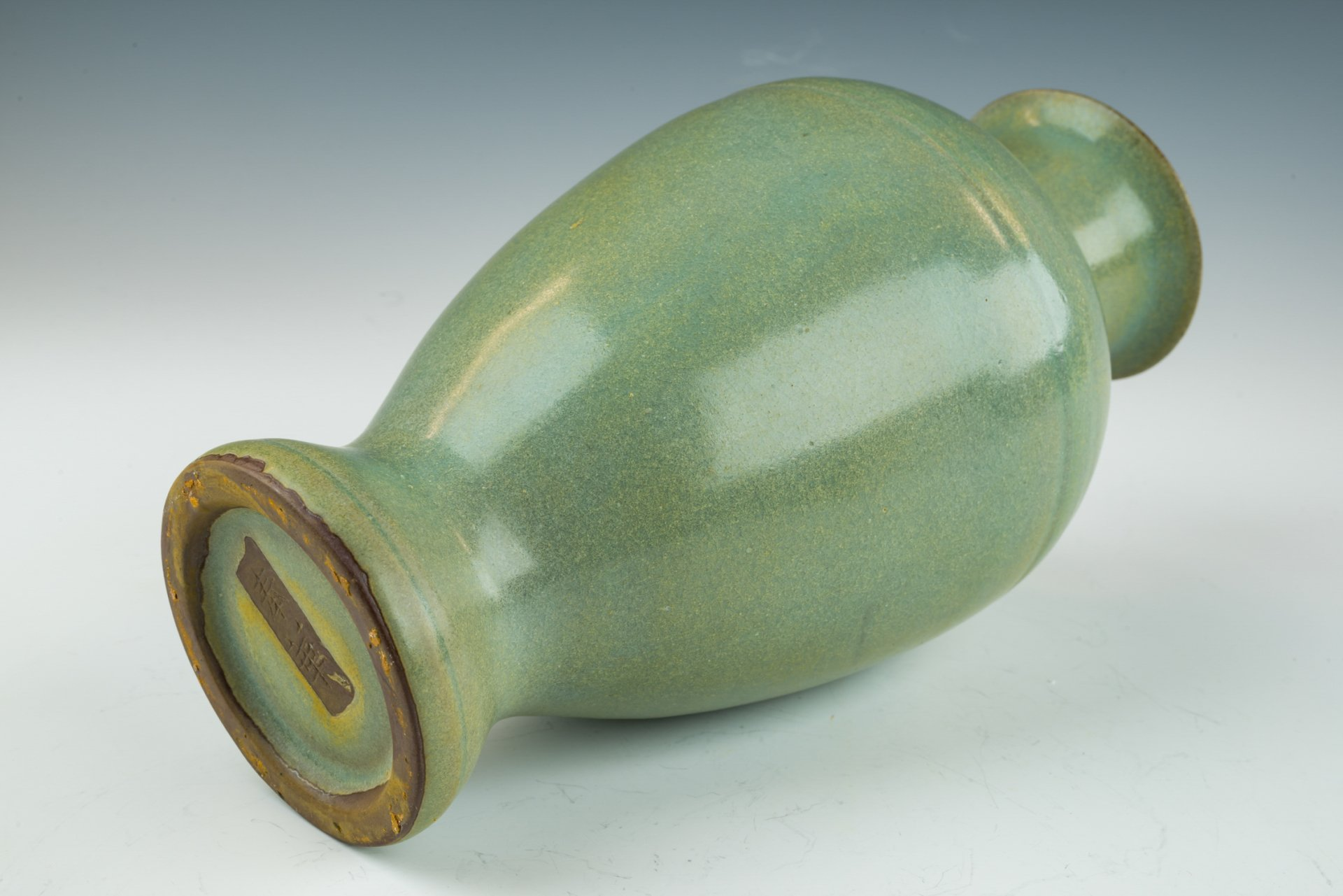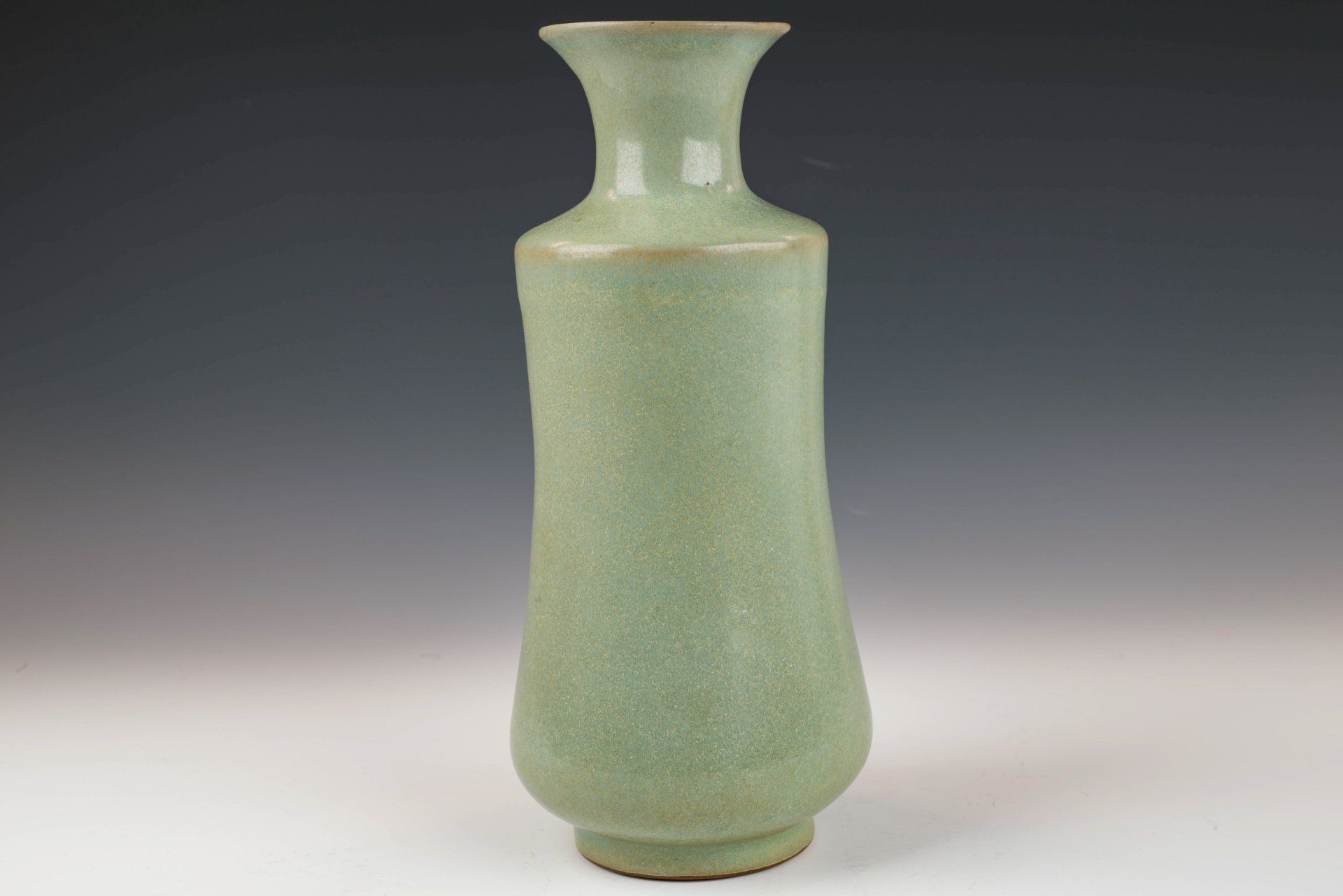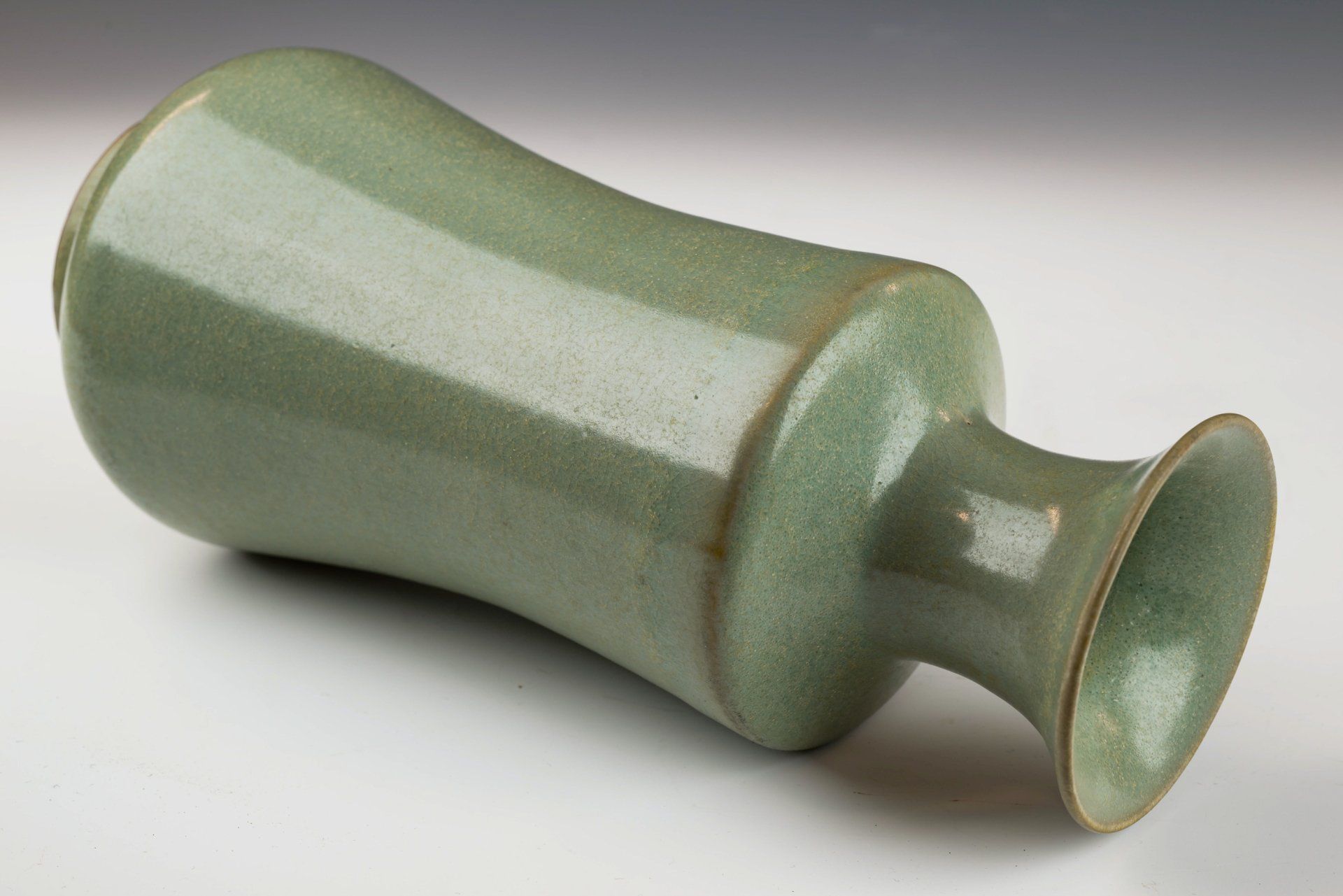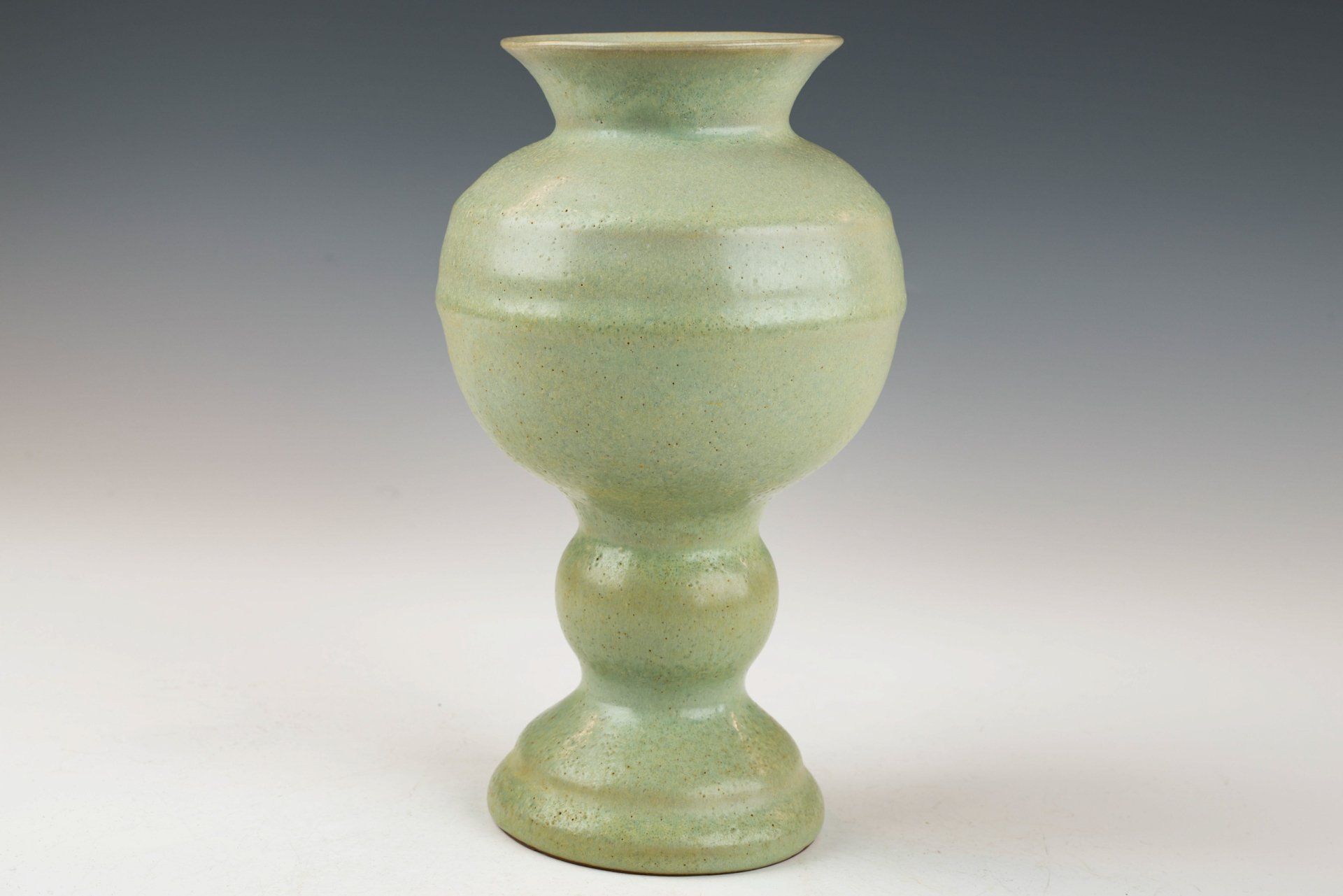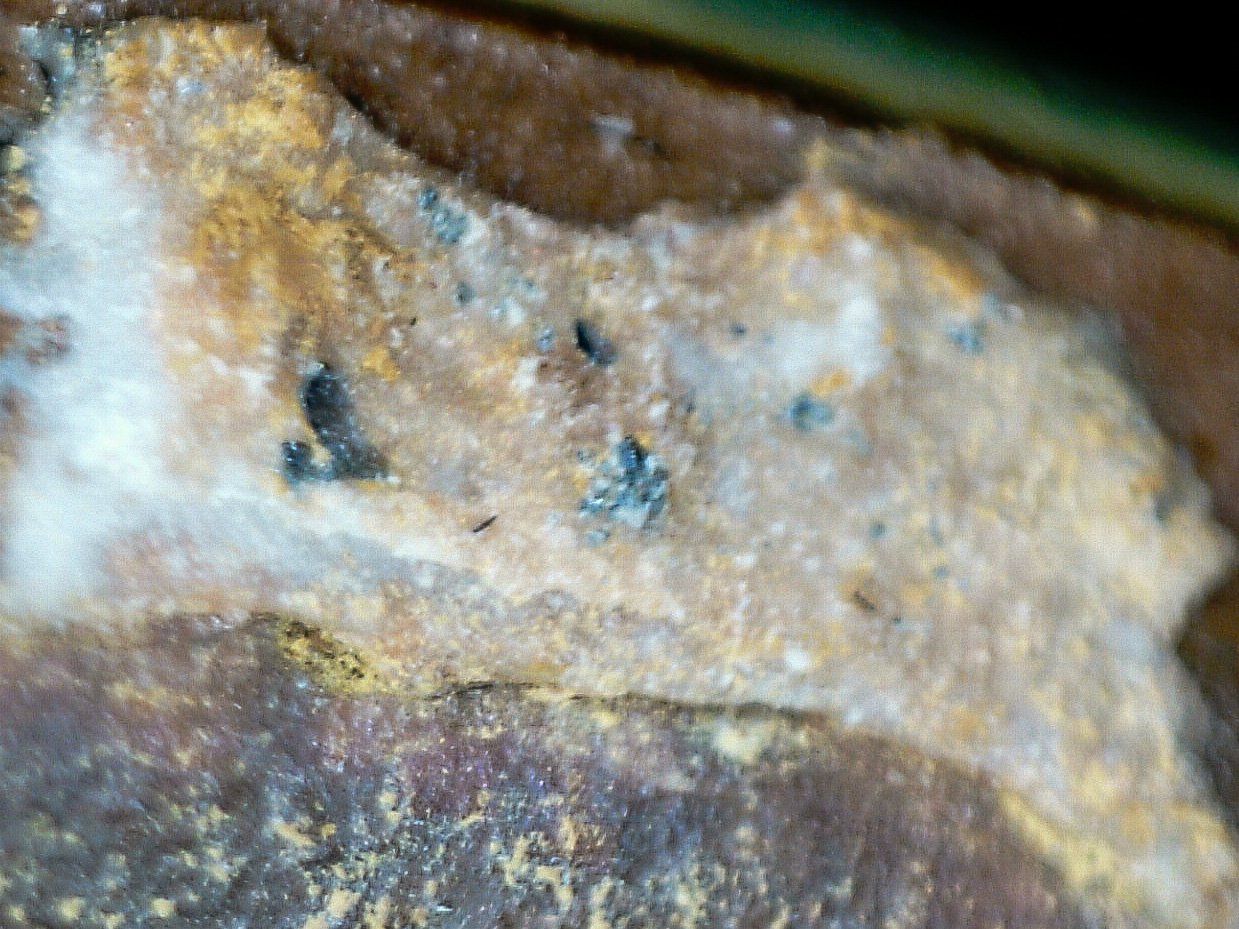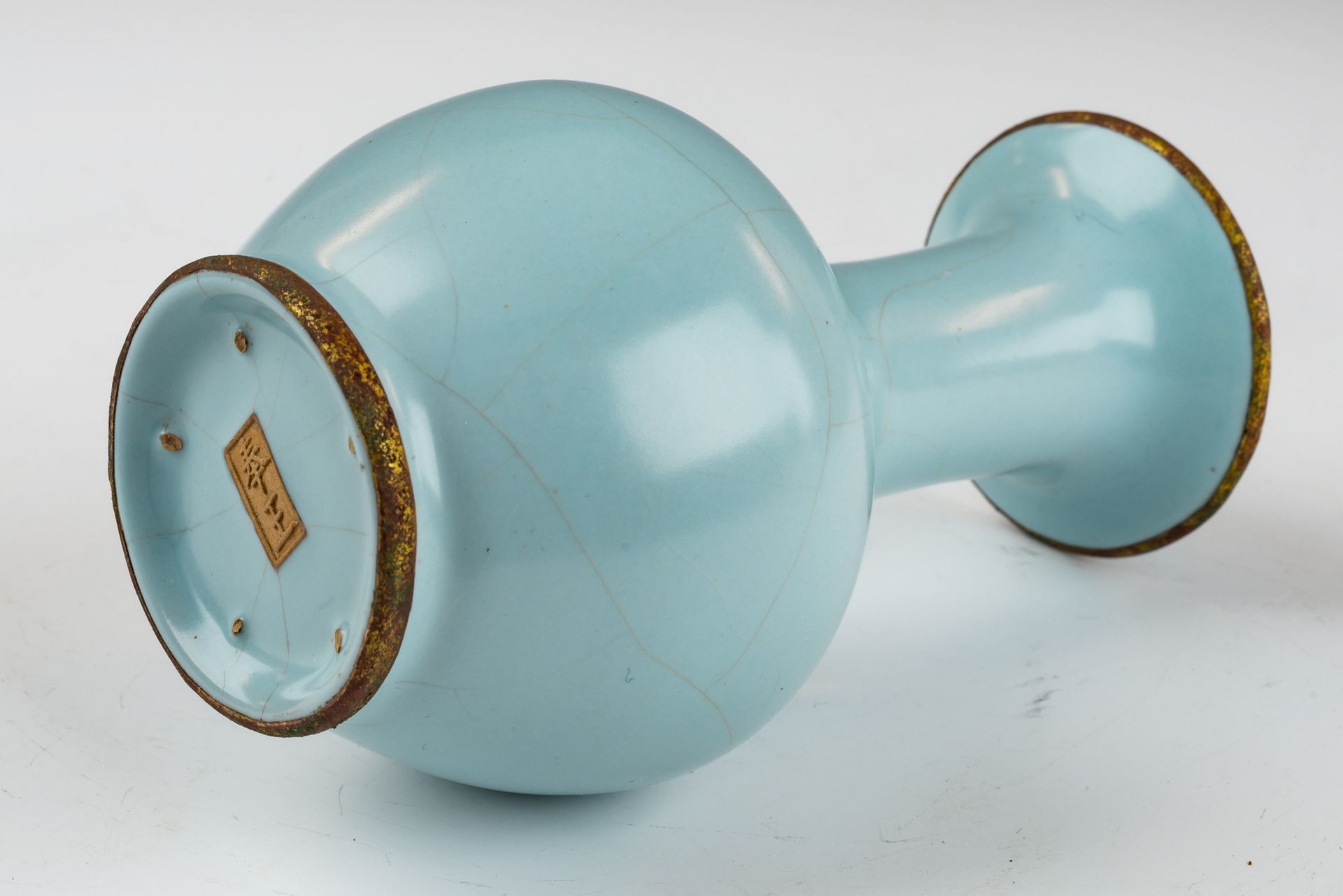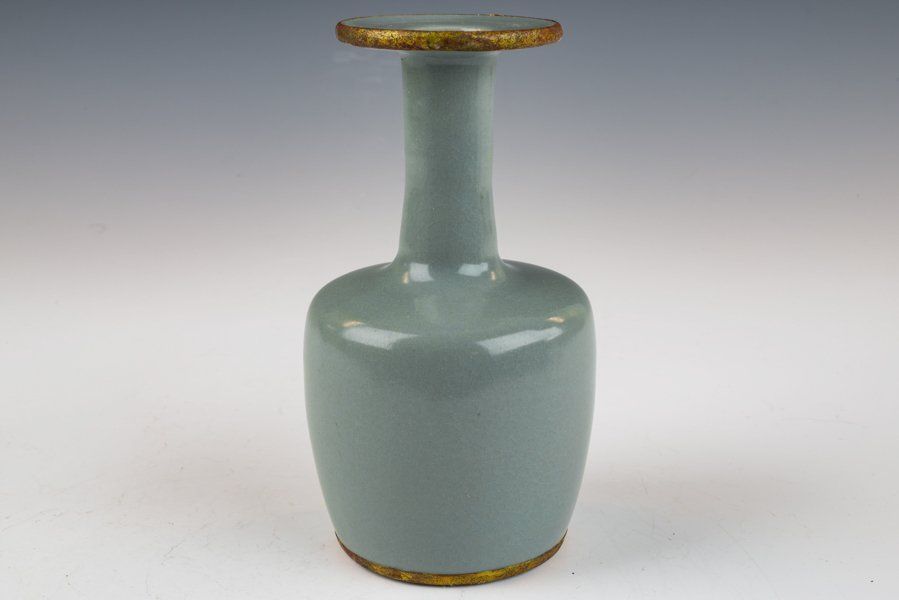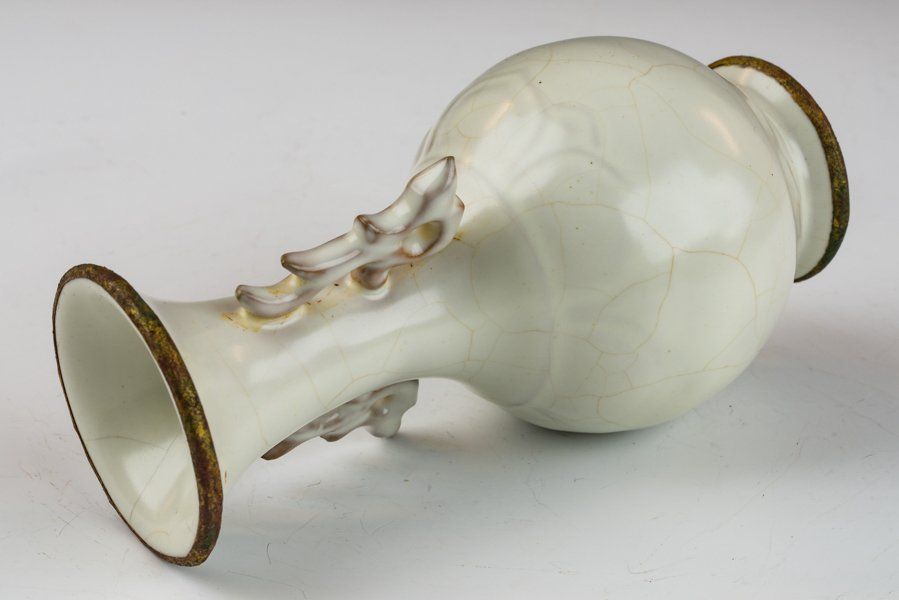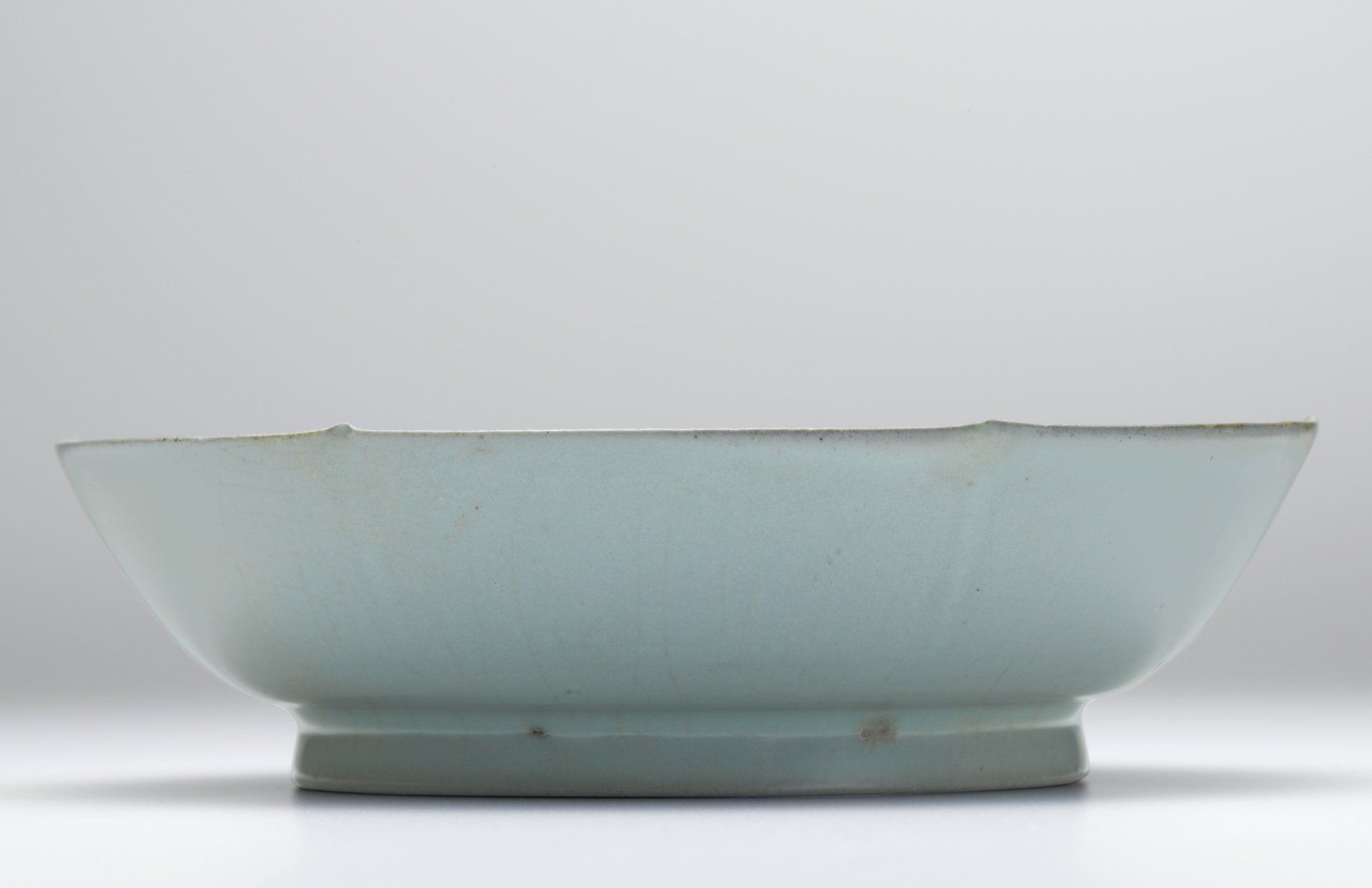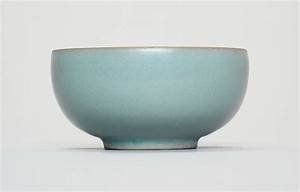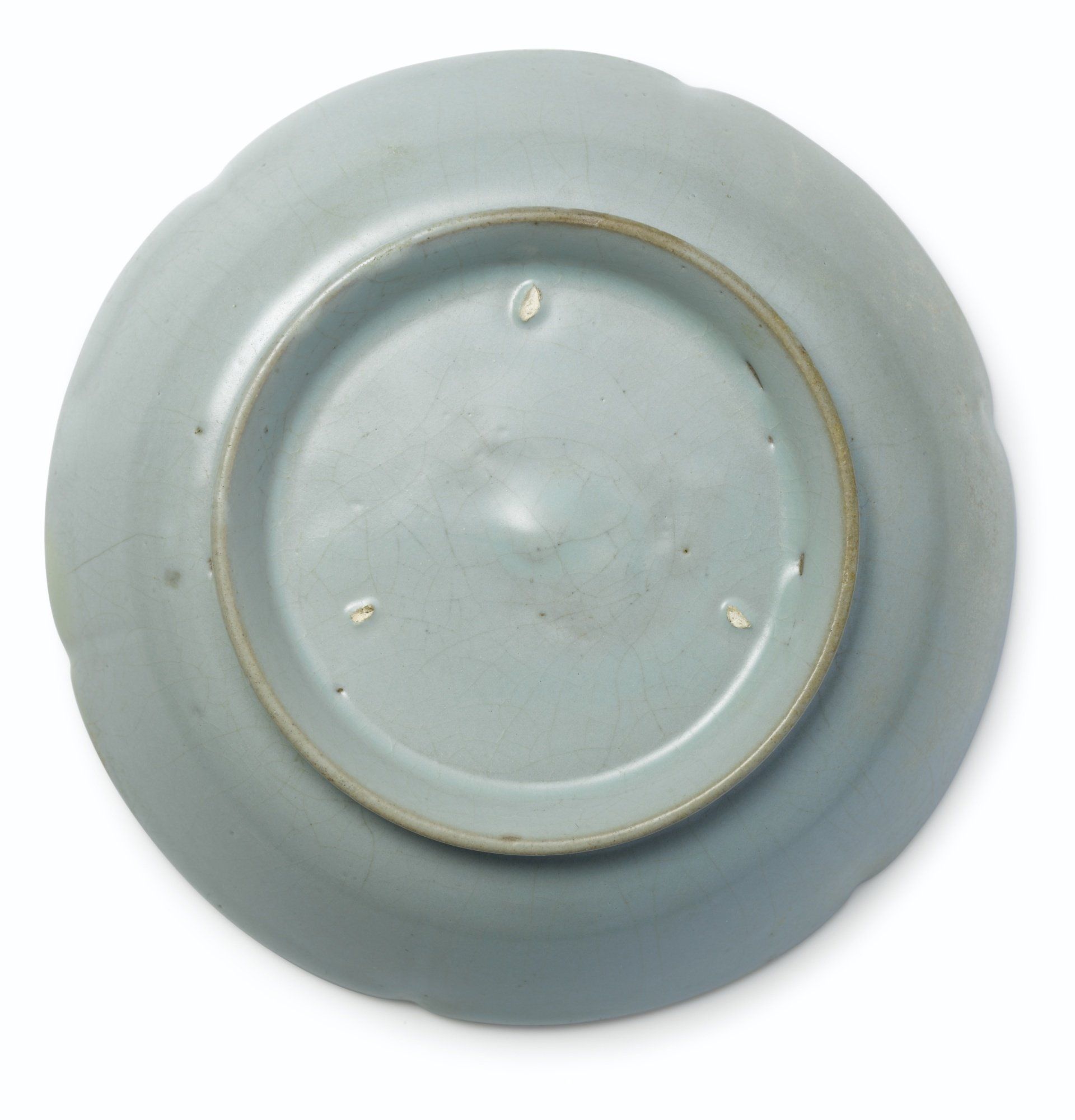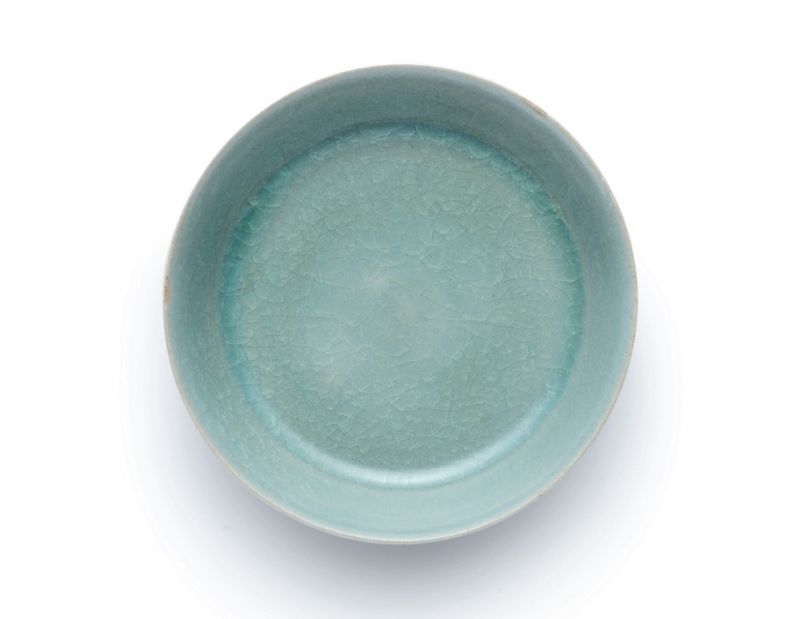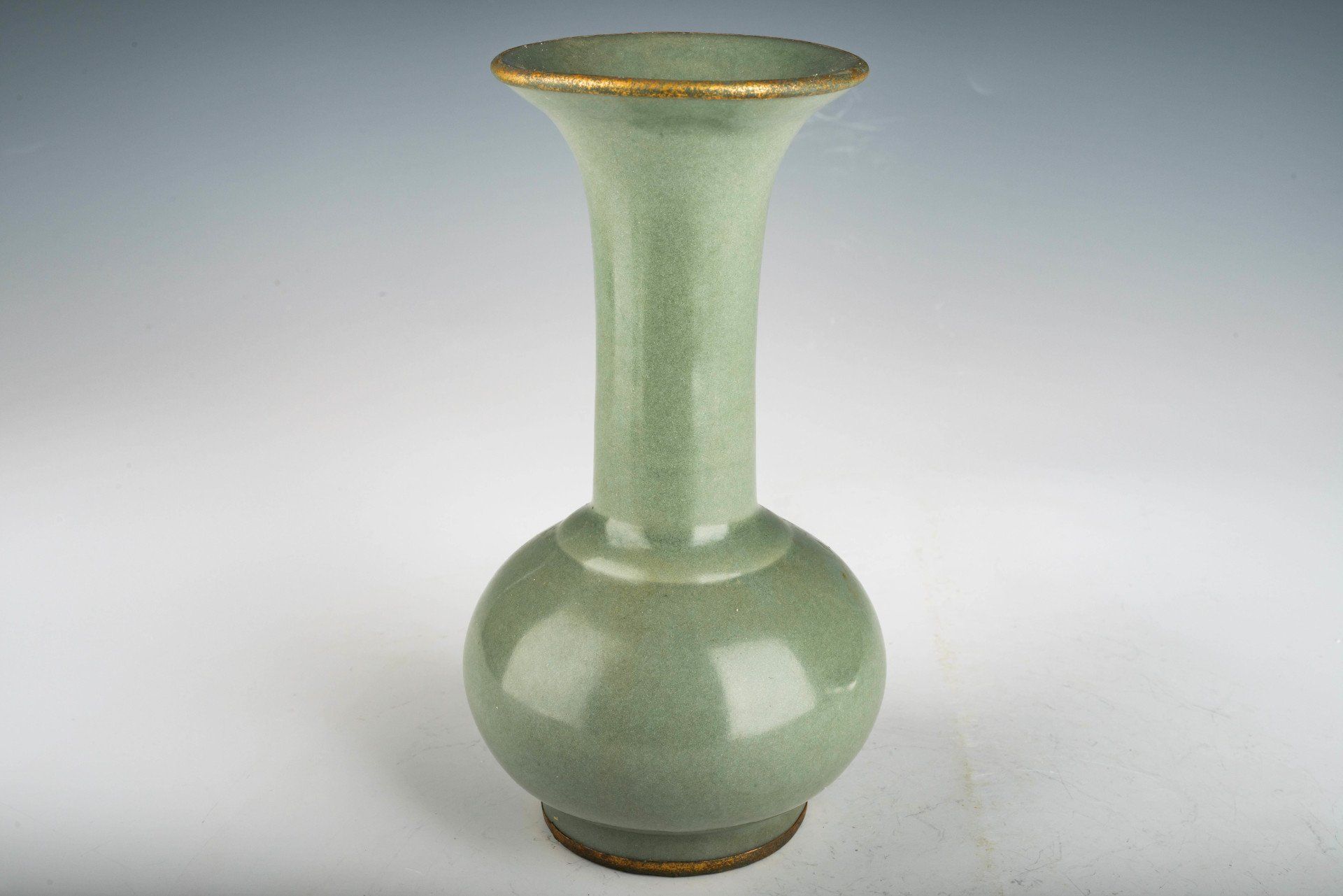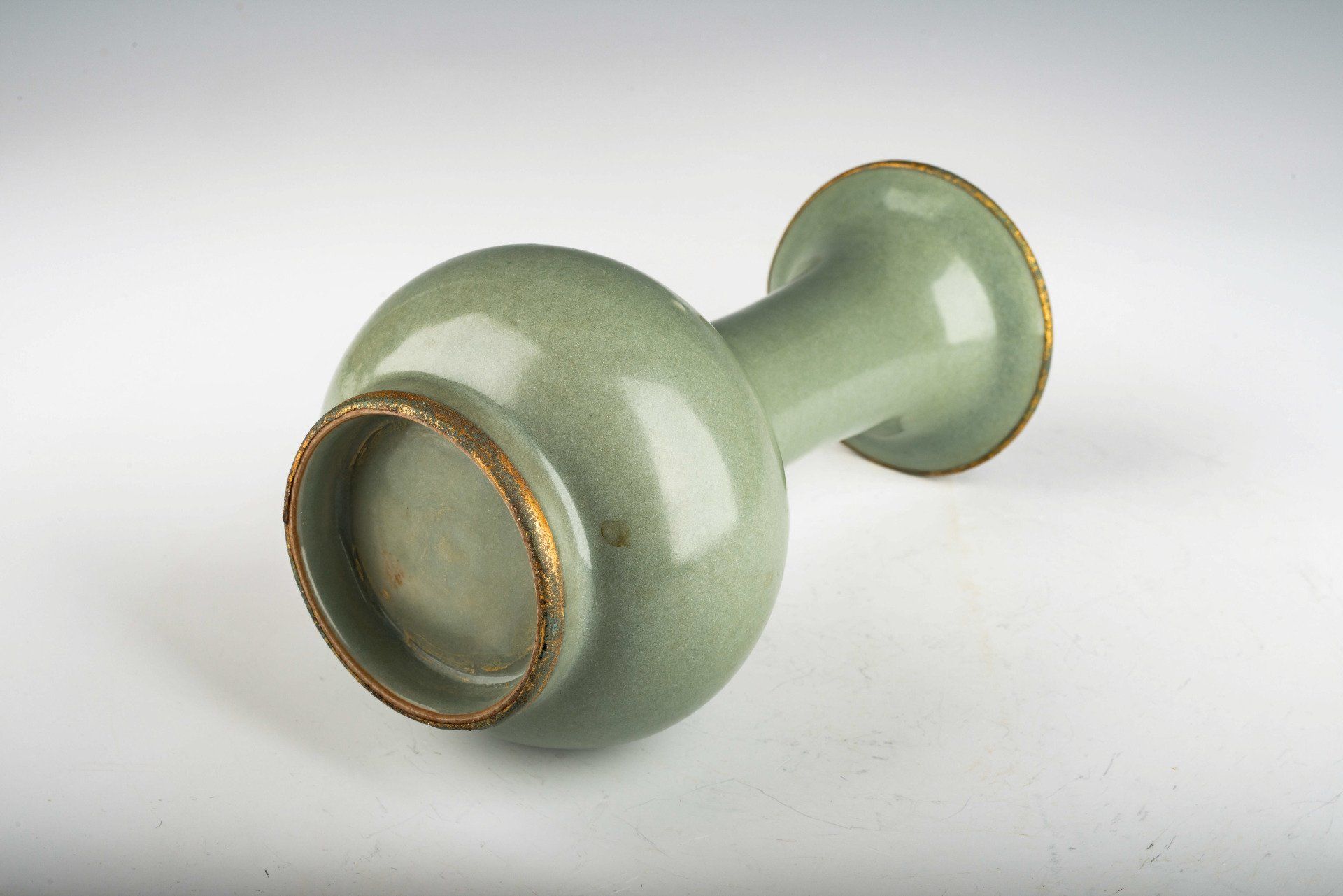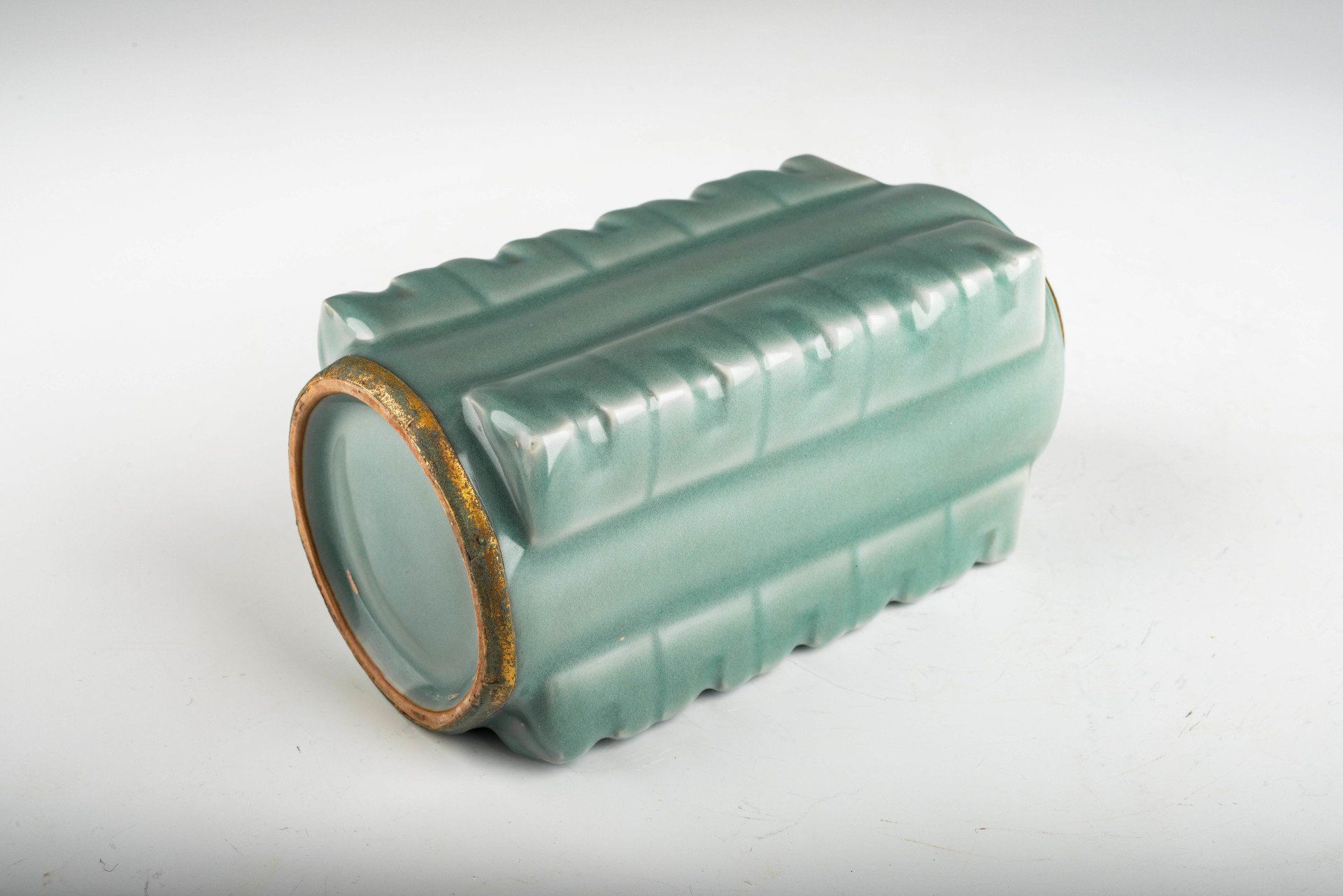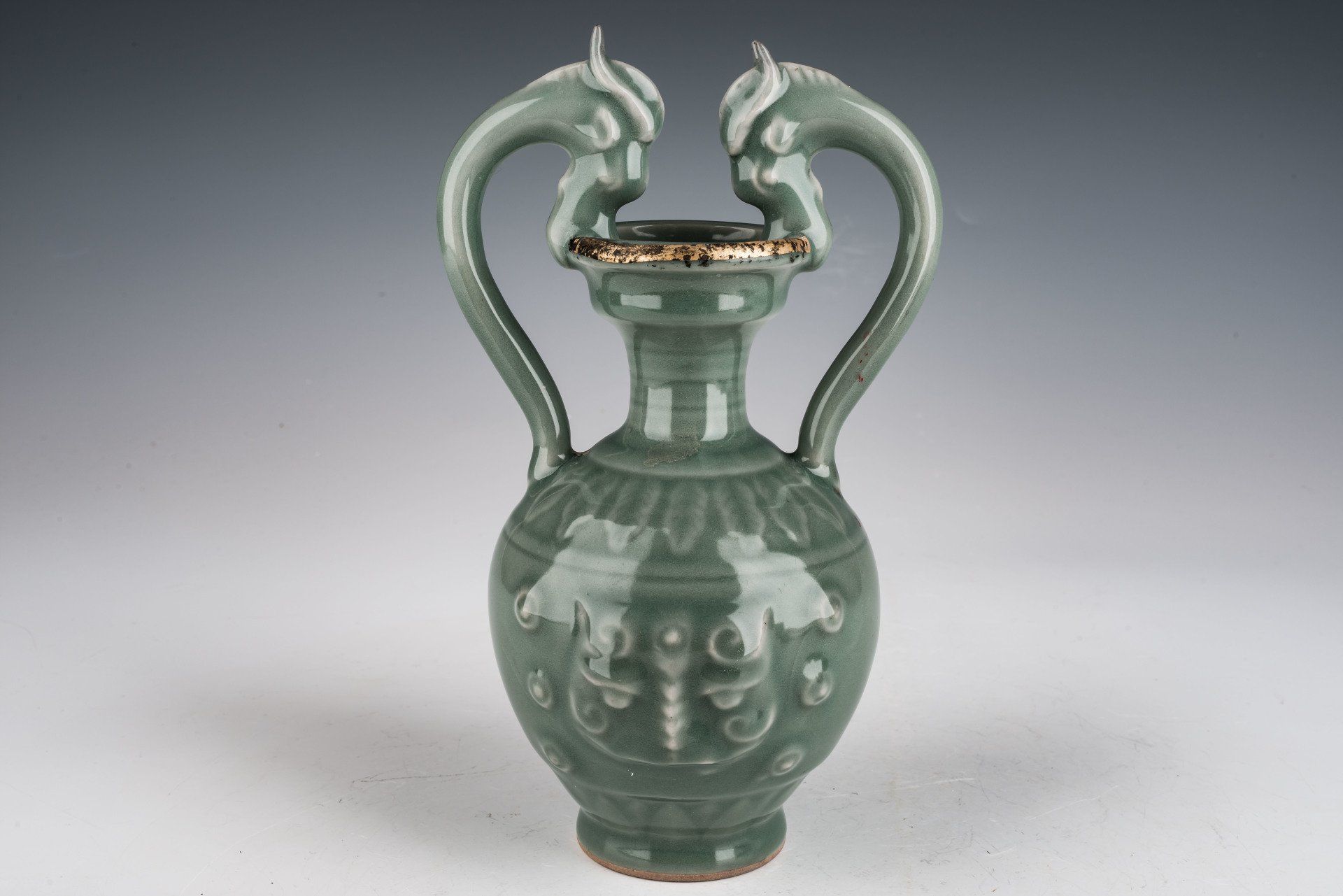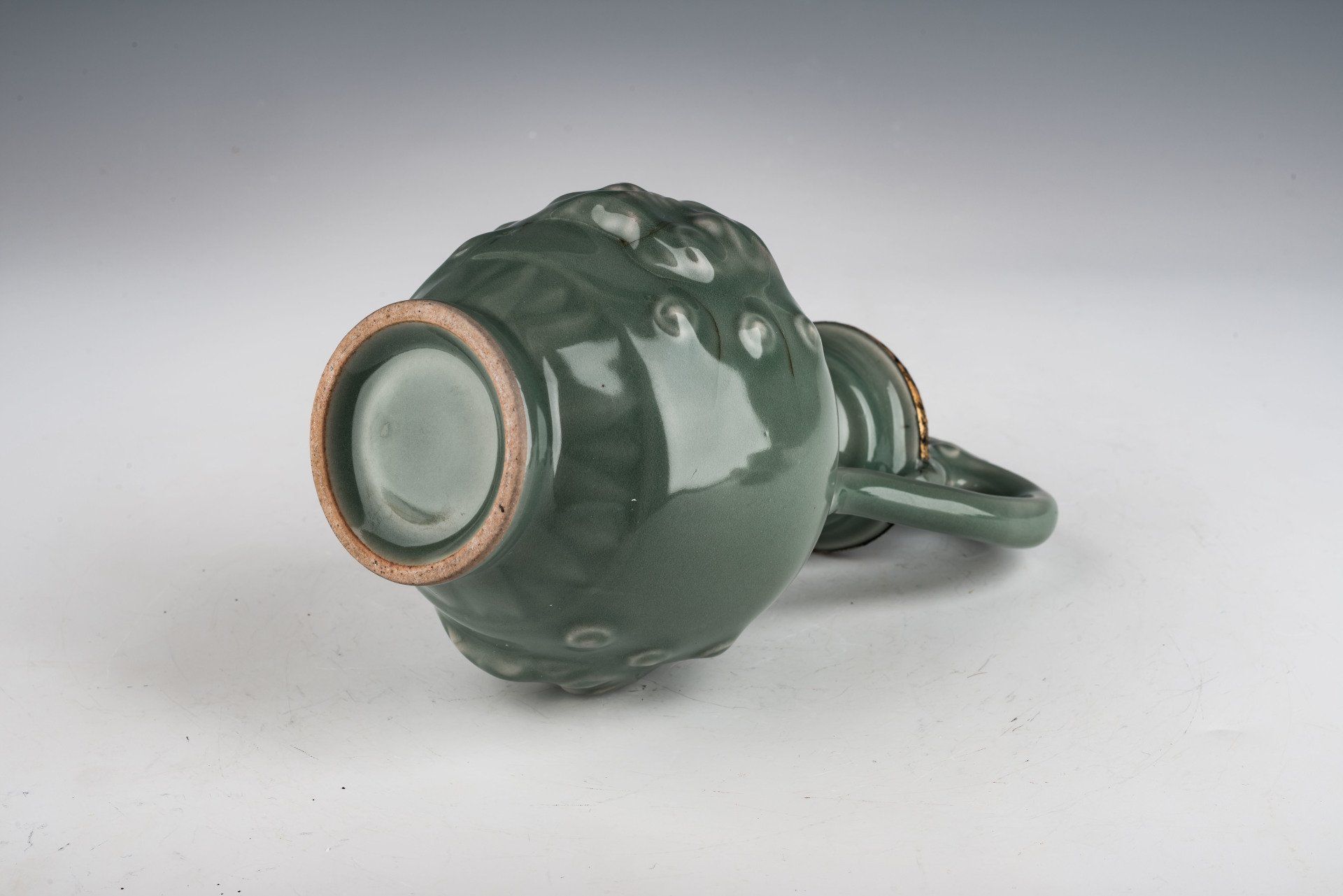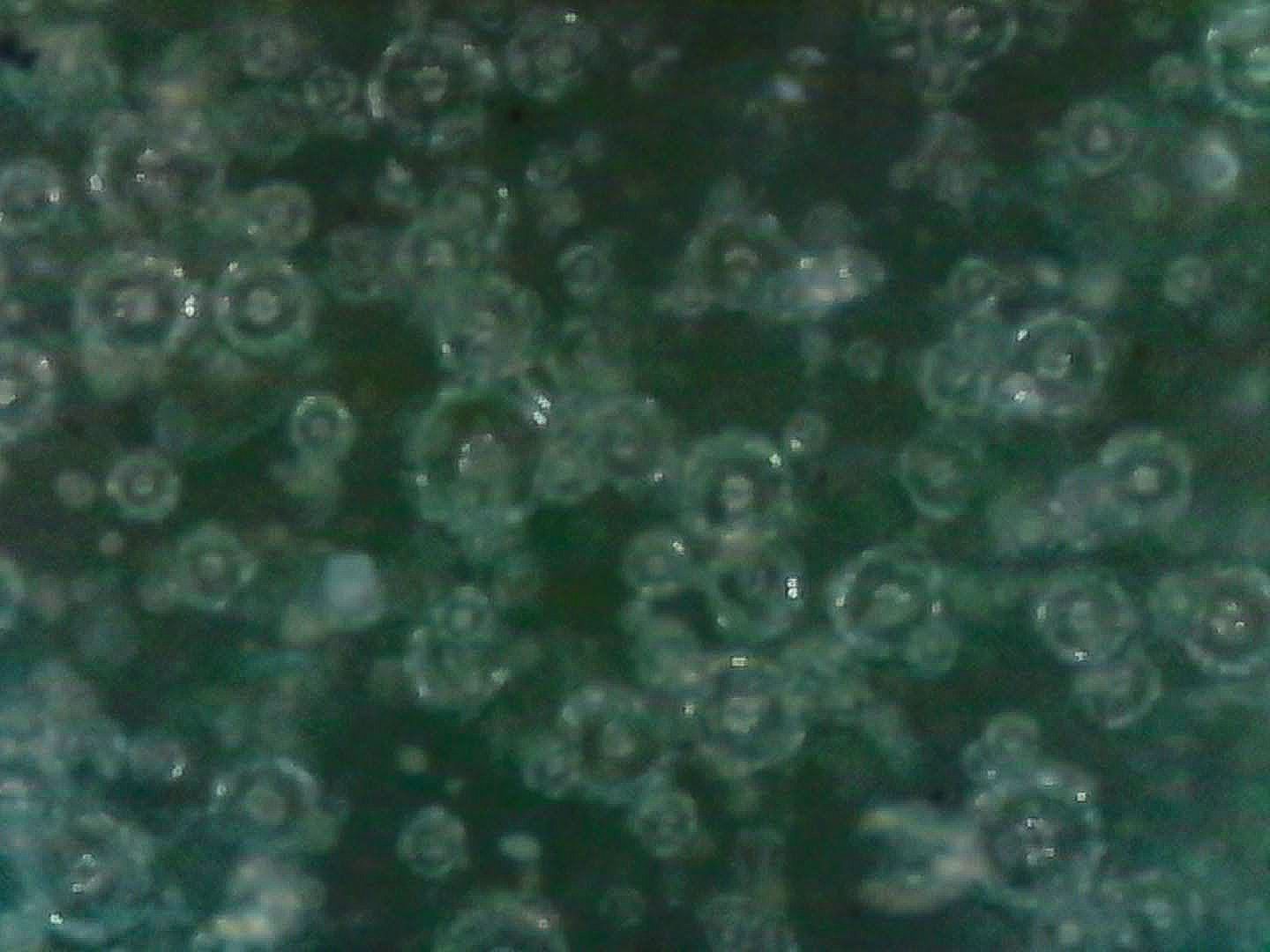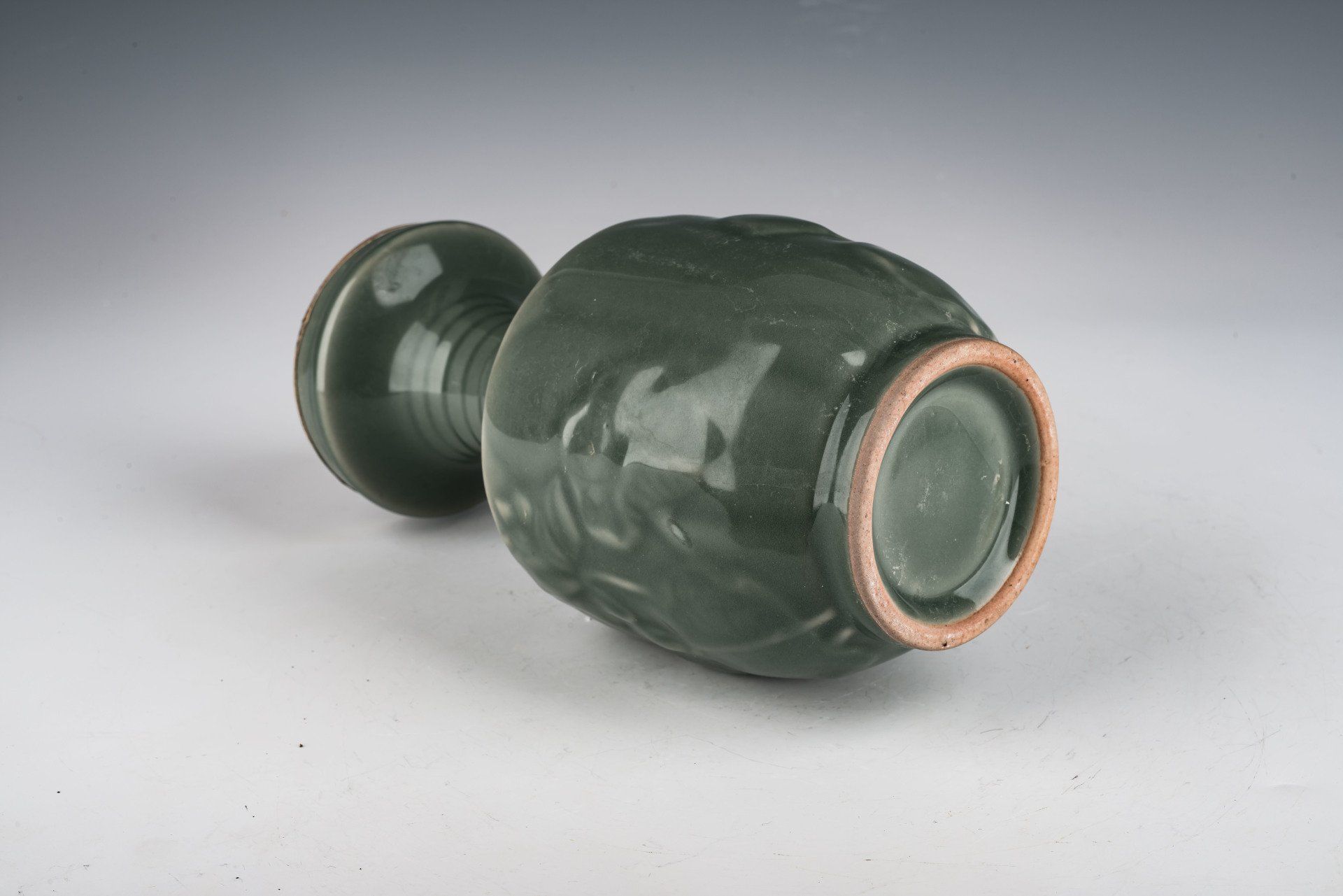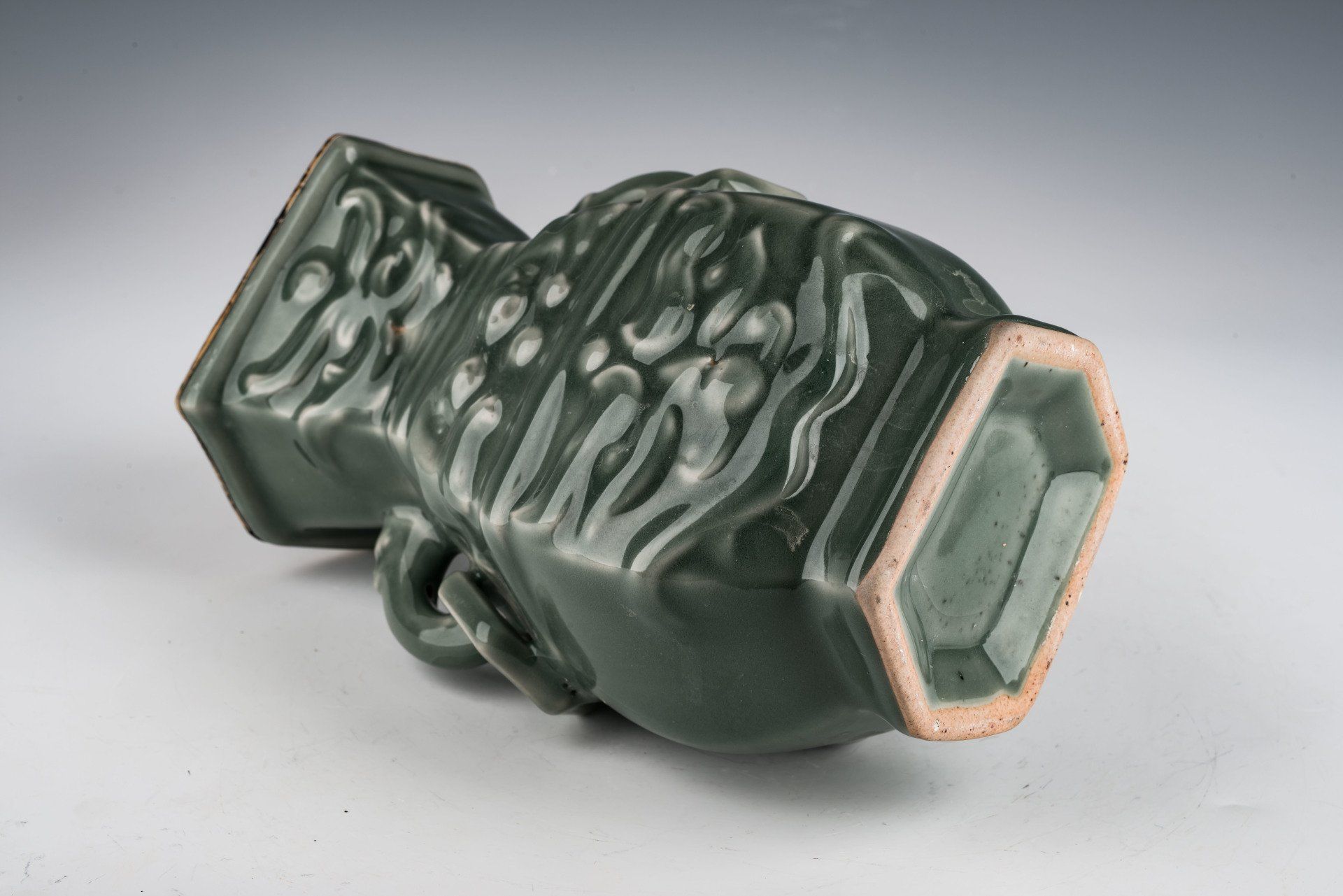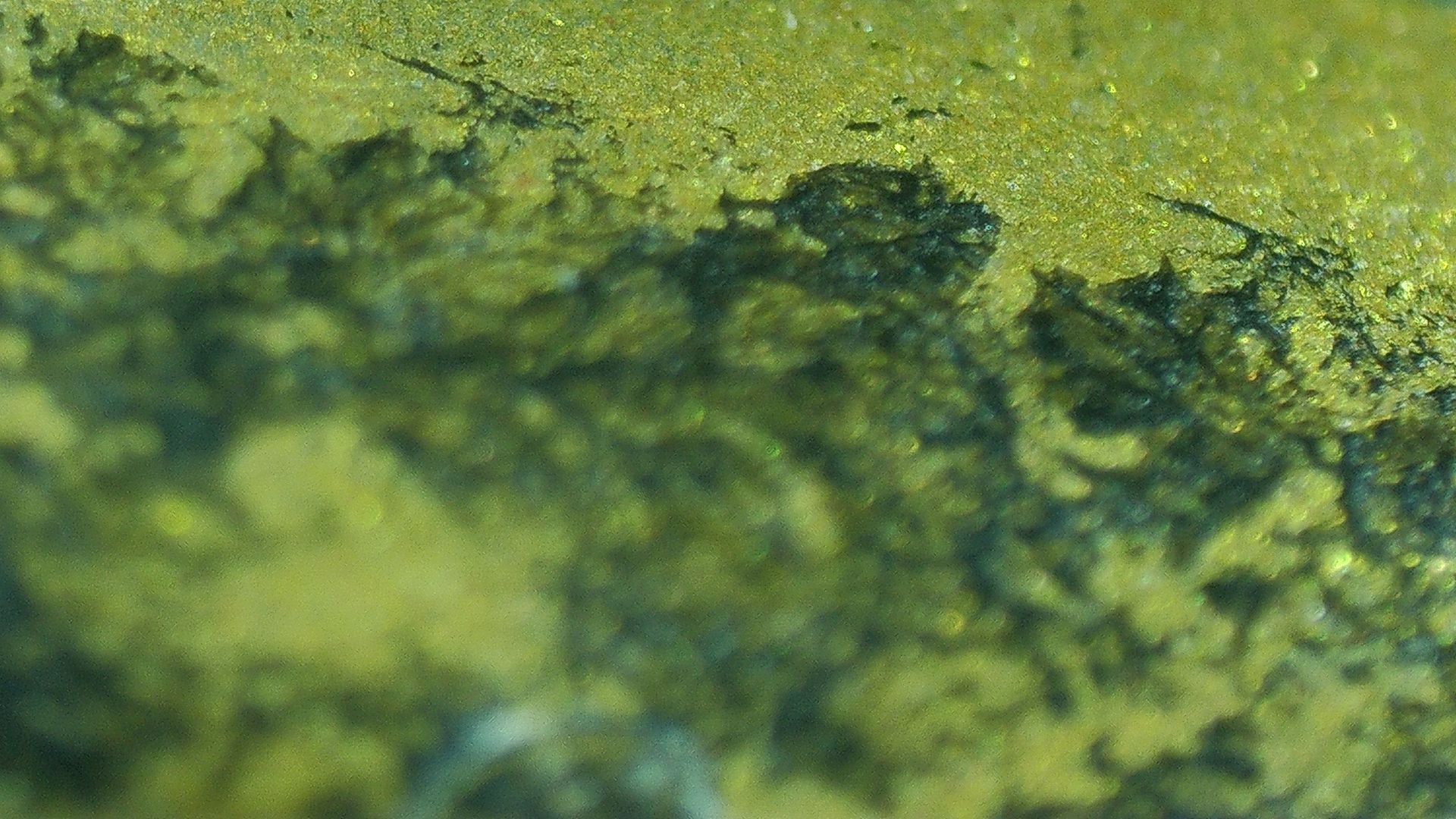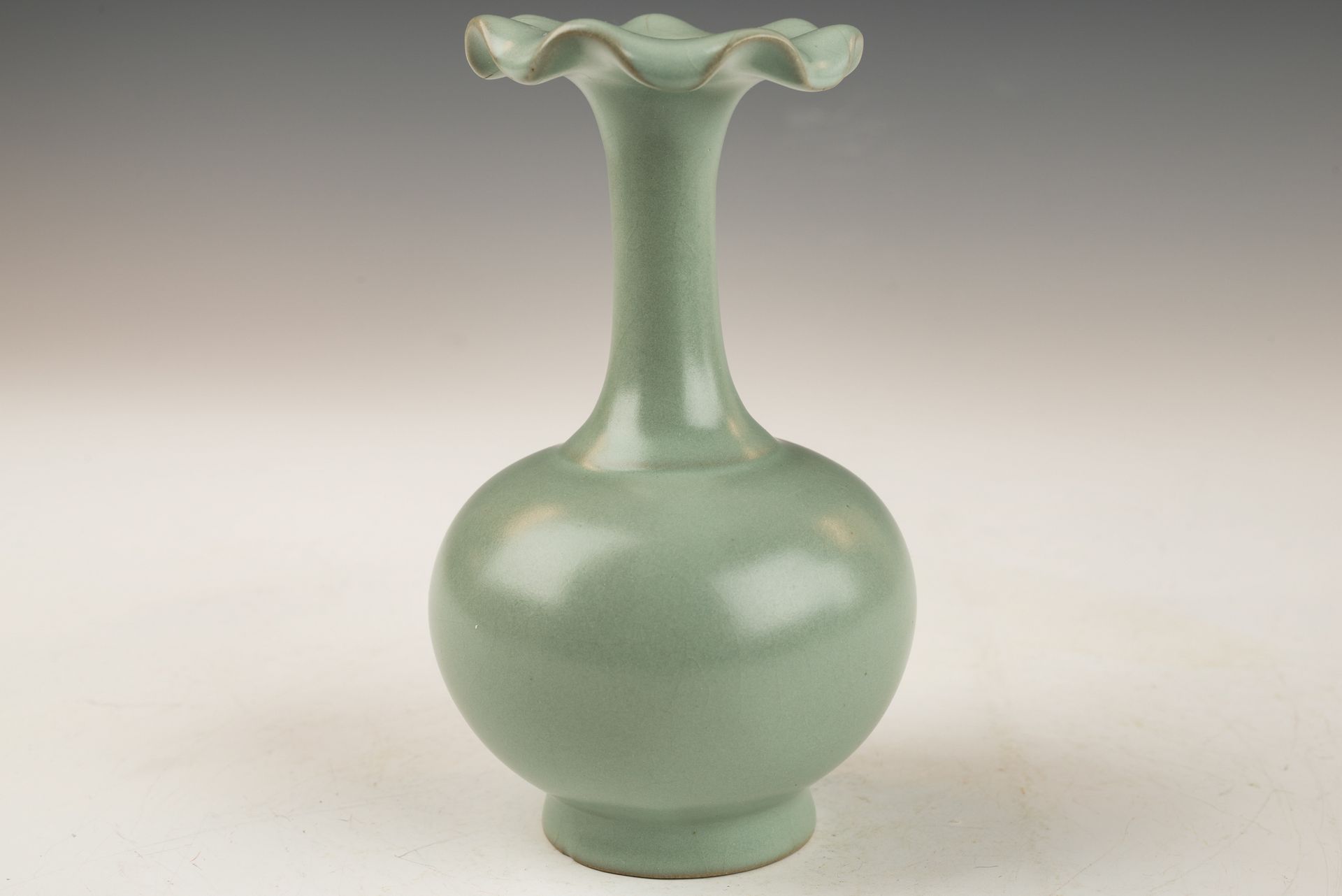Chinese Masterpieces
Official Site
Explore the remarkable legacy of Emperor Huizong's Royal Ru Kiln wares, plus distinguished imperial porcelain from the Qing, Ming, Yuan, and Song Dynasties.
Fine, exceptional Jade Animal carvings from all dynasties.
If you're interested in purchasing any piece on this site or
For All Enquiries, Please Contact
AGENT : Venizelos G. Gavrilakis, President, VENIS STUDIOS
Email
Venizelos@chinesemasterpieces.com tel:+971 50 683 5877
Best View Only Use Your Computer
I invite esteemed institutions and credible organizations to evaluate my collection of Royal Imperial Ru ware that challenges the Established History of Ru Ware with Unmatched Provenance and Authenticity, an opportunity that has been extended for several years. Regrettably, this opportunity has not yet been acted upon, likely due to the associated financial implications and the challenges of confronting the substantial evidence and truths presented on this platform.
Working to bring Education, Honesty to the Chinese Art Market to Help Create Free Open Markets for all People
The Chinese art market is plagued by corruption, misinformation, and elite control—factors that distort the true value of artworks and restrict access to authentic pieces. This site is dedicated to confronting those issues by promoting education, honesty, and a truly free and open market accessible to all collectors, not just the privileged few. One of the most dangerous misconceptions in the industry is the overreliance on provenance in authentication. For Chinese ceramics and jade, provenance rarely extends beyond 150 years—far too short a span to reliably verify pieces that are centuries or even millennia old. Instead, true authentication must be grounded in objective methods: material analysis, stylistic comparisons, and historical research. Yet even these scientific approaches are vulnerable to corruption, as they depend on the integrity of the expert conducting them. Dishonest testing and biased scholarship continue to mislead collectors, while reinforcing a system designed to obscure rather than reveal the truth. Their refusal to engage with honest inquiry highlights the deeply entrenched power structures that shape this market. A perfect example is the treatment of Ru Ware, one of China’s rarest and most culturally significant ceramics. Its value should be determined by the quality, authenticity, and history of each piece—not by who owns it. Yet, powerful institutions actively suppress the circulation of high-quality Ru Ware, keeping it out of the public eye and promoting inferior examples to inflate their control over pricing and prestige. The result is a market built not on the merit of the artwork, but on manipulation and exclusion. Collectors deserve better. They deserve access to the truth—not just about individual pieces, but about how the system works, and who benefits from its secrecy. That’s why I created this site: to empower collectors and scholars with accurate information, to expose the mechanisms that keep the market closed and controlled, and to fight for a future where value is defined by the artwork itself—not by its paper trail or previous owner. By providing honest analysis and transparency, we aim to restore integrity to the Chinese art world. Explore our research and insights to learn how authentication should be done, why institutions must evolve, and how we can return value and meaning to the art itself. The future of collecting should be open to all—rooted in truth, not influence.
If you're interested in purchasing any piece on this site or
For All Enquiries, Please Contact
AGENT : Venizelos G. Gavrilakis, President, VENIS STUDIOS
Venizelos@chinesemasterpieces.com tel:+971 50 683 5877
Groundbreaking Discovery Challenges the Established History of Ru Ware with Unmatched Provenance and Authenticity
All Collectors Must Know This Authentication Information
The Inaugural Ceramics Commissioned by the Emperor in Chinese History: Guaranteed 100% Authenticity from the Northern Song Dynasty's Official Imperial Royal Ru Kiln Porcelain Collection – An Unmatched Provenance of Authenticity.
Understanding "Botryoidal Malachite" Patina
Formation of Fanlike Crystal Needles
Most crystals simply begin to grow using available molecules. This results in discrete crystals whose sizes depend on available material. But malachite is different. It seldom forms discrete crystals of good size. Instead, scientists say, developing malachite crystals “split”, diverging into tiny needles, packed together in a fanlike arrangement.
The fanlike malachite needles grow into tightly bonded spherules, which crowd together and bond, forming a solid mass. When the spherules stop growing and terminate, the top surface is rounded to some degree. The terms “botryoidal” (resembling a cluster of grapes) and “reniform” (kidney-shaped) are used to describe large to small undulating masses of spherules.
Author Bob Jones Holds the Carnegie Mineralogical Award, is a member of the Rockhound Hall of Fame, and has been writing for Rock & Gem since its inception. He lectures about minerals, and has written several books and video scripts.

WATCH
Click On Video Clip Proves Botryoidal Malachite Can't Be Faked! No one has ever faked this Botryoidal malachite patina only happens in nature. This Guaranties Authenticity Of This Imperial Royal Ru Ware Collection
Priceless Past WWW.pricelesspast.com
Link to Full Video https://youtu.be/5O-l6vY0dnc?si=FsHEJdKox0a1p0bH
THERMOLUMINESCENCE TESTING
A recent inquiry regarding thermoluminescence (TL) testing prompted an explanation of its limitations and the superior alternatives available for assessing the authenticity of artifacts. In my practice, I frequently prioritize collecting pieces adorned with fire-gilded bands, as these are generally regarded as more significant and expertly crafted. In the context of Song wares, pieces with fire-gilded bands are classified as tribute wares, highlighting their value. The existence of layered cuprite and malachite, observable attributes utilized by experts to authenticate artifacts, provides a more dependable means of verification than TL testing. It is essential to recognize that such natural characteristics cannot be fabricated. Moreover, the reliability of TL testing is compromised, particularly when human involvement in sample collection and analysis is factored in. Currently, there are only a limited number of laboratories globally that conduct TL testing, and their credibility can be questionable. These institutions may exhibit biases and have been known to manipulate samples—either by switching them out or subjecting them to heat treatments—in an attempt to present them as recently fired. This is particularly concerning with high-value pieces. For example, one must question why Sotheby’s has not subjected their Ru Ware to TL testing; it is often unnecessary and can detract from the integrity of the piece itself. Expertise in material identification is crucial, especially given that the constituent materials are no longer readily accessible and cannot be accurately replicated. Consequently, I advise against TL testing, especially for significant artifacts. Should testing be deemed essential, I encourage engaging with laboratories that can conduct double-blind studies and are independent of auction house affiliations. To date, I have yet to encounter a lab willing to facilitate such testing, and I welcome any recommendations for institutions that could provide this service. I am confident in the veracity of my statements and would willingly undergo a lie detector test to affirm my position. However, I would be skeptical of the results if accreditation was sought from those in the industry. An increasing number of collectors are awakening to these realities, recognizing the pervasive corruption in this market and advocating for substantial reform.
An Analysis of Royal Imperial Ru Ware Commissioned and Collected by Emperor Huizong of the Song Dynasty During the Northern Song Period. ppjrs
Ancient Treasures: Ru Kiln Secrets Revealed!
Emperor Huizong reigned from 1100 to 1126, during which time he abdicated in favor of his son. He is renowned for his advocacy of Taoism and is celebrated for his exceptional talents in poetry, painting, calligraphy, and music. However, his Northern Song Empire ultimately succumbed to the advancing Jin armies, leading to his capture in 1127. Huizong died in captivity in 1135, having transitioned from the status of the world's wealthiest individual to that of a diminished man. After his death, his extensive collections were meticulously consolidated and preserved in large wooden crates, enduring through time.
Since China's opening in the 1990s, various historical collections have entered the marketplace. Notably, my collection of Imperial Ru ware originates from Emperor Huizong's collection. During his tenure, he commissioned the Ru Kiln to produce wares specifically for himself and his court, recognizing it as the foremost source of Imperial tribute wares. The tribute wares produced by the Ru Kiln during this era were distinguished by their remarkable quality, often devoid of defects. To further enhance their uniqueness, these wares incorporated a variety of colors and featured fire-gilded bands on the rims, occasionally on the bases. The gilding technique utilized gold and mercury, a method that has not been employed since the mid-1800s due to safety concerns. The intricacies of the fire-gilded bands display complex corrosion patterns of cuprite and malachite, natural phenomena that are exceedingly difficult to replicate in laboratory settings. Established research underscores the challenges associated with the transformation from metal to cuprite to malachite, with most synthetic formulas failing to replicate malachite atop cuprite layers, thereby providing validation for the authenticity of such artifacts.
This innovation inspired other kilns to adopt similar techniques, incorporating fire-gilded bands in their tribute wares. Before the Ru Kiln attained its designation as the official Imperial kiln, its production primarily consisted of small wares that exhibited sporadic crackling and spur marks due to the firing process on stilts. Many of these pieces contained imperfections, resulting in the destruction of severely flawed items and the sale of lesser-quality wares to the public at reduced prices. Such flawed wares frequently appear in auctions conducted by Sotheby's and Christie's and are often showcased in museums housing Ru ware collections. Higher-quality pieces were sold at premium prices to affluent merchants. The finest wares were presented as tribute to Emperor Huizong, who received extravagant offerings from various kilns. Recognizing the demand for superior quality wares, Emperor Huizong designated the Ru Kiln as the first official Royal Imperial kiln in China.
His objective was to create wares that were distinctive and specifically intended for himself and his court. He sought pieces that echoed the historical celadon wares, aiming for a jade-like aesthetic reminiscent of Korean Koryo ceramics. After reviewing prototype pieces, he insisted on eliminating spur marks by firing the wares flat in the kiln with unglazed foot rings. Furthermore, he mandated the incorporation of rare blue crushed agate into the glaze, a feature unique to the official Royal Imperial wares commissioned by him. The initial commissioned wares displayed a grayish biscuit that transitioned to brown post-firing, with some pieces bearing inscriptions. These wares featured distinctive crack ice crackles. Emphasizing size and simplicity, these pieces were larger than previous tribute wares and showcased refined forms, such as trumpet-shaped mouths. Despite occasional flaws during the firing process, these Royal Imperial wares were exclusively designated for the Emperor and his court. As the official Imperial kiln, the Ru Kiln's focus was solely on producing wares for the Emperor and his court. Huizong appreciated the intrinsic beauty of these often flawed and simplistic pieces, recognizing their individuality akin to human character.
However, some of his advisors sought more visually appealing wares. Consequently, he tasked the Ru Kiln with creating the most exquisite celadon wares ever produced in China, emphasizing elegance and luxury in design. The second series of official Royal Imperial wares manifested in various celadon hues, adorned with rich glazes that seamlessly integrated rare blue crushed agate. Unlike the initial batch, these wares were meticulously crafted and largely free from prior defects, with exquisite forms and flat-fired unglazed foot rings. Selected special wares featured gilded copper or silver bands, enhancing their opulent appearance. Importantly, all second commissioned official Royal Imperial wares lacked specific markings. It must be emphasized that wares produced prior to the Ru Kiln’s designation as the official Imperial kiln do not contain agate in their glazes. Certain auction houses and museums mistakenly claim the presence of crushed agate in these earlier wares, fabricating narratives that assert its dissipation during the firing process. This assertion is fundamentally flawed, as agate requires excessively high temperatures for melting—far exceeding the maximum temperatures reached by Song dynasty kilns. Additionally, the practical difficulties associated with crushing agate into a fine powder contribute to the clear visibility of agate traces in authentic Royal Imperial Ru wares.
I have compiled a significant collection of Ru/Ju wares, artifacts that have remained largely concealed since the decline of the Northern Song Dynasty. The Qianlong Emperor's collection predominantly comprised flawed merchant wares developed prior to the Ru Kiln's establishment as the official Royal Imperial kiln. It is only since the 20th century and the reopening of China that many fine pieces, once obscured from view, have entered the marketplace. This narrative seeks to illuminate the complexities surrounding Ru/Ju Kiln wares in the context of Emperor Huizong's reign. For many years, scholars and collectors have relied on pieces from the Qianlong Emperor's collection; while aesthetically appealing, they do not accurately represent the authentic Royal Imperial Ru/Ju wares commissioned by Huizong for himself and his court.
In the aftermath of the Jin Army's incursion into the Northern Song Dynasty, workers from the Imperial Royal Kiln sought refuge in the southern region, with many likely contributing their skills to the Imperial Guan Kilns, while others joined the Longquan Kiln. Notably, this lineage accounts for the visual similarities observed between certain Longquan pieces and the second commissioned Royal Ru Kiln wares, although the Longquan products lack the characteristic crushed agate present in the latter's glazes.
Please examine all the information, photos, microscopic photos, that prove my conclusion.
The Ru-Wares Represent the First Commissioned Official Imperial Ceramics within China's Historical Context.
The first commissioned Royal Imperial Ru ware is thoroughly documented in historical texts, which indicate that Emperor Huizong instructed the Ru/ Ju Kiln to produce celadon wares characterized by modesty, understated elegance, and a deliberate simplicity that evokes a sense of antiquity. Notably, these initially commissioned Royal Imperial wares incorporated Rare Blue Crushed Agate into the glaze formulation. This can be discerned through the use of a 20x loupe, and microscopic photographs reveal the distinctive specks of agate found in each piece. The use of crushed agate is exclusive to the Official Royal Imperial Ru wares developed under Emperor Huizong's patronage. These early commissioned wares exhibit a variety of unique forms previously unseen, showcasing the remarkable skill and artistry of the Ru kiln artisans. The foot rings of all first official Ru wares remain unglazed. Additionally, each piece features a fine, cracked ice crackle in the glaze, with interior glazing also present. Many of these wares have marks inscribed on the bases, often inscribed with, and the vases typically feature trumpet-shaped mouths, distinguished by their larger dimensions compared to merchant and tribute wares. The first commissioned Official Royal Imperial Ru wares are crafted from an ash-colored biscuit that transforms to brown upon firing. Furthermore, each piece exhibits the signature fine cracked ice crackle in the glaze, maintaining consistent interior glazing. Exclusively produced for the Emperor and his court, these wares reflect Emperor Huizong's appreciation for beauty in simplicity. He regarded each piece as an artwork, embracing any imperfections, which ultimately remained within the court as evidence of his vision's fulfillment. An illustrative close-up of a first commissioned Official Royal Imperial Ru vase depicts a droplet of glaze adhering to the foot ring, highlighting chips of Rare Blue Agate within the glaze. The accompanying ancient writings affirm the historical significance of these pieces as the legendary Official Royal Imperial wares commissioned by Emperor Huizong of the Song Dynasty. ppjrs
(click image to enlarge)
Ru Kiln Imperial Tribute Wares: Exceptional Artifacts Presented to Emperor Huizong of the Northern Song Dynasty, Featuring below
Three Exemplary Tribute Vases.
Tribute ware is typically small, characterized by its fire-gilded copper bands, which exhibit corrosion patterns of cuprite and malachite. These distinctive features serve as reliable indicators of their age, often considered more authentic than thermoluminescence (TL) tests, earning the trust of experts in the field for authenticity verification. The production of tribute wares involves a glazing process that encompasses the entire surface. Notably, the pieces are fired on setters equipped with prongs to elevate the items above the kiln floor, resulting in spur marks on the base that are approximately the size and shape of sesame seeds. The glaze on tribute wares is smooth and showcases no inclusion of crushed agate in the glaze. It is important to note that the presence of crushed blue agate in the glaze is exclusive to Commissioned Official Royal Imperial wares. Typically, tribute wares feature either an off-white or ash-colored biscuit, representing the finest quality merchant wares that were adorned with fire-gilded copper bands and presented as tribute to Emperor Huizong. ppjrs
(click image to enlarge)
Sotheby's sold these two Flawed Northern Song Dynasty Ru Ware brush washers in Hong Kong. Now Christie's has sold a flawed Ru Ware Tea Bowl in Hong Kong. They should return the money
Second Commissioned Official Royal Imperial Ru-Wares Represent the Pinnacle of Celadon Production in China.
The Ru Kiln was commissioned to produce the exquisite second series of official Royal Imperial Celadon wares for Emperor Huizong and his court, these wares are characterized by their elegance, luxury, and aesthetic beauty, surpassing both merchant and tribute wares in refinement and size, while consistently showcasing a distinctive celadon hues. Notably, all pieces from this second series are infused with rare crushed blue agate within their glaze, an element observable through a 20x loupe, as evident in the microscopic photographs accompanying each piece. The use of crushed blue agate is exclusive to the Official Imperial Ru wares developed during Emperor Huizong’s reign. Furthermore, these second commissioned Royal Imperial wares exhibit a variety of unique forms that underscore the exceptional craftsmanship of the Ru kiln. The foot rings of these wares are unglazed and were intentionally fired flat within the kiln. Two vases feature fire gilding over copper bands exhibiting corrosion from cuprite and malachite, which serves as a reliable indicator of the artifact's age, more credible than thermoluminescence (TL) tests and widely acknowledged by experts to verify authenticity—an attribute that is impossible to replicate. It is important to note that all second commissioned Royal Imperial wares are unmarked. They possess an off-white biscuit that transitions to a brownish tone post-firing. The wares exhibit a rich, smooth glaze with no crackling, while some pieces feature fire gilding over copper bands, and those without bands likewise maintain a flawless glaze. The vase displayed, adorned with a gilded silver band, show minimal crackling, restricted to a few fine lines. The gilded silver band, exhibiting a darker celadon glaze enhanced with rare blue crushed agate, is clearly visible under magnification. The fire gilding on silver bands have pores in the gild, allowing tarnish to seep through the pores, resulting in pronounced black corrosion on the bands. ppjrs
(click image to enlarge)
Ru-Kiln merchant wares are distinguished by their fine quality; however, they are primarily positioned in the market for affluent merchants, while items with imperfections are made available to the broader public at substantially lower prices.
The three Ru Kiln pieces displayed are examples of Merchant wares. Previously, the only known specimens of such wares were those collected by the Qianlong Emperor during the Qing Dynasty. However, following China's integration into the global market, numerous exquisite pieces and collections that had been concealed have now become accessible. Merchant wares are typically smaller than Commissioned Royal Imperial wares and exhibit complete glazing, including the foot ring. These items were fired using setters equipped with prongs, which elevated the pieces above the kiln floor. Consequently, they display spur marks that are approximately the size and shape of sesame seeds—distinctive traits that are exclusive to merchant and tribute wares. It is important to note that merchant wares lack the refinement of tribute wares, as the most exquisite examples were adorned with fire-gilded copper bands and presented to Emperor Huizong as tribute. ppjrs
(click image to enlarge)
Fire gilded bands of three different Kilns Tribute Vase Masterpieces top photo Ru , Yaozhou, Guan, and Closeup of Bands
(From the book Copper and Bronze in art by David Scott The existence of malachite formation over a layer of cuprite is supported by analytical and metallographic studies, is a good indication of the authenticity of an artifact.) My pieces clearly show the layered cuprite on the bottom and malachite on top, this only occurs in nature, this is a clear indication of there great age and authenticity and this is more reliable than a TL test and used by all experts to determine authenticity of an artifact and can't be faked. ppjrs
Contact me for Price
Comparisons between 28 of the Finest wares Sotheby's and Christie's
Sold from 2010 to 2020 and Masterpieces from My Collection so you can see the Quality of my Collection
Sotheby's sold this Ming Dynasty Chenghua palace Bowl in
Hong Kong
Sotheby's sold this small Chenghua palace Bowl in Hong Kong 11/8/2013 for $18,000,000.usd base has six-character reign mark within a double circle 5 7/8" dia.These corrupt Auction Houses cheat all collectors because they don't have the opportunity to purchase the rarest and finest pieces in the world also by keeping the finest pieces out of their auctions the average collector has no idea where their pieces fit the marketplace
Click photo to enlarge
Sotheby's sold this Ming Dynasty Chenghua place Bowl
in Hong Kong
Joseph.Sharon.@chinesemasterpieces.com
Sotheby's sold this small place Bowl in Hong Kong 4/6/2016 for $8,329,524.usd
base has six-character reign mark within a double circle. 6 1/8 in. They should return the money because they keep the finest pieces out of their auctions. They cheat the high end collector by not offering the best pieces available to them and this just raises the prices of the inferior pieces.
An Exquisite Chenghua Period Palace Bowl with Ming Dynasty Mark
Featuring Okra Plant Motif
**Very Fine Mark and Period Chenghua Palace Bowl** This exquisite Chenghua Palace Bowl features the highly sought-after samali blue cobalt, a characteristic pigment distinguished from contemporary Chinese cobalt by its unique coloration, originating from the Yuan and early Ming dynasties. The craftsmanship involved in Chenghua wares is noteworthy; artisans expertly refined the cobalt, eliminating the heaping and piling that often disrupts the surface glaze. Additionally, they blended imported cobalt with local Pitang cobalt, resulting in a remarkable array of refined color tones. It is important to note that the imported cobalt utilized in these wares has not been available for over five centuries, rendering any modern imitation impossible. Serious collectors should possess a keen understanding to accurately identify these pieces. The artistry exhibited by Chenghua potters in their refinement of imported cobalt produces a spectrum of beautiful tones that are easily recognizable compared to items from other periods. This particular bowl exhibits flaking in the biscuit, confirming its considerable age. It is currently available for purchase and measures approximately 5 5/8 inches in diameter. Should you have any inquiries regarding this remarkable bowl, please do not hesitate to reach out. ppjrs
( click photo to enlarge)
Contact me for Price
An Exquisite Ming Dynasty Chenghua Marked Palace Bowl
Featuring Peony Motifs
**Exquisite Chenghua Palace Bowl with Fine Marking and Period Significance** This exceptional bowl features intricate decoration, showcasing rocks, peony plants, and floral motifs. Notably, the samali blue cobalt utilized during the Yuan and early Ming dynasties possesses a unique hue that markedly differs from contemporary Chinese cobalt. Chenghua wares exhibit remarkable refinement in cobalt processing, avoiding the heaping and piling that often disrupt the surface glaze. Furthermore, the artisans skillfully blended imported cobalt with locally sourced Pitang cobalt, resulting in a sophisticated color palette. It is important to emphasize that the imported cobalt used in this period has not entered the market for over five centuries, thus rendering it inimitable. Collectors must possess a discerning eye to appreciate the nuances of these pieces. The refinement of imported cobalt during the Chenghua period lends to the wares a spectrum of beautiful tones, making them easily distinguishable from works of other eras. This bowl displays flaking in the biscuit, which further attests to its age and authenticity. This remarkable piece measures 5 3/4 inches in diameter and is currently available for sale. For further inquiries regarding this splendid bowl, please do not hesitate to contact me. ppjrs
( click photo to enlarge)
Contact me for Price
Sotheby's sold this Southern Song Dynasty Guan Vase
in Hong Kong
Sotheby's sold this flawed Guan vase for approx. $14,000,000.usd in Hong Kong in April 7, 2015. This vase has holes in the glaze in several areas. The form is not well balanced it looks like a beginner potter formed this piece. It is not an official court piece and is not marked as such and it came from the same collection they sold a Ru Ware flawed merchant pieces for $27,000,000 usd in Hong Kong They cheated and swindled the Collectors that purchased them. These corrupt Auction Houses cheat all collectors because they don't have the opportunity to purchase the rarest and finest pieces in the world also by keeping the finest pieces out of their auctions the average collector has no idea where their pieces fit the marketplace or what the value should be.
Click photo to enlarge
Sotheby's sold this Southern Song Dynasty Guan Vase
in Hong Kong
Sotheby's sold this Southern Song Dynasty Guan Vase 4/2/2018 in Hong Kong for $1,620,782 usd. dark brown body unctuously applied overall save for the unglazed footring with a lustrous glaze of pale greyish-blue tone, the glaze suffused with a network of luminous golden-beige crackles 5 7/8 in Tall. They claim it a Imperial pieces and doesn't have any official mark These corrupt Auction Houses cheat all collectors because they don't have the opportunity to purchase the rarest and finest pieces in the world also by keeping the finest pieces out of their auctions the average collector has no idea where their pieces fit the marketplace or what the value should be.
Click photo to enlarge
Guan Yao Ribbed Vase: An Exceptional Example, This Official Xiuneisi Inner Kiln Vase, Inscribed was Crafted for the Imperial Court of the Southern Song Dynasty (1127-1279).
Upon examining the collections of esteemed institutions worldwide, one would be hard-pressed to identify a more exquisite masterpiece than the Guan Yao ribbed vase from the Southern Song Dynasty, as illustrated below. This exceptional piece is believed to have been crafted in the renowned Xiuneisi inner kiln. It exhibits a thick, opaque pale blue glaze with a subtle greenish tint, achieved through multiple applications and successive firings. The substantial glaze coat thins notably around the rim, revealing a deep ochre-brown biscotti underneath, along with a delicate, faint crackle across the surface. The vase's form demonstrates a remarkable balance, indicative of the skill of a master potter. Such wares are characterized by their finely crafted bodies, which are notably thinner than the glaze applied. Additionally, the base prominently features the official government mark, affirming its authenticity. Following the incursions of the Jin armies, the Imperial Court relocated from the Northern Song Dynasty to Hangzhou in 1127 A.D., where the Southern Song Dynasty was subsequently established. ppjrs
(click on photos to enlarge)
Contact me for Price
Sotheby's Sold this Southern Song Dynasty Guan Cup in
Hong Kong
Sotheby's sold this tiny 3 inch Guan ware cup was sold by Sotheby's 10/7/2115 in Hong Kong for $1,249,010.usd . They swindled another Chinese collector they should return the money this piece in no way worth the price.
Click photo to enlarge
Sotheby's Sold Southern Song-Yuan Dynasty Guan lobed Dish
in Hong Kong
Sotheby's Sold this Southern Song-Yuan Dynasty Guan lobed Dish on 4/05/2017 in Hong Kong for $1,557,270 usd. bluish-celadon glaze thinning at the rim, the glaze suffused with a network of attractive golden-beige crackles, save for the neatly trimmed footring unglazed revealing the dark brown body. These corrupt Auction Houses cheat all collectors because they don't have the opportunity to purchase the rarest and finest pieces in the world also by keeping the finest pieces out of their auctions the average collector has no idea where their pieces fit the marketplace or what the value should be. Look carefully at the photos
Click photo to enlarge
Exquisite Southern Song Dynasty Guan Mallet-Style Vase
Masterpiece Guan Ware Mallet-Form Vase: This exquisitely crafted vase showcases a distinguished form, characterized by a finely potted structure. The vase features a striking crackled white glaze, interspersed with threads of gold, enhancing its aesthetic appeal. The base reveals the dark brown biscuit associated with Song Dynasty Guan Ware. Following the displacement of the Imperial Court by the Jin armies during the Northern Song Dynasty, the court relocated to Hangzhou in 1127 A.D., establishing the Southern Song Dynasty. The vase stands at a height of 8 1/2 inches. ppjrs
( Click on photos to enlarge )
Contact me for Price
Sotheby's sold this Ming Dynasty Lion bowl with a Xuande mark and Called it Chenghua in Hong Kong
Sotheby's sold this Lion Bowl in Hong Kong April 5, 2017 for over $2,000,000.usd . Look it up they must be kidding they called this bowl Chenghua. It clearly shows the heaping and piling in the mark and color it's a Xuande bowl no way worth that much. They love to spin yarns trying to make the piece more important and try to make themselves into superior experts .These corrupt Auction Houses cheat all collectors because they don't have the opportunity to purchase the rarest and finest pieces in the world also by keeping the finest pieces out of their auctions the average collector has no idea where their pieces fit the marketplace or what the value should be.
Click photo to enlarge
Sotheby's sold This Ming Dynasty Chenghua marked Jarlet in Hong Kong This is slop I can't believe they can get away with selling this JUNK They should be held accountable
Sotheby's sold this Chenghua mark and period tiny blue and white winged dragon Jarlet 7/11/2020 in Hong Kong for $4,357,988.usd with the six-character mark within a double circle 3 1/2 in Tall. These corrupt Auction Houses cheat all collectors because they don't have the opportunity to purchase the rarest and finest pieces in the world also by keeping the finest pieces out of their auctions the average collector has no idea where their pieces fit the marketplace or what the value should be certainly not four million. GO TO THERE SITE TO SEE LARGER PHOTOS
Click photo to enlarge
Significant Imperial Blue and White Jar from the 15th Century Ming Dynasty, Chenghua Mark and Period
This exquisite artifact, known as the Blue and White Ming Dynasty Chenghua Mark and Period Imperial Buddhist Lion Jar, exemplifies the artistry of the Chenghua period, which spanned from 1465 to 1487. Measuring approximately 5 1/8 inches in height, this jar is a quintessential representation of the highly coveted Chenghua wares. Its delicate craftsmanship showcases an extraordinary level of skill and precision that truly merits in-person observation to fully appreciate the artistic mastery involved in its creation during the Ming Dynasty. Upon consulting auction catalogs, scholarly texts, and museum collections, one will find it difficult to locate a comparable example of a Chenghua Jar available in the marketplace. The jar features a sophisticated form and vibrant coloration, adorned with remarkably controlled freestyle brushwork, executed with what appears to be minimalistic hairbrush strokes. This attention to detail is emblematic of the finest Chenghua wares. The decorative motifs include four Buddhist Lions and various Buddhist symbols. An examination through a jeweler’s loupe reveals noticeable flaking in the biscuit, an indicator of the jar's significant age. Among Chinese ceramics, blue and white wares from this period are among the most sought after, distinguished by the stunning cobalt blue hues that are characteristic of Chenghua production. The cobalt utilized during this dynasty has a distinct blackish tone, derived from imported Samali blue cobalt believed to have originated in Persia, though the specific source remains uncertain and has not been imported for over five centuries. In addition, local cobalt known as Pitang was employed. The mixing of these two cobalt types resulted in a refined palette of colors that defined the aesthetic quality of Chenghua wares. Artisans of this period skillfully painted fine outlines filled in with broad brushstrokes, demonstrating a unique approach to composition. The refinement of clay and the use of high-firing kilns often resulted in aesthetic peculiarities, such as a mottled appearance on the undersides of larger vessels or wavy glaze textures discernible under reflective light. This particular glaze is easily identifiable due to its fine quality and the presence of minute, even bubbles observable with a magnifying lens. In summary, the true Imperial blue and white Chenghua wares represent the pinnacle of ceramic artistry within the Ming Dynasty, and this jar stands as a testament to that legacy.
(Click on images to enlarge)
Contact me for Price
Sotheby's sold this Qing Falangcai Poppy Bowl
Mark And Period Of Qianlong
Sotheby's sold This Falangcai Poppy Bowl 4 1/8" mark and period Qianlong 10/3/2018 in Hong Kong for almost
$22,000,000.usd These corrupt Auction Houses cheat all collectors because they don't have the opportunity to purchase the rarest and finest pieces in the world also by keeping the finest pieces out of their auctions the average collector has no idea where their pieces fit the marketplace or what the value should be.
Click photo to enlarge
Sotheby's Sold this Qing Dynasty Yongzheng mark and period Falangcai Mille-Fleurs Bowl
Sotheby's sold this Qing Dynasty Yongzheng mark and period Falangcai mille-fleurs 4" Bowl 8/10/2013 in Hong Kong for
$1,862,182.usd . These corrupt Auction Houses cheat all collectors because they don't have the opportunity to purchase the rarest and finest pieces in the world also by keeping the finest pieces out of their auctions the average collector has no idea where their pieces fit the marketplace or what the value should be.
Click photo to enlarge
A Pair of Imperial Qing Dynasty Kangxi Yellow Ground Falangcai Enamel Bowls, Featuring a Deep Pink Four-Character Yuzhi Mark in a Double Square, Dating from the Kangxi Period
Sotheby's Sold Song Dynasty Ge Hu Formed Vase in New York
This is a Ge Ware vase 8 1/2 inches tall Sotheby's sold In New York 9/15/2010 for $1,762,500.usd very thinly potted, of pear shape and octagonal section, resting on a slightly flared foot pierced with a circular aperture on the sides, rising from a swelling body and tapering to a gently everted mouth, the collar with a double-band of horizontal raised ribs, flanked by a pair of tubular handles, applied overall with a lustrous opaque creamy-gray glaze, suffused with black and gray craquelure among finer golden-orange crackles, the footrim unglazed and burnt to a dark-brown color in the firing These corrupt Auction Houses cheat all collectors because they don't have the opportunity to purchase the rarest and finest pieces in the world also by keeping the finest pieces out of their auctions the average collector has no idea where their pieces fit the marketplace or what the value should be.
Click photo to enlarge
Christie's Sold Southern Song -Yuan Ge Ware Dish in Hong Kong
Christie's Sold this Southern Song -Yuan Ge Ware Dish in Hong Kong 11/12/2019 for approx. $600,000.usd THEIR DESCRIPTION "The dish is potted with shallow sides rising to a metal-bound rim from a short ring foot, the centre of the interior slightly sunken, covered inside and out with a beige glaze suffused with dark grey and light brown crackles, with the exception of the biscuit foot revealing the buff body." LOOKS LIKE THE METAL BAND IS GONE AND THEIR DESCRIPTION IS NOT AT ALL LIKE DESCRIPTIONS OF GE WARE IN ANCIENT WRITINGS. These corrupt Auction Houses cheat all collectors because they don't have the opportunity to purchase the rarest and finest pieces in the world also by keeping the finest pieces out of their auctions the average collector has no idea where their pieces fit the marketplace or what the value should be. Check my Masterpiece Ge Wares collection in the ge kiln page.
Click photo to enlarge
Exceptional S. Song/Yuan Dynasty Ge Kiln Ge Ware: Large Vessel Featuring Unique Eel's Blood Red Crackle and Three Rams' Head Handles
Song Dynasty Ge Kiln Burner: Ge Ware with Ding Form and Handles
This Ge Kiln ding-shaped burner with handles, originating from the Song or Yuan Dynasty, is likely produced in the early Southern Song period. The piece exhibits inconsistencies in the firing process, resulting in a thicker glaze, indicative of the techniques still being refined during that era. It features an iron foot and possesses a color reminiscent of wheat. The Ge Kiln is historically recognized as a predecessor in ceramic production during the Southern Song into the Yuan Dynasties. The burner stands approximately 8 inches tall. ppjrs
Click photo to enlarge
Sotheby sold this Ming Dynasty Xuande Mark and Period
Blue and White Lobed Fish Pond Bowl in Hong Kong
Sotheby sold this Ming Dynasty Xuande Mark and Period Blue and White Lobed Fish Pond Bowl in Hong Kong on 4/5/2017 and Measures 9" dia. The base inscribed with a six-character reign mark within a double circle.
For approx. $29,000,000. usd
Click photo to enlarge
Sotheby's sold this Ming Dynasty Mark and period Xuande Brush Washer in Hong Kong
Sotheby's sold this Ming Dynasty Mark and Period Xuande Brush Washer in Hong Kong on 10/7/2015 for $3,107,042 usd the base inscribed with a six-character reign mark within a double-circle, the rim metal-mounted Recently sold in Hong Kong 4/8/2023 for approx. $2,145,560 usd These corrupt Auction Houses cheat all collectors because they don't have the opportunity to purchase the rarest and finest pieces in the world also by keeping the finest pieces out of their auctions the average collector has no idea where their pieces fit the marketplace or what the value should be
Click photo to enlarge
Imperial Blue and White 15th Century Ming Dynasty Stem Cup with Xuande Mark and Period Decoration Featuring a Winged
Mythical Creature
Blue and White Stem Cup from the 15th Century Ming Dynasty, featuring the Xuande mark and characteristic winged mythical creatures. This exquisitely painted stem cup showcases four-clawed mythical animals soaring amidst clouds, with the Xuande mark located on the interior. Crafted using imported samali blue cobalt, this material is distinguished by its blackish hue. The accumulation and layering effects on the surface of the glaze reveal black spots or a silvery sheen, rather than the brown typically associated with local Chinese cobalt. This characteristic helps authenticate its age, as this specific cobalt has not been available for the past 500 years. Additionally, the presence of flaking in the biscuit further corroborates its historical significance. The dimensions of this stem cup are approximately
7 inches in diameter and 4.5 inches in height. ppjrs
(click image to enlarge)
Contact me for Price
Sotheby sold this Northern Song Dynasty Ding Yao Bowl
in Hong Kong
Sotheby's sold this Northern Song Dynasty DingYao Bowl for $18,800,000.usd in Hong Kong 4/8/2014 These corrupt Auction Houses cheat all collectors because they don't have the opportunity to purchase the rarest and finest pieces in the world also by keeping the finest pieces out of their auctions the average collector has no idea where their pieces fit the marketplace or what the value should be. This bowl came from one of their crony dealers in Chinese Art. Notice how they almost always clean the bands, they do this so they have control over you because anyone can see this corrosion and this proves it's ancient. My tribute pieces show the corrosion check out
my Masterpiece Northern Song Ding Yao Vase
Click photo to enlarge
Sotheby's sold this Northern Song Dynasty Ding Yao Burner
in Hong Kong
Sotheby's sold in Hong Kong this Northern Song Dynasty Ding Yao Burner on 10/5/2017 for $2,316,800 usd the rim mounted with a copper-coloured metal band with traces of malachite encrustation. NOTICE IN THEIR DESCRIPTION THEY SPEAK OF "COPPER-COLOR METAL BAND WITH TRACES OF MALACHITE" THIS PROVES IT"S AGE. This is why I tell you about the Cuprite and Malachite it can't be faked and proves my pieces are authentic and anyone can see this.These corrupt Auction Houses cheat all collectors because they don't have the opportunity to purchase the rarest and finest pieces in the world also by keeping the finest pieces out of their auctions the average collector has no idea where their pieces fit the marketplace or what the value should be.
Click photo to enlarge
Official Tribute Vase of Imperial Ding Kiln White Ware from
the Northern Song Dynasty
This Northern Song Dynasty official Ding Kiln whiteware vase features incised lotus leaves and flowers, characterized by a trumpet-shaped mouth and marked as a tribute piece. The vase exhibits an ivory-colored transparent glaze that overlays an off-white body, revealing some streaks of deterioration within the glaze. The fire-gilded bands encircling the rim and base are porous, exhibiting a layered composition of reddish cuprite and greenish botryoidal malachite corrosion, indicative of age and authenticity. This deterioration, occurring through the porous nature of the gilding, provides a more reliable measure of authenticity than thermoluminescence (TL) testing, as recognized by experts across the field of artifact authentication. The vase measures approximately 12 3/8 inches in height, solidifying its significance as a tribute piece due to its decorative gilded elements. ppjrs
(click image to enlarge)
Contact me for Price
Sotheby's Sold this Northern Song Dynasty Cizhou Meiping
Sgraffito Vase in London
Sotheby's sold this Northern Song Dynasty Cizhou Sgraffito Meiping Vase for
$609,680.usd in London 5/13/2015 This vase is 11 5/8" tall These corrupt Auction Houses cheat all collectors because they don't have the opportunity to purchase the rarest and finest pieces in the world also by keeping the finest pieces out of their auctions the average collector has no idea where their pieces fit the marketplace or what the value should be.
Click photo to enlarge
Christies Sold this Northern Song Dynasty Cizhou Sgraffiato
Meiping Vase in New York
Christie's
Sold this Northern Song Dynasty Cizhou Sgraffiato Meiping Vase for $396,500.usd
in New York 3/22/2018 This Vase is 12 1/8" tall These corrupt Auction Houses cheat all collectors because they don't have the opportunity to purchase the rarest and finest pieces in the world also by keeping the finest pieces out of their auctions the average collector has no idea where their pieces fit the marketplace or what the value should be.
Click photo to enlarge
Prominent Northern Song Dynasty Cizhou Kiln Sgraffito Meiping Vase
Expected for Tribute
Presenting an exceptional artifact from the Northern Song Dynasty, this Cizhou Kiln sgraffito peony Meiping vase exemplifies the highest standards of craftsmanship. Standing at an impressive 22 1/2 inches, this vase is widely regarded as one of the finest examples of Cizhou meiping vases made available to the public. The piece is intricately incised with delicate leafy vines and floral motifs adorned with lappets, showcasing remarkable artistry. Its light grayish body exhibits characteristic flaking in the biscuit, further attesting to its historical significance and age. This vase is a true masterpiece within the realm of Cizhou ceramics. Should you wish to inquire further about this exquisite piece, please do not hesitate to reach out. ppjrs
(Click photos to enlarge)
Contact me for Price
Sotheby's Sold this Northern Song Yaozhou Kundika
in Hong Kong
Sotheby's sold this Northern Song Dynasty Yaozhou Kundika on 4/6/2016 for $706,591.usd in Hong Kong the kundika is 8 5/8" tall. These corrupt Auction Houses cheat all collectors because they don't have the opportunity to purchase the rarest and finest pieces in the world also by keeping the finest pieces out of their auctions the average collector has no idea where their pieces fit the marketplace or what the value should be.
Click photo to enlarge
Christies sold this small Northern Song Yaozhou
Petal-Rim Jar in Hong Kong
Christie's sold this small Northern Song Yaozhou Petal-Rim Jar on 12/2/2015 for approx
$250,000.usd in Hong Kong 4 5/8" tall These corrupt Auction Houses cheat all collectors because they don't have the opportunity to purchase the rarest and finest pieces in the world also by keeping the finest pieces out of their auctions the average collector has no idea where their pieces fit the marketplace or what the value should be. Check out my real Masterpiece Northern Song Dynasty Tribute Yaozhou Vase
Click photo to enlarge
Imperial Ovoid-Shaped Vase from the Yaozhou Kiln of the Northern Song Dynasty, Adorned with Gilded Bands
This exquisite Northern Song Dynasty vase, likely produced by the renowned Yaozhou kiln, presents an imperial ovoid shape, embellished with fire-gilded bands encircling both the foot and rim. The vase features distinct encrustations of reddish cuprite and greenish botryoidal malachite, which serve as indicators of its authenticity and age, offering a more reliable verification than a thermoluminescence (TL) test. Such characteristics are universally acknowledged by experts as definitive markers of artifact genuineness that cannot be replicated. The vessel is crafted from high-quality gray stoneware, elegantly carved with intricate floral motifs and lotus leaves, skillfully detailed around both the neck and base. It is coated in a thick, transparent glaze that displays a fine crackle pattern, interspersed with bubbles that collect within the deeply carved outlines, lending a darker hue to those areas. These features are indicative of Yaozhou wares from Shaanxi province, dating back to the 11th and 12th centuries. The decorations are meticulously executed at an angle, enhancing the visual impact of the pooling effect. The foot of the vase has been lightly wiped with glaze, though a considerable portion remains unglazed, presenting a brown coloration resulting from the firing process. The vase stands at approximately 10 inches in height. ppjrs
(click photo to enlarge)
Contact me for Price
Sotheby's Sold Song Ding Persimmon Bowl New York
Sotheby's sold this Song Dynasty Persimmon Glazed Bowl 9/16/2014 in New York for
$81,250. it measures 6 5/8 " Check out my Northern Song Dynasty Ding Persimmon Vase These corrupt Auction Houses cheat all collectors because they don't have the opportunity to purchase the rarest and finest pieces in the world also by keeping the finest pieces out of their auctions the average collector has no idea where their pieces fit the marketplace or what the value should be.
Click photo to enlarge
Christie's Sold this Northern Song Dynasty Persimmon
glaze Vase in New York
Christie's Sold this Northern Song Dynasty Persimmon glaze Vase in New York on 9/15/2016 for $317,000. usd 8 7/8" tall. Check out my Northern Song Dynasty Ding Persimmon Vase. These corrupt Auction Houses cheat all collectors because they don't have the opportunity to purchase the rarest and finest pieces in the world also by keeping the finest pieces out of their auctions the average collector has no idea where their pieces
fit the marketplace or what the value should be.
Click photo to enlarge
Ding Kiln Persimmon Glaze Vase with Wing Handles from the
Northern Song Dynasty
This exquisite vessel from the Northern Song Dynasty exhibits craftsmanship characteristic of Ding Kiln Persimmon glaze ware, featuring elegant wing handles. The persimmon glaze, noted for its striking red or purple hues, possesses a distinctive metallic luster and an exceptionally smooth texture. The body of the vase is a soft off-white, with the bases retaining an unglazed finish that showcases the pristine white interior. Originating from the esteemed Ding Kiln in Quyang County, Hebei province, this piece represents some of the finest examples of Persimmon ware, historically associated with the esteemed tea ceremony. The vessel’s design underscores the remarkable skill and artistry of Song dynasty potters. It stands approximately 9¾ inches tall. ppjrs
(click to enlarge)
Contact me for Price
Sotheby's sold Ming Dynasty Unmarked Chenghua Vase
in Hong Kong
Sotheby's sold this unmarked Chenghua Vase 10/8/2010 in Hong Kong for $5,572,355.usd. This vase was not marked an was attributed to Chenghua reign. These corrupt Auction Houses cheat all collectors because they don't have the opportunity to purchase the rarest and finest pieces in the world also by keeping the finest pieces out of their auctions the average collector has no idea where their pieces fit the marketplace or what the value should be. They refused to even examine my fabulous mark and period Chenghua pieces.
Click photo to enlarge
Sotheby's Sold This Unmarked Chenghua Vase
In New York
Sotheby's sold this unmarked Chenghua Vase 3/20/2018 in New York for $2,895,000.usd This vase was not marked it was attributed to Chenghua reign. These corrupt Auction Houses cheat all collectors because they don't have the opportunity to purchase the rarest and finest pieces in the world also by keeping the finest pieces out of their auctions the average collector has no idea where their pieces fit the marketplace or what the value should be. They refused to even examine my fabulous mark and period Chenghua pieces.
Click photo to enlarge
Imperial Pair of Blue and White Vases from the 15th Century Ming Dynasty, Marked and Period Chenghua
This exceptional pair of Blue and White Ming Dynasty Meiping vases, marked and produced during the Chenghua period (1465 - 1487), exemplifies the pinnacle of Imperial craftsmanship. The vases feature an elegant form and striking coloration, adorned with meticulously controlled brushwork that is characteristic of the finest Chenghua ceramics. Upon close inspection, flaking within the biscuit is evident, observable through a loupe, indicating the substantial age of these vases. Renowned for their desirability, these blue and white wares represent the most coveted examples produced in China’s history. The distinctive cobalt hue employed during the Chenghua period sets these pieces apart from others, showcasing a unique blackish tone derived from the imported cobalt known as Samali blue, believed to have origins in Persia, though its exact provenance remains uncertain. This particular cobalt source has not been utilized for over five centuries. Additionally, during the Chenghua period, a local cobalt pigment known as Pitang was also used. The tendency of the imported cobalt to run prompted artisans to achieve color stability by blending it with local varieties, resulting in a refined palette. Chenghua wares are notable for their delicate outlines and expansive brush strokes, a technique that reflects an evolution in artistic expression. The refinement of clay during this era surpassed previous periods, and the high-temperature kilns employed often resulted in a burnt or mottled appearance on the unglazed bottoms of many vessels. Those with glazed bottoms exhibit a wavy texture, particularly visible when illuminated. The glaze of these vases is particularly noteworthy for its fine quality and uniform bubble formation, detectable under magnification. It is important to recognize that true Imperial blue and white Chenghua wares represent the zenith of this illustrious tradition. These Meiping vases stand at a height of 7 ½ inches. ppjrs
(click image to enlarge)
Contact me for Price
Sotheby's Sold Southern Song Dynasty Jun Bowl
in New York
Sotheby's sold this Small Southern Song Dynasty Jun Bowl Dia. 3 3/4" Sold In New York 3/16/2016 for
$81,250.usd. These corrupt Auction Houses cheat all collectors because they don't have the opportunity to purchase the rarest and finest pieces in the world also by keeping the finest pieces out of their auctions the average collector has no idea where their pieces fit the marketplace or what the value should be. Check out my Northern Song Dynasty Jun Vase
Click photo to enlarge
Christie's Sold Northern Song Dynasty Jun Vase In Hong Kong
Christie's sold this Northern Song Dynasty Jun Vase 11 1/2" Tall in Hong Kong 11/29/2017
for approx. $600,000.usd. These corrupt Auction Houses cheat all collectors because they don't have the opportunity to purchase the rarest and finest pieces in the world also by keeping the finest pieces out of their auctions the average collector has no idea where their pieces fit the marketplace or what the value should be. Check out my Masterpiece Northern Song Dynasty Jun Vase.
Click photo to enlarge
Jun Ware Pear-Shaped Long Neck Blue Vase from the Northern
Song Dynasty Jun Kiln
This exquisite vase, originating from the Northern Song Dynasty and attributed to the Jun Kiln, exemplifies the artistry of Jun ware. Characterized by its pear shape and elongated neck, the vase features a captivating blue glaze interspersed with violet splashes across both the neck and the body. Additionally, fine crackling is present throughout the surface, adding to its aesthetic appeal. The vase stands at approximately 9.5 inches in height, showcasing the craftsmanship and cultural significance of this historical period. ppjrs
(click image to enlarge)
Contact me for Price
Christie's sold this Ming Xuande Blue and White Lotus Dish
in Hong Kong
Christie's sold this Blue and White Lotus Dish 10/3/4" Dia.in Hong Kong 5/29/2019 for approx. $465,000.usd The dish has a reign mark is written on side The base is unglazed. These corrupt Auction Houses cheat all collectors because they don't have the opportunity to purchase the rarest and finest pieces in the world also by keeping the finest pieces out of their auctions the average collector has no idea where their pieces fit the marketplace or what the value should be.
Click photo to enlarge
Sotheby's sold this Ming Dynasty Xuande Blue and White
Dragon Dish in Hong Kong
Sotheby's sold this Ming Dynasty Xuande Blue and White small Dragon Dish 9 7/8" dia. in Hong Kong on 4/4/2012 for $2,392,732 usd. The cobalt with characteristic 'heaping and piling,' the base inscribed with a six-character reign mark within double circles. These corrupt Auction Houses cheat all collectors because they don't have the opportunity to purchase the rarest and finest pieces in the world also by keeping the finest pieces out of their auctions the average collector has no idea where their pieces fit the marketplace or what the value should be.
Click photo to enlarge
Blue and White 15th Century Ming Dynasty Xuande Mark and Period Dish Featuring Confronting Phoenixes and Floral Motifs
This exquisite 15th Century Ming Dynasty dish, designated with the Xuande mark and period, is elegantly crafted in a blue and white palette. It features a meticulously painted design that includes phoenixes, floral motifs, foliage, and fruit. This remarkable artifact is further enhanced by gilt trim accents, which underscore its artistic value. The dish is embellished with imported Samali blue cobalt, which is noted for its distinctive blackish hue. The unique piling effect on the surface glaze reveals dark spots or a silvery sheen, elements that authenticate the piece and differentiate it from the brown undertones associated with locally produced Chinese cobalt. Such characteristics affirm the dish's historical provenance, as this specific type of cobalt has not been utilized for over five centuries. Furthermore, noticeable flaking in the biscuit layer adds to the dish's historical significance, confirming its age and authenticity. The dish measures approximately 14 1/8 inches in diameter, making it a substantial specimen for collectors and connoisseurs alike. ppjrs
(click image to enlarge)
Contact me for Price
Among The Finest In The World And Extremely Important Masterpieces
Second Commissioned Official Vase in Ru Ware: Cong Form
from the Northern Song Dynasty
This exceptional 2nd Commissioned Official Royal Imperial Ru-kiln cong-formed vase represents one of the most sophisticated and luxurious celadon wares ever crafted in China. These exclusive works were produced specifically for Emperor Huizong and his esteemed court. The vase features an exquisite celadon glaze, notable for its rich and smooth texture, devoid of any crackling. A unique characteristic of this particular glaze is the incorporation of crushed agate, visible under magnification with a 20x loupe, and identifiable through the microscopic images accompanying each piece. Crushed agate is a distinctive element utilized solely in the Official Royal Imperial Ru wares developed under Emperor Huizong's patronage. Furthermore, this cong-formed vase is adorned with fire-gilded copper bands at the rim and base, now exhibiting corrosion comprised of cuprite and malachite, thereby affirming its considerable age. This evidence is deemed more reliable than thermoluminescence testing and is accepted by experts as a definitive means of authenticating artifacts, as it cannot be fabricated. The vase possesses a body that originally appeared off-white but developed a brownish hue post-firing. It stands at an impressive height of 7 inches and is part of the surviving collection of Northern Song Imperial Ru-Ware associated with Emperor Huizong. ppjrs
(click image to enlarge)
Contact me for the Price
Southern Song Dynasty Guan Yao Official Xiuneisi Inner Kiln Imperial Guan Ware Marked and Period Square-Ribbed Vase
A Pair of Imperial Qing Dynasty Kangxi Yellow Ground Falangcai Enamel Bowls, Featuring a Deep Pink Four-Character Yuzhi Mark in a Double Square, Dating from the Kangxi Period
Significant Imperial Blue and White Jar from the 15th Century Ming Dynasty, Chenghua Mark and Period
This exquisite artifact, known as the Blue and White Ming Dynasty Chenghua Mark and Period Imperial Buddhist Lion Jar, exemplifies the artistry of the Chenghua period, which spanned from 1465 to 1487. Measuring approximately 5 1/8 inches in height, this jar is a quintessential representation of the highly coveted Chenghua wares. Its delicate craftsmanship showcases an extraordinary level of skill and precision that truly merits in-person observation to fully appreciate the artistic mastery involved in its creation during the Ming Dynasty. Upon consulting auction catalogs, scholarly texts, and museum collections, one will find it difficult to locate a comparable example of a Chenghua Jar available in the marketplace. The jar features a sophisticated form and vibrant coloration, adorned with remarkably controlled freestyle brushwork, executed with what appears to be minimalistic hairbrush strokes. This attention to detail is emblematic of the finest Chenghua wares. The decorative motifs include four Buddhist Lions and various Buddhist symbols. An examination through a jeweler’s loupe reveals noticeable flaking in the biscuit, an indicator of the jar's significant age. Among Chinese ceramics, blue and white wares from this period are among the most sought after, distinguished by the stunning cobalt blue hues that are characteristic of Chenghua production. The cobalt utilized during this dynasty has a distinct blackish tone, derived from imported Samali blue cobalt believed to have originated in Persia, though the specific source remains uncertain and has not been imported for over five centuries. In addition, local cobalt known as Pitang was employed. The mixing of these two cobalt types resulted in a refined palette of colors that defined the aesthetic quality of Chenghua wares. Artisans of this period skillfully painted fine outlines filled in with broad brushstrokes, demonstrating a unique approach to composition. The refinement of clay and the use of high-firing kilns often resulted in aesthetic peculiarities, such as a mottled appearance on the undersides of larger vessels or wavy glaze textures discernible under reflective light. This particular glaze is easily identifiable due to its fine quality and the presence of minute, even bubbles observable with a magnifying lens. In summary, the true Imperial blue and white Chenghua wares represent the pinnacle of ceramic artistry within the Ming Dynasty, and this jar stands as a testament to that legacy.
(click image to enlarge)
Contact me for Price
Exceptional Cloisonné Jar and Lid with Fish Motif from the Ming Dynasty, Mark and Period of Jiajing
This exceptional Jiajing Cloisonné Fish Jar with Lid, distinguished by its remarkable rarity and importance, originates from the Ming Dynasty. The Jiajing period, spanning from 1522 to 1566, is renowned for its exquisite Fish Jars, and this particular piece exemplifies the mastery of cloisonné craftsmanship. The jar exhibits minor flaking in the biscuit, a testament to its historical authenticity. This extraordinary work of art stands at an impressive height of 15 1/2 inches. ppjrs
(click image to enlarge)
Contact me for Price
Significant Imperial Blue and White Meiping Story Vase from the 15th Century Ming Dynasty, Chenghua Mark and Period
This exceptional masterpiece represents a Blue and White Meiping Story Vase from the Chenghua period, marked and produced during the reign of the Ming Dynasty, specifically between 1465 and 1487. The vase stands approximately 13 3/4 inches tall. For collectors and connoisseurs, it is advisable to reference auction catalogs, scholarly texts, and museum collections, as it is unlikely that a comparable Chenghua Meiping vase has been published or exhibited elsewhere. The vase showcases a remarkable form and vibrant color, adorned with expertly executed freestyle brushstrokes characteristic of the finest Chenghua ceramics. The blue and white wares produced during this esteemed period are among the most coveted examples of Chinese porcelain. The exceptional cobalt pigment utilized is a distinguishing feature, providing a unique blackish tone derived from imported cobalt, believed to be samali blue from Persia. This specific cobalt has not been imported for over five centuries, marking the rarity of such pieces. In addition, a local cobalt known as Pitang was employed, with the combination of both pigments yielding a variety of refined hues. Chenghua artisans were notable for their meticulous use of fine outlines filled in with broad strokes. The refinement of clay and the high-temperature kilns of this era contributed to distinct characteristics, including occasional burning or mottling visible on the unglazed bottoms of larger vessels. When glazed, some bottoms may exhibit a wavy appearance, particularly under light. This particular glaze is exceptionally fine, featuring tiny, uniform bubbles identifiable through the use of a loupe, further confirming its authenticity and age. The presence of flaking in the biscuit underscores the vase's historical significance. It is a testament to the pinnacle of Imperial blue and white Chenghua wares, a category unparalleled in its artistry and quality.
(click image to enlarge)
Contact me for Price
Significant Imperial Blue and White 15th Century Ming Dynasty Xuande Mark and Period Dish Featuring Birds and Floral Motifs
Blue and White Dish from the 15th Century Ming Dynasty, Featuring Xuande Mark and Period Decoration with Birds and Floral Motifs. This exceptional piece has been meticulously adorned with gilt trim. It showcases imported samali blue cobalt, characterized by a distinctive blackish hue. Notably, the piling effect that disrupts the surface of the glaze reveals black spots or a silvery sheen, contrasting with the brown typically produced by local Chinese cobalt. This particular composition attests to its authenticity, as such cobalt has not been sourced for over 500 years. Additionally, the presence of flaking in the biscuit further substantiates the age of this remarkable artifact. The dish measures approximately 14 1/8 inches in diameter. ppjrs
(click image to enlarge)
Contact me for Price
Chinese Imperial Tribute: Northern Song Dynasty Ding Kiln White Ware Saucer-Formed Mouth Vase
This exquisite specimen of Chinese ancient fine art is an Imperial vase from the Northern Song Dynasty, specifically characterized by its distinguished Ding kiln white ware. The vase showcases an intricate design featuring lotus leaves encircling the foot, draped cord buttons, and floral motifs adorning its body. Notably, it possesses a bowstring neck and a saucer-shaped head. The vase is finished with an ivory-colored transparent glaze that covers an off-white body, exhibiting distinctive tear streaks within the glaze. A hallmark of authenticity, the fire-gilded bands encircling the head and base display a porous nature, adorned with reddish cuprite and greenish botryoidal malachite corrosion, which has developed through the porous surface of the gilt. This corrosion serves as a testament to the vase's age and integrity, providing a more trustworthy means of authentication than thermoluminescence (TL) testing, a view upheld by experts in the field of ancient Chinese artifacts. While the vase is unmarked, its elaborate features suggest that it may be a tribute piece due to the presence of the fire-gilded band. The dimensions of the vase are approximately 11.5 inches in height. ppjrs
(click image to enlarge)
Contact me for Price
Exceptional and Highly Coveted Imperial Jun Narcissus Octagonal Bowl from the Song Dynasty
This exquisite piece from the Song Dynasty features a Jun octagonal form characterized by a purplish-blue glaze, accented with a reddish area beneath the lip on the exterior. The interior displays a delicate light blue hue, while a dark brown slip has been applied where the glaze thins, including a dark brown rim and edges. Notably, worm tracks are visible on the interior surface. The base is inscribed with two character marks. This vessel measures 9 1/8 inches in diameter. ppjrs
(click image to enlarge)
Contact me for Price
Imperial Ovoid-Shaped Vase from the Yaozhou Kiln of the Northern Song Dynasty, Adorned with Gilded Bands
This exquisite Northern Song Dynasty vase, likely produced by the renowned Yaozhou kiln, presents an imperial ovoid shape, embellished with fire-gilded bands encircling both the foot and rim. The vase features distinct encrustations of reddish cuprite and greenish botryoidal malachite, which serve as indicators of its authenticity and age, offering a more reliable verification than a thermoluminescence (TL) test. Such characteristics are universally acknowledged by experts as definitive markers of artifact genuineness that cannot be replicated. The vessel is crafted from high-quality gray stoneware, elegantly carved with intricate floral motifs and lotus leaves, skillfully detailed around both the neck and base. It is coated in a thick, transparent glaze that displays a fine crackle pattern, interspersed with bubbles that collect within the deeply carved outlines, lending a darker hue to those areas. These features are indicative of Yaozhou wares from Shaanxi province, dating back to the 11th and 12th centuries. The decorations are meticulously executed at an angle, enhancing the visual impact of the pooling effect. The foot of the vase has been lightly wiped with glaze, though a considerable portion remains unglazed, presenting a brown coloration resulting from the firing process. The vase stands at approximately 10 inches in height. ppjrs
(click image to enlarge)
Contact me for Price
Prominent Northern Song Dynasty Cizhou Kiln Sgraffito Meiping Vase Expected for Tribute
Presenting an exceptional artifact from the Northern Song Dynasty, this Cizhou Kiln sgraffito peony Meiping vase exemplifies the highest standards of craftsmanship. Standing at an impressive 22 1/2 inches, this vase is widely regarded as one of the finest examples of Cizhou meiping vases made available to the public. The piece is intricately incised with delicate leafy vines and floral motifs adorned with lappets, showcasing remarkable artistry. Its light grayish body exhibits characteristic flaking in the biscuit, further attesting to its historical significance and age. This vase is a true masterpiece within the realm of Cizhou ceramics. Should you wish to inquire further about this exquisite piece, please do not hesitate to reach out. ppjrs
(Click photos to enlarge)
Contact me for Price
Blue, White, and Red Yuan Dynasty Jar: One of A Pair Featuring Four Panels of Applied Floral and Foliage Designs
The Blue, White, and Red Yuan Dynasty Jar, adorned with meticulously applied floral and foliage motifs, features a distinctive cat finial. This piece is part of a pair of jars. Crafted with imported samali blue cobalt, the cobalt exhibits a unique blackish hue. The heaping and piling effect present on the glaze surface reveals not brown, indicative of local Chinese cobalt, but rather black spots or a silvery sheen. This characteristic serves as a testament to its provenance, as this particular imported cobalt has not been accessible for over 500 years. Furthermore, the presence of flaking in the biscuit underscores its considerable age. The jar stands at approximately 16 3/4 inches tall. ppjrs
(click image to enlarge)
Contact me for Price
Famille Rose Guan Vessel from the Qianlong Period of the Imperial
Qing Dynasty
This Qianlong Famille Rose Guan-formed vessel represents the pinnacle of Chinese Famille Rose enamel porcelain artistry. It is arguably one of the finest examples ever documented and made available for acquisition. I invite you to reference your scholarly texts, explore auction catalogs, and consult major museums worldwide in search of a piece that may rival its unparalleled beauty and craftsmanship. The complexity of this vessel is remarkable, warranting an in-person examination to fully appreciate its exquisite details. The vessel features a multi-layered decorative scheme, with an elegant form defined by a striking blue ground that has been incised in a subtle wave-like pattern and subsequently adorned with gold accents. Scattered across the surface are delicate rose-colored blossoms that enhance its allure. The central panels exhibit masterful brushwork, showcasing branches embellished with blooming flowers and two magpie birds, all executed with an astonishing level of control—many strokes appearing to be applied with a single hair, a detail that becomes evident upon close inspection with a loupe. The panels are framed in iron red, while two leaves, also in iron red, bear intricately painted depictions of a cricket and a grasshopper. Two gold phoenix handles elevate the vessel's design, complemented by meticulously applied droplets of white enamel that accentuate the iron red throughout the piece. The interior and base are finished in a stunning turquoise hue. The color palette adheres to the esteemed Qianlong Famille Rose tradition, and the underside bears the Qianlong mark—positioned in alignment with the main panels, a characteristic typical of Imperial Qianlong pieces. Standing at 7 5/8 inches tall, this vessel epitomizes the high standards set for true masterpieces of Chinese porcelain. For any inquiries regarding this exceptional vessel, please do not hesitate to reach out.
(photo to enlarge)
Contact me for Price
Qing Dynasty Imperial Qianlong-Marked And Period Famille Rose Globular Formed Vase
This exquisite piece of Chinese porcelain is a remarkable Fine Art Qing Dynasty Imperial vase, specifically marked and produced during the Qianlong Period, spanning from 1736 to 1795. The craftsmanship displayed in this vase is notable, showcasing multiple bands and layers of intricate decoration that attest to the artist's exceptional skill. The vase features incised elements, while the band encircling the shoulder is adorned with countless meticulously controlled enamel droplets, contributing to its unique visual texture. The foliage, branches, blossoms, and butterflies are rendered with remarkable delicacy. A careful examination—preferably through magnification—of the leaves, flowers, and branches reveals a depth of detail, color vibrancy, and shading that enhance the overall balance and richness of the piece. Collectors must cultivate an understanding of the distinguishing features that elevate a piece from being good to truly exceptional or even a masterpiece. A thorough inspection of many Qing Dynasty artifacts reveals that they were often executed by less skilled artisans, lacking the depth, detail, and balance seen in superior pieces. Attention to detail, color harmony, and shading is crucial for recognizing these differences. The decorations of this vase predominantly utilize fine brushwork, with some details likely rendered using a single hair strand brush. It is noteworthy that there exists a minor firing flaw at the blue base; the blue glaze has contracted slightly, resulting in a couple of small white areas. Additionally, the reverse of the vase features a poem, while the base prominently displays the Qianlong mark, aligned with the center of the primary decoration—a characteristic feature of Imperial Qianlong porcelain. This impressive vase stands at approximately 16 1/8 inches in height, making it a significant addition to any collection.
(click on photo to enlarge)
Contact me for Price
Highly Uncommon Qing Dynasty Vase Featuring Islamic Influences: Imperial Qianlong Mark and Period Famille Rose Landscape Hu Form
**Chinese Antique Porcelain: Qing Dynasty Qianlong Marked and Period Famille Rose Landscape Vase** We are pleased to present an exceptionally rare and exquisite Famille Rose landscape vase, marked and produced during the Qianlong period (1736-1795). This remarkable piece features a Hu form and showcases motifs reminiscent of Islamic tile artistry, an influence that appeared intermittently in select porcelains during the Qianlong era. This elegantly painted vase exhibits a high level of craftsmanship, adorned with two meticulously detailed landscape panels depicting serene valleys. Each panel is intricately framed by dual phoenix figures, enhancing the overall aesthetic. The mark is strategically aligned with the principal panel, adhering to the characteristics typical of Imperial Qianlong porcelain. Recognized as the zenith of porcelain production in China, the Qianlong period holds significant historical and artistic value, and this vase epitomizes that legacy. The vase stands at approximately 10 1/2 inches tall. Should you have any inquiries regarding this distinguished piece, please do not hesitate to reach out.(click photo to enlarge)
Contact me for Price
Significantly Important Qianlong Imperial Marked and Period
Incised Mirror Black Glazed Bowl
This exceptionally refined Imperial Qianlong marked and period Mirror Black Glazed Bowl, dating from 1736 to 1795, features intricately incised architectural and landscape decorations, which are meticulously highlighted with gold. This piece represents the most outstanding example of its kind currently available on the open market. We encourage you to consult various auction catalogs and reference materials to identify any comparable black glazed items; it is likely you will find none that match this masterpiece. Each incised line is executed with remarkable precision, nearly as fine as a human hair. The true artistry of this bowl cannot be fully appreciated through photographs; it must be experienced in person to grasp the extraordinary skill and control required for its creation. The form of the bowl is exquisite, and one can observe the glaze delicately thinning at the rim, revealing the underlying white biscuit. Aspiring collectors should educate themselves on differentiating between quality pieces and exceptional masterpieces. A closer examination of many Qing Dynasty artifacts often reveals that they were crafted by less proficient artisans, resulting in a lack of balance, detail, and depth. Attention to detail, color balance, and shading is essential for appreciating these nuances. The Qianlong seal mark is aligned with the front of the bowl, a customary practice of the Qianlong period, which is widely acknowledged as the zenith of Chinese porcelain artistry. This bowl measures approximately 9 3/16 inches in diameter.
(Click Photo to Enlarge)
Contact me for Price
An Exceptional 15th Century Ming Dynasty Chenghua Large Blue and White Porcelain Vase with Mark and Period Authentication)
This exceptional and sizable blue and white vase, marked with the Chenghua Imperial seal from the Ming Dynasty, exemplifies the artistry of this distinguished period, which spanned from 1465 to 1487. The vase features intricate decorations, particularly a prominent band depicting fish amidst aquatic vegetation. While larger examples of Chenghua wares are rare, they do exist, and this piece is notably among the largest. The vase displays the six-character Chenghua mark elegantly inscribed in the secondary band. Upon reviewing auction catalogs, specialized publications, and museum collections, one will find that no larger Chenghua vase has been documented. Its form is exquisite, showcasing a brilliant color palette and demonstrating the controlled yet freehand brushwork typical of the finest Chenghua porcelain. The blue and white wares from this period represent the pinnacle of Chinese ceramic production. The cobalt pigment utilized during this era possesses a distinctive deep-blue hue, setting it apart from the blue and white wares of other periods. This unique coloration results from the use of imported cobalt, believed to originate from Persia, specifically a variant known as Somali blue, which has not been imported for over five centuries. Additionally, during the Chenghua era, a locally sourced cobalt known as Pitang was employed, allowing for various tonal refinements by blending the two. Chenghua artisans meticulously painted fine outlines and filled them using broad brush strokes, maintaining a balance between precision and expressiveness. Furthermore, they achieved a remarkable refinement of the clay and heightened kiln temperatures, leading to unique surface characteristics, such as slight mottling or burn marks at the base of the vase. The glaze, characterized by a fine texture and minute, evenly distributed bubbles detectable with a magnifying loop, is particularly notable. This museum-quality vase stands as an exemplary representation of true Imperial blue and white Chenghua wares. Evidence of age, manifested through flaking in the biscuit, attests to its historical significance. The vase measures approximately
26 inches in height.
(click image to enlarge)
Contact me for Price
Qing Dynasty Imperial mark & period Yongzheng Pair
of Falangcai Enamels Vases
These Exquisite Masterpieces Falangcai Enamels Vases are very thinly potted,and they were decorated in the Forbidden City in Beijing during the Yongzheng period 1723 to 1735. These vases were painted using Falangcai enamels and it is said that the Emperor himself oversaw the manufacture of these wares. It took such skill and control to create these Vases, Look close and you will understand what a true Chinese Ceramic Masterpiece looks like. It's important to look carefully and zoom in on the leaves, flowers, and branches you will see the detail, colors, and shading that gives balance and depth to these Vases. These Vases have flaking in the biscuit which proves they're old. Collectors must learn to recognize the differences of a good piece compared to great piece or masterpieces. Most Qing Pieces if you look close at them you will see and understand they were painted by less skilled artist, they will look flat without balance, detail or depth. Pay attention to the details and color balance and shading this will help you to see and understand the difference. These vases are delicate and decorated with branches, flowering prunus, and birds. The Yongzheng Falangcai color palette is distinct, making these wares easy to distinguish with the powdery soft colors that really shows in the pinks. On the reverse there is a inscribed poem with three seals. The Yongzheng four character mark in blue enamel in double squares on the base was added by the Beijing decorators. This pair of vases are not exact copies of each other which is typical on Yongzheng wares. The Birds on these vases are so finely done the feathers took well over a thousand tiny strokes using a single hair brush to create their bodies this can only be seen using a loop. Zoom in on the photos and you'll be able to see the tiny strokes on the Birds, and there bodies are only about 1/2" wide. The artist skill and control is incredible. The quality of these wares are magnificent, check your auction catalogs, books, museums, and see if you find a better pair of Yongzheng falangcai vases published anywhere. This pair of Vases
measure approx. 8 3/8 inches Tall.
(click image to enlarge)
Extremely Rare 15th Century Ming Dynasty Chenghua Large Figure Jar in Blue and White Porcelain
This exceptional blue and white figure jar, originating from the Chenghua period of the Ming Dynasty, is an outstanding example of Imperial craftsmanship. Characterized by multiple decorative bands, the principal band narrates a figurative story, showcasing the artistry of this striking piece. Notably, this jar is unusually large for Chenghua wares, making it a rarity that even seasoned experts cannot overlook. The Chenghua period extended from 1465 to 1487, and the jar features the six-character Chenghua mark inscribed on the second decorative band. Extensive research through auction catalogs, publications, and museum collections reveal that larger examples of Chenghua jars have yet to be documented. The jar exhibits an exquisite form, vibrant color, and is adorned with fluid brush strokes, which are hallmarks of the finest Chenghua pieces. Among Chinese ceramics, blue and white wares from this era are regarded as the most desirable. The distinctive cobalt used during the Chenghua period facilitates easy differentiation from wares of other times, displaying a unique blackish tone attributed to the imported cobalt, believed to derive from Persia, though the precise location remains unidentified. This particular cobalt, known as Samali blue, has not been imported for over 500 years. Additionally, local cobalt, termed Pitang, was utilized during this period. Imported cobalt was prone to running, prompting artisans to blend it with local variants, resulting in a range of refined hues. Chenghua wares are characterized by fine outlines filled with broad brush strokes rendered in a loose, free style. The refinement of clay during this period surpassed all predecessors, and the high firing temperatures sometimes resulted in a slightly burnt or mottled appearance, as observed on the base of this jar. The glaze, notable for its fineness, displays minute, uniform bubbles that can be discerned using a loupe. This piece exhibits flaking in the biscuit, serving as testament to its age and authenticity. In summary, few treasures surpass the authenticity and splendor of true Imperial blue and white Chenghua wares, measuring approximately 26 inches in height.
(click image to enlarge)
Contact me for Price
Jade Carvings Sold at Sotheby's, Christie's, & Bonham's from 2014 to 2019
Compare Them to what I'm offering "Special Sale Jade Carvings of Similar Periods"
Ming Dynasty Pale Grayish-White Jade Reclining Mythical Creature Sculpture
This exquisite pale grayish-white jade recumbent mythical creature from the Ming Dynasty features intricately carved details, enhanced by subtle brownish veins and inclusions that attest to its historical significance. The dimensions of the statue are approximately 3 ½ inches in length.
Click photo to enlarge
Contact me for Price
Sotheby's Sold this Six Dynasties yellow and russet jade figure of a Mythical Beast in Hong Kong on 4/3/2019
measures 3" long for $287,010 usd.
click photo to enlarge
White Jade Reclining Winged Mythical Beast Sculpture from China's Six Dynasties Period
For the discerning Chinese art collector, we present an exceptional white jade carving of a recumbent winged mythical beast. This intricately carved figure displays notable characteristics, including a distinctive triple-puffed tail elegantly arched over its back, along with the depiction of its female genitalia. The meticulous craftsmanship is evident in the fine white jade, which features extensive russet inclusions indicative of its considerable antiquity. This remarkable piece dates back to the Six Dynasties period. The jade carving measures approximately 4 1/8 inches in length.
Click photo to enlarge
Contact me for Price
Christie's Sold this Western Han Dynasty Celadon Jade Ram Form Water Pot in Hong Kong on 11/30/2016
measures 4 3/8" long for approx. $2,500,000. usd
click photo to enlarge
Eastern Zhou Dynasty Chinese Jade Pale Celadon Vessel in the Form of a Stylized Elephant from the Warring States Era
This exceptional Eastern Zhou pale celadon elephant vessel is a notable artifact from the period. It is masterfully carved, showcasing intricate and highly stylized details characteristic of the Eastern Zhou era. The lid is adorned with a finial in the form of a mythical bird. The translucent pale celadon jade features extensive brownish veining and inclusions, which further attest to its historical provenance. The vessel measures approximately 7 inches in length.
Click photo to enlarge
Contact me for Price
Sotheby's Sold this Tang Dynasty small white Jade Hare Pendant in New York 3/19/2019
measures 1 3/8" long for $57,500. usd
click photo to enlarge
White Jade Deer and Bird Pendant from the Tang Dynasty
This pendant, originating from the Tang Dynasty, features a white jade representation of a deer and bird. The extensive clouding and intricately detailed carving style serve as indicators of its historical significance and age. This piece measures approximately 3 1/8 inches in height.
Click photo to enlarge
Contact me for Price
Sotheby's Sold this Yellow Jade 'Horse' Paperweight
17th Century in Hong Kong on 4/8/2014
measures 3 3/8" long for $856,228.usd
click photo to enlarge
Yuan Dynasty Yellow / Celadon Jade Statue of a Resting Horse with Raised Leg
This finely crafted statue, depicting a resting horse with an elevated leg, hails from the Yuan Dynasty and is composed of yellow celadon jade. The piece features distinctive areas of brownish russet inclusions, and its carving style is indicative of its historical significance. The dimensions are approximately 3 1/2 inches in length.
Click photo to enlarge
Contact me for Price
Bonham's Sold this white jade of 'horses and monkey'
Qianlong period in London on 5/16/2019
measures 3 3/8" long for £ 43,812 GBP.
click photo to enlarge
White Jade Sculpture of a Buffalo and Calf from the Qing Dynasty
Exquisitely crafted, this white jade statue of a buffalo and calf from the Qing Dynasty showcases intricate detailing. The piece features notable clouding inclusions indicative of its age and artistic provenance. It measures approximately 3.5 inches in length, reflecting the craftsmanship characteristic of this historical period.
Click photo to enlarge
Contact me for Price
Sotheby's Sold this Ming Dynasty Yellow Jade Mythical Beast
in Hong Kong on 10/7/2015 measures
2 3/4" long for $48,386.usd
click photo to enlarge
Ming Dynasty Yellow and Celadon Jade Kneeling Mythical Creature Sculpture
Ming Dynasty Yellow and Celadon Jade Kneeling Mythical Animal Statue, exhibiting notable areas of clouding and russet vein inclusions. The carving technique employed further substantiates its historical provenance. The statue measures approximately 3.75 inches in height.
Click photo to enlarge
Contact me for Price
Sotheby's Sold this Tang Dynasty beige and brown jade
camel In New York on 9/10/2019 measures 2 3/8" wide
for $620,000 usd
click photo to enlarge
Exquisite Grayish Celadon Jade Camel Sculpture from the Tang Dynasty
This exquisite and intricately carved grayish celadon jade statue of a standing camel, originating from the Tang Dynasty (618-907), exemplifies exceptional craftsmanship. The statue is characterized by its well-balanced form and the jade exhibits a high-quality composition, featuring extensive reddish-brown inclusions that further authenticate its age. The dimensions of the piece are approximately 6.5 inches in length.
Click photo to enlarge
Contact me for Price
Sotheby's Sold this Song Dynasty carved jade figure of a buffalo in Hong Kong on 4/3/2019 measures 3 1/8" long for $128,810.usd
click photo to enlarge
Grayish White Jade Recumbent Hound Sculpture from the Song Dynasty
The finely crafted recumbent hound statue, dating from the Song Dynasty, is rendered in grayish-white jade characterized by russet veins and clouding inclusions. The distinctive carving style attests to its historical authenticity. The statue measures approximately 3 ½ inches in length.
Click photo to enlarge
Contact me for Price
Sotheby's Sold this beige jade carving of a mythical beast
Han dynasty - Six Dynasties in New York on 3/19/2019
measures 2 1/4" long for $740,000.usd
click photo to enlarge
Recumbent Mythical Animal Sculpture in Celadon Jade: An Exquisite Artifact from the Han Dynasty
This exquisite Chinese fine art jade celadon statue depicts a reclining mythical creature, with one leg elegantly raised. The craftsmanship is exceptional, showcasing meticulous detailing in the representation of the creature's musculature, skin folds, and backbone. This unique piece originates from the Han Dynasty, which spans from 206 BC to 220 AD. The jade material exhibits a stunning celadon hue, accented by white and black speckled inclusions, while the specific carving style further corroborates its historical provenance. It is noteworthy that such a statue would have been a possession of the affluent class, as jade was considered more precious than gold during this era. The dimensions of the statue are approximately 4 inches in length.
Click photo to enlarge
Contact me for Price
Sotheby's Sold this Eastern Zhou Dynasty Yellow Jade Animal-Shaped Plaque in Hong Kong 4/3/2019
measures 8 5/8" long for $3,423,126.usd.
click photo to enlarge
Eastern Zhou Dynasty Warring States Period: Chinese Jade Double Dragon Huang Plaque/Pendant
This remarkable piece of archaic jade from the Warring States period, situated within the Eastern Zhou Dynasty, exemplifies exceptional craftsmanship. The jade pendant, known as a Huang, is artistically shaped in an arc and features two intricately carved dragon heads, adorned with a textured grain pattern interspersed with openwork clouds. The material is a translucent celadon jade exhibiting inclusions that have imparted a brownish hue to much of the pendant, alongside localized areas of calcification. The carvings showcase unparalleled finesse, unmistakably marking it as an authentic artifact from this historical era. The delicate lines appear as though meticulously excavated in minute sections—an intricate technique observable only in the finest jade pieces of the Eastern Zhou Dynasty. Such precision necessitates the use of a quality loupe for proper examination. The precise nature of the tools employed in the creation of this piece remains unknown, leading to ongoing speculation; some theorize the use of diamond-tipped instruments akin to knives. Given that jade possesses a hardness comparable to steel, achieving such intricate detail without risking chipping, cracking, or fracturing the stone presents a conundrum that has intrigued scholars dedicated to the study of jade carvings. It is noteworthy that such craftsmanship is not reflected in any other periods throughout China's historical timeline. The Huang, crafted during the Warring States period (approximately 476 BC to 221 BC), measures approximately 9.25 inches in length and is equipped with a small conical pierced hole for suspension.
Click photo to enlarge
Contact me for Price
Navigate Chinese Masterpieces Site Just Select Pages Below











